




























Iwas recently at an event where, before the program began, an announcement was made informing the audience that none of the speeches or songs were written with the help of ChatGPT.
The announcement was obviously made in jest, but isn’t that a funny thing? That, in this day and age, we need to assure people that our creativity is not the result of input into a program of artificial intelligence.
I was once speaking with someone about ChatGPT. The person was lamenting how, in a few years, all music would be able to be created using artificial intelligence. It’s true, AI can do so much. “But then how will people’s creative outlets be fueled?” I asked. Yes, AI can create beautiful music. In fact, just last month, it was revealed that Velvet Sundown, a rock band that garnered more than 1.4 million monthly listeners on Spotify in just two months, was actually a “synthetic music project guided by human creative direction, and composed, voiced, and visualized with the support of artificial intelligence.” In other words, the songs that people were listening to – and liking – were created by a computer.
But what about someone who loves music, someone who connects with tunes and melodies, whose soul yearns to create
songs because that’s where their talents and strengths lie? Their need to create won’t be satisfied with typing something into a screen. Their need to work with the melodies, finetune the tunes, and arrange the instruments won’t be fulfilled if AI spits out a song mere seconds after it’s asked.
AI can produce beautiful music, but it can’t replace the human need to create and produce.
It’s the same with so many things that AI can do: draw a picture, write essays, create computer programs, design a home, even do your kid’s homework. The job will get done (possibly with some mistakes, because, well, it’s still AI), but it will be missing the soul that truly completes the project.
The human brain was meant to toil, to ask, to formulate, to challenge, to question. That’s how we grow and develop and become more well-rounded people. Hold fast to those endeavors that require you to work your mind.
Because, however advanced AI becomes, it will never be a person who was put on this earth to become the best that he can be.
Wishing you a wonderful week, Shoshana

Yitzy Halpern, PUBLISHER publisher@fivetownsjewishhome.com
Yosef Feinerman, MANAGING EDITOR ads@fivetownsjewishhome.com
Shoshana Soroka, EDITOR editor@fivetownsjewishhome.com
Nate Davis Editorial Assistant
Nechama Wein Copy Editor
Rachel Bergida
Shana Brecher
Lani White
Design & Production
Gabe Solomon Distribution & Logistics
P.O. BOX 266
Lawrence, NY 11559
Phone | 516-734-0858 Fax | 516-734-0857
Classified Deadline: Monday 5:00PM classifieds@fivetownsjewishhome.com text 443-929-4003
PAYMENT VIA CREDIT CARD MUST BE SUBMITTED ALONG WITH CLASSIFIED ADS
The Jewish Home is an independent weekly magazine. Opinions expressed by writers are not necessarily the opinions of the publisher or editor. The Jewish Home is not responsible for typographical errors, or for the kashrus of any product or business advertised within. The Jewish Home contains words of Torah. Please treat accordingly.










Dear Editor,
I would like to share a story that had an impact on me from my dear rebbe, Rabbi Wein, zt”l
When I was in Yeshiva Shaarei Torah, I had an unfortunate incident where I lost control of my car while driving out of the yeshiva parking lot and crashed my car into the shul, Bais Torah (the shul and yeshiva share the parking lot). B”H, no one was hurt, but part of the front of the shul collapsed. The whole yeshiva saw what happened. I was thoroughly embarrassed and felt awful. I walked around yeshiva for the next three days devastated and in a daze. On the third day, Rabbi Wein called me into his office. He told me the insurance adjuster had inspected the damage and discovered that I had actually uncovered a weakness in the building and it may have eventually collapsed on its own and now it could be repaired properly. He proceeded to explain to me about hashgacha pratis – that unfortunate events in one’s life can be a blessing in disguise.
Looking back, I’m not sure it was true that the building was faulty (it certainly was not car-proof), but I believed it at the time and Rebbe’s reassurance did the trick and I snapped out of my gloominess. Unfortunately, I had lost touch with Rebbe after I left Shaarei Torah.
Twenty-five years later, I was a in Eretz Yisrael, and I went to daven in Rabbi Wein’s shul in Rechavia. After davening, I went over to say hello to Rabbi Wein and reintroduce myself.
I said, “Do you remember me?”
He said, “Sure. Wachspress. Did you rent a car here?”
Puzzled. I said, “Yes. I did.”
He said, “Well, this shul is Jerusalem stone!”
I remember Rabbi Wein telling us that our learning and experiences in any yeshiva would be like time-release medicine which we would draw on for a lifetime. Rabbi Wein will continue to impact and guide us the rest of our lives.
Yehi zichro baruch, Jonathan (Yogi) Wachspress
Dear Editor,
There are no coincidences. President Trump and Putin met on the exact day of peace in World War II, August 15, 1945, exactly 80 years later. Hashem places leaders on the world’s stage and causes other leaders to exit.
If Roosevelt had lived long enough to finish his term, he might have had a different approach to the post-war Stalin and to the new State of Israel in 1948. I heard from someone who grew up in Missouri that Jews there suggested a reason for Truman recognizing the State of Israel. He did it to spite his mother-inlaw, who was a known antisemite. Whatever his motivation, we can be thankful that Truman did the right thing at that time. Of course, with the prodding of Hashem.
There were many problems in the summer of 1945 for any U.S. president to handle. The one big issue that has been ignored since then is the treatment of survivors after the war. The “roar of silence and indifference” which existed before and during the war against the Jews, continued for many post-war years. The survivors were left in the DP (displaced person) camps for years. Many married and had children while still in the camps.
Continued on page 12
Continued from page 10
The reason was that visas to the U.S. were difficult to obtain. The last group of students and the Mashgiach, Rabbi Yechezkel Levenstein, with his wife left from Shanghai January 1947, almost two years after the end of the war in Europe. Here the problem of obtaining a visa for the U.S. was a frustrating experience.
The Marshall Plan seems nice on paper, but it seems that U.S. policy at the time had more concerns for the Germans than for their victims. Survivors therefore had more problems caused by U.S. policy. The Hashgacha Klalit of Hashem for Klal Yisrael and the collective Ani Maamin from the survivors allowed the Jews to overcome and rebuild a stronger Jewish Torah learning and a stronger Torah living life.
May our collective prayers for the New Year bring the coming of Moshiach. Elli Epstein Ocean, NJ
Dear Editor,
Drugs. Internet. Gambling. Smoking. Shidduchim. Tuition. Yes, these are major issues that we are dealing with. I would like to discuss a problem – an apparently more and more common problem in our community. Marriage. Or to be more specific, Divorce.
It appears that the once coveted and sacred institution of marriage is under major challenges as more and more people – young people – choose not to “work” at working things out and vie for the “easy” road of divorce.
As a father of a number of children, my daughter seems to have been the one afflicted with this phenomenon. Of course, we know that it always takes “two to tango” but when one side of a couple chooses to work on their issues and the other does not, this creates an untenable situation, inevitably leading to problems. Every one of us has issues, and it is up to each one of us to make the changes needed to become a better and healthier person. When two total strangers decide to spend the rest of their lives with each other, each coming with their own “baggage,” it is not surprising that issues usually arise.
Speaking from personal experience, our family has had challenges with the upbringing of our family – some quite common and some not as common. However, my wife and I, more so my wife, saw marriage as something not to be discarded after some bumps in the road, and to work on issues and stay with the commitment made on our wedding day. Happy to say that after 40+ years, we worked
on our issues and, B”H, our marriage remains intact.
Unfortunately, my soon-to-be ex sonin-law grew up from a divorced marriage and learned many unhealthy patterns, which he brought into their marriage. After approximately three years of marriage and having two children under the age of three, my daughter’s husband has decided to move on.
As things were unfolding, I was shocked to hear of how many young men and women were in similar situations –with or without children – and had decided to take the easy route of divorce as opposed to doing the hard work, real hard work, of working on a marriage. As a therapist commented recently, the epidemic of divorce has reached staggering numbers.
Finally, while some leaders do attempt to help a particular situation, sadly, many of them are either not helpful, not caring or don’t want to push the issue with family members due to long-standing relationships, whether emotional or financial ones.
I believe that many of these broken marriages could be fixed, if both parties were interested in working on themselves. Unfortunately, as time goes on, more and more things become easily discarded, and marriage is not immune to that.
Jack Brody
Dear Editor,
At this time of year – Jews the world over are taking personal inventory and searching their souls to fulfill their respective desires of repentance/teshuva, as the “King is in the field.” His Kingdom reigns unceasing every single day. As a Jewish mother and grandmother, a child of Holocaust survivors and a ba’alat teshuva (from childhood), it tugs at my heart to address an issue that is not only of paramount importance, but one that is abhorrent and disgraceful, overlooked and swept under the rug over the span of my lifetime and, sadly, now my children and grandchildren facing the same vile scenario. Jewish parents should never ever be told or hear the words, “If you don’t pay full tuition, send your child to PUBLIC SCHOOL!”
In the 1970s, my family of origin was Conservadox, and I became more observant through the loving kindness of Chabad. When I was a child in public school, a Chabad rabbi encouraged my mom to switch me from public school/ Talmud Torah to yeshiva. He simply asked my mom, “Does the rabbi of your shul (Conservative) send his children to his Talmud Torah or Yeshiva? The re-
sponse from mom was “Yeshiva.” So he asked her, “If Talmud Torah isn’t good enough for his child, why is it good enough for yours?” I never forgot this poignant point. My mom, a young widow, working 3 jobs to support her 3 children alone (husband passed away at young age) was harassed and embarrassed (actually, bullied) and pressured by a local school to pay the full tuition.
I, myself, as a child, happily, joined her in helping at bingo games and bazaars to help towards that. In my experience, as a parent 20 years later, when going through some really difficult periods financially was told the very same thing! Instead of offering a payment schedule that would NOT interfere with the basic necessities of living (we asked for a reduced rate having seven children), we were told to send our child(ren) to public school. Having come out of public school myself, this cut through me like a knife! Two other schools actually humiliated our children telling them in the office in front of other adults and kids that “their transcripts, diplomas and report cards would be withheld” because “your parents failed to pay your tuition.” As far as I know, administrations in yeshivot are not recipients of Tomchei Shabbat. But maybe they should call Tomchei and see how many families in the Five Towns are receiving it! Perhaps they should consult with some of their very own local organizations such as Achiezer to see how many families are truly struggling and facing the possibility of putting their children in public schools!
Depriving Jewish children of a proper Jewish education is a shanda and while it is not the sole reason why many kids are going “off the derech,”just as families and parents set the example (it starts at the top), school boards and administrators of yeshivot should reevaluate exactly what they are “accomplishing.” The absolute antithesis of true Torah value and ethics. Because as the Torah states, “If you save one life, it’s as if you save the whole world” and “Kol Yisrael areivim zeh l’zeh.” This problem must be addressed NOW! There must be a way to provide Jewish education in a more financially manageable and respectful way.
Sad Granny
Dear Editor,
To candidate Joe Scianablo: I am impressed by your career, what you have accomplished and what you stand for. However, what I fail to understand is that a man of your caliber still remains a member of the Democrat Party.
You must surely know that the Dem-
ocrats have dragged us through the mud and continue to do so to date. This is the party which drastically changed its philosophy, moved too far to the left with an approval rating of an all-time low. This is the party which has nothing positive to offer, except hate, turmoil and destruction. How, in good conscience, can you still support this failing party?
Just a few days ago, I received a flyer in the mail showing that you teamed up with the radical group, Governor Hochul and an antisemite, a Socialist-Communist Shia Muslim, named Mamdani. As we all know, Mamdani is running for mayor of New York City. If he should be successful, New York City will be doomed and will become a ghost city!
I think you are on the wrong track. Under those conditions, you may be out of luck to become the next Supervisor of the Town of Hempstead. In fact, the Republican candidate, Mr. John Ferretti, temporarily appointed ahead of time, has a better chance to become the new Supervisor of the Town of Hempstead in November 2025. He is a fiscal conservative, former Nassau County legislator and well-known in Nassau circles. His record speaks for itself.
Sorry, I can’t vote for you.
Heinz Mayer
Dear Editor,
I recently quoted to someone the verse (Tehillim 147:11), “G-d delights in those who fear Him, who put their hope in His kindness.” Based on their own conclusions, the anxiety of money lessened. This is in tune with the approach of many commentators who understand this verse as assuring sustenance to those with the proper levels of fear.
But where does love fit in? Love is about closeness and repair. It’s the type of passion enunciated in Shema: to love with both inclinations, to sacrifice one’s body, and to forgo all finances. This is the type of love Shlomo penned in Shir HaShirim, “Ani l’dodi v’dodi li,” a beloved symbiotic relationship, where repentance turns sins into good deeds, as the love encompasses past and present, trumping everything. Fear will get you fed but love will repair the world. Acknowledging and wholeheartedly believing in the Creator will trigger resources, as the Divine provides for those who have unwavering belief. But the passion to be close and reunite goes far beyond. This kind of reciprocal relationship sheds all wrongs and transforms everything to the positive, as those in love merely enjoy each other’s company and forget any mishaps.
Steven Genack



Former Thai Prime Minister Thaksin Shinawatra was acquitted on Friday in his lese majeste case, which the royalist military had brought forth, claiming that Thaksin insulted the king in a foreign media interview in 2015. If convicted, he could have faced up to 15 years in jail.
“Evidence from the plaintiff showed the interview by the defendant did not defame, insult or threaten the king, therefore the defendant is not guilty,” the Bangkok criminal court said.
Thaksin, a 76-year-old police officer turned billionaire businessman turned premier, wore a yellow necktie in the courtroom. The color yellow is linked to the royal family. Thaksin has insisted that he is loyal to the king.
Thaksin exiled himself from Thailand for 15 years but then returned in 2023. He remains as the head of what many see as the ruling party, Pheu Thai. However, his role in government is unofficial.
The dismissal of Thaksin’s case came a week before a decision regarding the case of his daughter, Prime Minister Paetongtarn Shinawatra. The Constitutional Court is investigating her for ethics violations because she allegedly participated in a leaked phone call with Cambodia’s former leader about a fight on their border. Five days later, the fight became a serious conflict.
In September, the Supreme Court will decide whether Thaksin has to spend time in jail for his abuse of power and conflicts of interest convictions. Originally, he was sentenced to eight years, though King Maha Vajiralongkorn decreased the sentence to one year. However, due to medical issues, Thaksin spent his sentence in a hospital. As such, it is unclear whether Thaksin fulfilled his prison sentence.
Thaksin excited voters with his populist promises, including small-scale rural
loans, money handouts, and universal healthcare.
Thailand’s lese majeste laws are the strictest in the world, with penalties for those who defame, insult, or threaten the royal family ranging from three years to fifteen years imprisonment.
This week, France’s Foreign Ministry summoned U.S. Ambassador Charles Kushner in response to a letter Kushner wrote, decrying France’s “lack of sufficient action” in confronting antisemitism. France strongly rejected the “unacceptable” allegations in Kushner’s letter, which the ministry said “fall short of the quality of the transatlantic relationship” between the U.S. and France.
On Monday, a French diplomatic source said that the U.S. Chargé d’affaires was summoned to the ministry’s headquarters in Paris in Kushner’s absence, as he was not in Paris.
The Chargé d’affaires was told Kushner’s letter was not acceptable either in form or substance and that it “drew a conclusion that did not correspond to the reality of the resolute mobilization of France in the fight against the scourge of antisemitism.” The U.S. diplomat was also told that the letter constituted an interference in the internal affairs of France, according to the source.
“The rise in antisemitic acts in France since October 7, 2023, is a reality that we deplore and to which the French authorities are fully committed, given the intolerability of these acts,” the French Foreign Ministry said in its earlier statement.
Kushner said he wrote the letter out of “deep concern” for the situation in France.
“Antisemitism has long scarred French life, but it has exploded since Hamas’s barbaric assault on October 7, 2023,” Kushner wrote. “Since then, proHamas extremists and radical activists have waged a campaign of intimidation and violence across Europe.”
The letter, dated for Monday, August 25, was issued to French President Emmanuel Macron.
Kushner, who was confirmed to his post in May, urged Macron to enforce hate crime laws “without exception” and

to take more efforts to ensure the safety of the Jewish community.
“In France, not a day passes without Jews assaulted in the street, synagogues or schools defaced, or Jewish-owned businesses vandalized,” he said. “Public statements haranguing Israel and gestures toward recognition of a Palestinian state embolden extremists, fuel violence, and endanger Jewish life in France.”
Kushner also advised the French president to “abandon steps that give legitimacy to Hamas and its allies,” while pointing to U.S. President Donald Trump’s measures in the U.S.
“President Trump and I have Jewish children and share Jewish grandchildren. I know how he feels about antisemitism, as do all Americans,” he said in the letter, referring to several Trump administration moves, including enforcing “civil rights protections for Jewish students on university campuses” and overseeing “the deportation of Hamas sympathizers.”
Asked whether the Trump administration stood by Kushner’s comments, State Department spokesperson Tommy Pigott said on Sunday, “Yes, we stand by his comments. Ambassador Kushner is our U.S. government representative in France and is doing a great job advancing our national interests in that role.”
France recently announced its intention to recognize a Palestinian “state.”

On August 11, Danish authorities seized the baby of a Greenlandic mother just one hour after the child’s birth in a medical facility near Copenhagen.
In April, authorities began administering a “parenting competence” test on the mother. By June, after a series of tests, they decided she was unfit to raise the child she was then pregnant with. Three weeks before she gave birth, authorities notified her that they would take her baby from her.
The problem: In May, a law went into effect, prohibiting Danish authorities from using “parenting competence” tests (FKU, or forældrekompetenceundersøgelse) on Greenlandic individuals. The law was passed in January after it was demonstrated that the tests discriminated against people of Greenlandic back-

grounds, as the tests weren’t designed to accommodate cultural differences.
It is unclear why authorities took away the baby of Ivana Nikoline Brønlund, 18, despite the ban, though a court will hear her appeal on September 16. Her baby was taken to foster care, and she is only allowed to see the infant once every two weeks for two hours at a time under supervision.
Danish Social Affairs Minister Sophie Hæstorp Andersen expressed her concerns about the situation. Andersen has asked the municipality to justify its decision.
Protests in Greenland and other places were sparked because of the incident.
Even though she was born in Greenland to Greenlandic parents, authorities claimed Brøland was “not Greenlandic enough” to be barred from the test. Authorities told Brøland they decided to take her baby because of the trauma she endured from living with her now-jailed abusive adoptive father. Though the municipality refuses to comment on the case for confidentiality purposes, officials admitted that there were issues with the process that led up to the decision.
“I didn’t want to go into labor because I knew what would happen afterwards. I would keep my baby nearby me when she was in my stomach, that was the closest I would be with her. It was a very rough and horrible time,” Brøland told the Guardian, adding that her first visit with her baby girl ended early because the baby was, according to authorities, overtired and overstimulated.
“My heart broke when she [the supervisor] stopped the time. I was so sad, I cried out to the car and in the car. It was so fast that we had to leave,” she said while crying. “My heart is so broken, I don’t know what to do without her.”
Protests were also sparked after authorities seized the two-hour-old baby of Greenlandic mother Keira Alexandra Kronvold.

Like coffee and soda? Well, this deal may give you a caffeine rush.
This week, Keurig Dr Pepper said it will acquire JDE Peet’s – whose brands include Douwe Egberts, Kenco and Peet’s Coffee – for more than $18 billion and split into two listed businesses.
The company behind Dr Pepper and
7Up drinks and Keurig coffee products is set to separate into a soft drinks company and a coffee group: Beverage Co. and Global Coffee Co.
Keurig Dr Pepper will purchase the company to what would amount to $18.4 billion.
Shares of JDE Peet’s traded in Amsterdam soared 17.48% on Monday after the deal was announced. It was the stock’s best day on record as investors snapped up shares ahead of the acquisition. On the other side of the ocean, shares of Keurig Dr Pepper fell 11.48%. It was the stock’s worst day since March 2020.
Dr Pepper was the second-most popular soda in the United States last year, below just Coca-Cola and ahead of Pepsi. Americans drink 516 million cups of coffee every day.
The U.S. is the largest importer of coffee in the world. Many factors contribute to the beverage’s climbing costs, with prices almost doubling in the past five years.
“This is the right time for this transaction,” Tim Cofer, the CEO of Keurig Dr Pepper, said in a statement, noting the company’s position “of operational and financial strength, momentum across our evolved portfolio, and increasing coffee category resilience.”
Cofer will be heading Beverage Co.; Sudhanshu Priyadarshi, Keurig Dr Pepper’s chief financial officer, will head up Global Coffee Co.
Keurig Dr Pepper was formed in 2018 following the merger of Keurig Green Mountain and Dr Pepper Snapple.

There are around one million stray dogs living in New Delhi, India. On August 12, the country’s high court, in light of recent dog attacks, ruled that the dogs were not allowed to stay in the capital, but must be gathered and, within eight weeks, relocated to permanent shelters.
But after that decision sparked an uproar from animal rights activists, a three-judge bench issued a stay, basically rescinding the order. Instead, the order mandates that stray dogs are picked up, sterilized, and immunized before being returned back to the city unless they’re rabid or overly aggressive. The new rule is now in effect for the entire India.


According to the law, healthy strays mustn’t be euthanized. A 2001 law dictates that officials should pick strays up, neuter, and immunize them against rabies before releasing them. However, that has proven challenging. With around 62 million stray dogs in India, the country doesn’t have the resources or personnel to handle all the animals.
Most stray dogs in India are friendly to humans, though some have been violent, particularly those with rabies. Thir-
ty-six percent of the world’s human rabies deaths happen in India, according to the World Health Organization. In 2023, public fear spiked when a dog killed a four-year-old boy.
For years, animal rights and public safety advocates have debated how to address the dog issue. In 2016, the southern state of Kerala attempted to enact a plan to crack down on local stray dogs, but the plan was scrapped after animal rights activists attacked it.
debut in Hong Kong 16 years ago, had once been the fastest growing property developer in a country brimming with promise of profits for investors. It will be remembered as one of the world’s most indebted companies whose collapse brought China’s financial system to the brink.

The company tested Beijing’s longtime “too big to fail” policy toward its biggest companies. It shattered its tolerance of unchecked borrowing by giant corporations. And Evergrande’s collapse in 2021, under more than $300 billion of debt, exposed the vulnerabilities of China’s economy and its dependence on real estate as a driver of growth.
Now what’s left is the carcass of a corporate behemoth — 1,300 not-yetfinished real estate projects in more than 280 cities and hundreds of thousands of homebuyers still waiting on their apartments. Then there’s the long line of creditors, from businesses in China that worked for Evergrande to investors in London and New York who bet on it, still waiting to be repaid.
Last year, a Hong Kong judge ordered Evergrande to be dismantled. She appointed Alvarez & Marsal, a firm that specializes in bankruptcies, to do the task. A year and a half into the job, the liquidators have made small steps toward helping overseas creditors get tiny slices of what they are due.
The latest publicly disclosed documents from Evergrande demonstrate the challenges.
Creditors have made hundreds of legal moves against Evergrande’s projects in China, and dozens of assets have been frozen. In some cases, investors or local governments have taken over developments. It is already difficult for the Hong Kong liquidators to reclaim assets for other creditors because of Evergrande’s complex business structure with thousands of subsidiaries.
The moment passed without fanfare. China Evergrande, a real estate developer that once represented the pinnacle of China’s economic prowess, was formally removed from the Hong Kong Stock Exchange on Monday.
Evergrande, which made its financial
To squeeze money out of what is left of Evergrande, the liquidators have to take over each subsidiary one at a time. Alvarez & Marsal has so far taken control of more than 100 companies and assets worth about $3.5 billion.
But only about $255 million of the $45 billion that creditors in Hong Kong claim they are owed has been scrounged up. (© The New York Times)


According to Australia’s Security Intelligence Organisation (ASIO), Iran’s Islamic Revolutionary Guard Corps had been behind the two arson antisemitic attacks last year that targeted a Jewish-owned restaurant in Sydney and the Adass Israel Synagogue in Melbourne. As such, Prime Minister Anthony Albanese said that his country will be expelling the Iranian ambassador to Canberra.
“These were extraordinary and dangerous acts of aggression orchestrated by a foreign nation on Australian soil,” Albanese said.
The Iranian ambassador, Ahmad Sadeghi, and three other diplomatic staff have been given seven days to leave the country. It’s the first time Australia has expelled a foreign ambassador since the second World War.
Australia has also suspended operations at its embassy in Iran for the safety of its consular officials, and Australians in Iran have been urged to leave the country.
Albanese added that Iran’s IRGC – an elite wing of the Iranian military considered instrumental in crushing dissent at home and projecting Iran’s power abroad by funding militia across the Middle East – would also be listed as a terrorist agency. The U.S. moved to declare it a terrorist group in 2019.
“I’ve said many times that the Australian people want two things: They want killing in the Middle East to stop, and they don’t want conflict in the Middle East brought here. Iran has sought to do just that,” Albanese added.
“They have sought to harm and terrify Jewish Australians and to sow hatred and division in our community,” he added.
ASIO Director-General Mike Burgess said the antisemitic attacks in Australia were directed by the IRGC and carried out by “a layer cake” of intermediaries.
“This was directed by the IRGC through a series of overseas cut-out facilitators to coordinators that found their way to tasking Australians,” he said.
Antisemitic attacks in Australia have surged since the massacre of October 7.
“ASIO is still investigating possible Iranian involvement in a number of other attacks. But I want to stress, we do not believe the regime is responsible for every

act of antisemitism in Australia,” Burgess said.
In a news conference on Monday, Iran’s Foreign Ministry spokesman Esmail Baghaei rejected the accusations, calling them “baseless” and “ridiculous.”

For those who are overweight between the ages of 55 and 75, the key to preventing type 2 diabetes lies in the adherence to a low-calorie Mediterranean diet and exercise, a new study found.
“Our study shows that modest, sustained changes in diet and lifestyle could prevent millions of cases of type 2 diabetes worldwide,” said coauthor Dr. Frank Hu, the Fredrick J. Stare Professor of Nutrition and Epidemiology and chair of the department of nutrition at Harvard T.H. Chan School of Public Health in Boston.
People who reduced their daily calories on the Mediterranean diet and engaged in moderate daily exercise — while also receiving professional weight loss support — had a 31% lower risk of developing type 2 diabetes than those who only followed the Mediterranean diet, according to the study published this week in the journal Annals of Internal Medicine.
“The intervention group also had significant reduction in body fat percentage, and more important, a reduction in visceral adiposity (belly fat), and a significant improvement in body mass index,” Hu noted, “The study showed that it’s not just weight loss, but also improvement in body composition may have contributed to the reduction in diabetes risk.”
What’s surprising and enlightening about this study is that the participants kept up the changes for six years, resulting in lasting lifestyle changes.
The research is part of an ongoing eight-year randomized clinical trial in Spain called Predimed-Plus, in which 23 research centers tested how diet and exercise can reduce cardiovascular risk as well as other health conditions.
All 6,874 participants in the trial had body mass indexes between 27 (considered medically overweight) and 40 (considered seriously obese). While no one was diagnosed with type 2 diabetes at the start of the study, all participants had metabolic syndrome, defined as high blood pressure, high blood sugar, altered cholesterol and excess fat around
the waist. Metabolic syndrome is a wellknown risk factor for insulin resistance and later type 2 diabetes, as well as a buildup of plaque in arteries, which can lead to heart disease and stroke.
Half of the group was asked to follow a Mediterranean diet with a 30% reduction in calories — about 600 calories a day — and limit the intake of added sugar, refined breads and cereals, butter, cream, processed meats and sweetened drinks. About 35% to 40% of the daily calories were designed to come from healthy fats, 40% to 45% from healthy carbohydrates and 20% from protein.
“They were provided one liter of extra virgin olive oil for free each month to support their adherence to the Mediterranean diet, which emphasizes healthy fats,” Hu said.
“Overall during the six-year follow up, the amount of weight loss is not very big — only about 3% to 4% in the intervention group,” he said. “However, that shows even modest weight loss along with a healthy diet can have significant long term benefit on diabetes prevention.”
The intervention group was also asked to increase their aerobic exercise to 45 minutes daily, at least six days per week, along with exercises to improve strength, flexibility and balance, all of which are critical to aging well.
The group participants not in the control group also received support from trained dietitians three times a month along with monthly group sessions.
The Mediterranean diet features fruits and vegetables, whole grains, beans and seeds, with a few nuts and a heavy emphasis on extra-virgin olive oil. Fats other than olive oil, such as butter, are consumed rarely, if at all, and sugar and refined foods are reserved for special occasions. Red meat is used sparingly, usually only to flavor a dish. Eating healthy, oily fish, which are packed with omega-3 fatty acids, is encouraged, while eggs, dairy and poultry are eaten in much smaller portions than in the traditional Western diet.

Officials in Denmark, as in many other places, are worried about whether people are still turning to a good book in a world of screens and scrolling.

They are hoping that a new proposal intended to make books cheaper will help. Books will soon be exempt from the 25% value-added tax, or VAT, that Denmark applies to most goods and services, the government said this week.
“We would like people to read more,” Jakob Engel-Schmidt, Denmark’s culture minister, said on Thursday.
The proposed exemption, he said, was intended to combat what he called a growing “reading crisis” in the country, particularly among younger people. “Making books more accessible, lowering the prices in the bookstore, will definitely do something about that.”
Concerns over a decline in reading are not limited to Denmark. The share of Americans who read for fun has declined sharply in the past two decades, according to one recent study.
The Danish government said on Wednesday that it would remove the tax on books as part of its new national budget, which is set for a vote in November. The country’s expected surplus would cover the cost of removing the tax, estimated to be about 330 million Danish krone (about $51 million), it said.
Danish publishers, authors and booksellers welcomed the new initiative, and said it would encourage more investment in new literature.
Book prices are expected to drop by 16% to 20%, said Christine Bodtch-
er-Hansen, the director of Danske Forlag, a group representing Danish publishers. The move, she added, reflected a “political recognition of the book’s value and of the importance of a strong reading culture — something more crucial than ever in an age where reflection and critical thinking are essential.”
(© The New York Times)

Saturday,
The 20-year-old platoon commander in the Kfir Brigade’s Shimshon Battalion hailed from Meitar. According to the IDF, Gerlic lost his life in an accident during efforts to demolish structures in Khan Younis.
The military said it was investigating what caused the explosive to detonate prematurely.
Israel’s toll in the ground offensive against Hamas in Gaza and in military operations along the border with the Strip now stands at 460. The toll includes two police officers and three Defense Ministry civilian contractors.
Gerlic’s death came days after a military encampment in Khan Younis came under a rare large-scale Hamas attack.
Despite errors that enabled gunmen to enter the army post, the IDF said soldiers were able to fight back and successfully repel the attack, killing around 15 of the terrorists. Three soldiers were wounded, one of them seriously, the IDF said.
Meanwhile, Israeli tanks reportedly advanced into a new neighborhood of Gaza City in the Strip’s north on Saturday. Israel is hoping to capture the entire Gaza City. Tens of thousands of reservists are due to show up for duty on September 2 for the offensive, which is likely to begin in the following weeks.
On Monday, Israel’s Foreign Ministry announced that it was downgrading Israel’s ties with Brazil, noting that the South American country had refused to approve
the credentials of Jerusalem’s nominee to serve as ambassador to Brasilia.
“After Brazil, unusually, refrained from replying to Ambassador [Gali] Dagan’s request for agrément, Israel withdrew the request, and relations between the countries are now being conducted at a lower diplomatic level,” read a statement from the ministry.
The ministry also noted that the “critical and hostile line that Brazil has displayed toward Israel” since the Hamas-led massacre on October 7, 2023, “was intensified” by remarks from Brazilian President Luiz Inácio Lula da Silva last year.

Israel declared Lula a “persona non grata,” after he accused Jerusalem of “genocide” in Gaza, saying the only historical parallel was “when Hitler decided to kill the Jews.”
“The Foreign Ministry continues to maintain deep ties with Israel’s many circles of friends in Brazil,” the statement added.



Brazil recalled its ambassador to Israel last year and has yet to appoint a replacement.
This week’s controversy is reminiscent of a similar incident in 2015, when Brasilia refused to accept the credentials of Israeli ambassador Dani Dayan, a former head of the Yesha umbrella council of settlement mayors. Israel eventually withdrew Dayan’s nomination and nominated Yossi Shelley for the role.
On Sunday, the Israeli Air Force struck four targets in Yemen’s Houthi-controlled capital, Sanaa, using 35 munitions. The strike — which hit a military compound that hosts an abandoned presidential palace, a fuel depot, and two power stations — was Israel’s response to a ballistic missile attack by the Houthis on Friday night, when the Iran proxy group fired a projec-
military site from which the military operations of the Houthi terrorist regime forces are conducted.” The military also hit the two power plants that “served as a significant electricity supply facility for military activities.” The IAF used about a dozen aircraft in the strikes.
According to the Houthis, the Israeli attack led to four deaths and 67 injuries.
During Israel’s strikes, Prime Minister Benjamin Netanyahu, Defense Minister Israel Katz, and IDF Chief of Staff Lt. Gen. Eyal Zamir supervised the attack from the IAF’s command center in Tel Aviv.

“Whoever attacks us, we will attack him,” declared Netanyahu. “Whoever plans to attack us — we attack him. I think the entire region is learning Israel’s strength and determination.”
“The Houthi terrorist regime is learning the hard way that it will pay and is paying a very heavy price for its aggression against Israel,” the prime minister added.
Katz said that Israel “destroyed the Houthi presidential palace in Yemen.” However, reports have yet to confirm that, and Netanyahu only said the palace was struck.
“We continue to impose an air and naval blockade and are hitting infrastructure targets that are used to promote Houthi terrorism,” Katz said. “For every missile they launch at Israel, the Houthis will pay many times over.”
This is Israel’s 15th strike on the Houthis in Yemen.
tile with a cluster bomb warhead for the first time.
Thankfully, the Houthis’ attack caused no deaths or injuries. The strike slightly damaged part of a house in the central Israeli town of Ginaton, though the woman living there, Ilana Hatoumi, was not injured.
The army said it was investigating the IAF’s failure to intercept the Houthi strikes.
The IAF struck the Yemeni presidential palace, which is “located within a
On Sunday, U.S. envoy Thomas Barrack met with Prime Minister Benjamin Netanyahu in Israel. The two reportedly spoke about Syria and Lebanon, as Jerusalem and Damascus inch toward a security agreement.
According to Sky News Arabic, Ahmed al-Sharaa, the new president of Syria, corroborated the reports, noting


that Syria was engaging in “advanced” security agreement talks with Israel. Sharaa reportedly said that the deal would be based on the disengagement lines the two countries agreed to in 1974, a year after the Yom Kippur War. Though he believes it’s not time to make peace with Israel, Sharaa said he would “not hesitate to take” any deal that is good for Syria and the Middle East.
On Tuesday, Strategic Affairs Minister Ron Dermer met with Syrian Foreign Minister Asaad al-Shibani in Paris to discuss security arrangements in southern Syria, where the two countries have been working to de-escalate the conflict as part of U.S.-mediated talks.
According to Channel 12, the security deal between Israel and Syria would include the Golan Heights’ demilitarization on the Syrian side; the prevention of the Syrian army’s restoration; a ban on the entry into Syria of any weapons that pose a danger to Israel; and a humanitarian corridor’s establishment for Syria’s Jabal al-Druze region. In return, Syria will be rehabilitated by the United States and the United Arab Emirates.
Israel annexed the Golan Heights in 1981 after capturing around two-thirds of it during the 1967 Six-Day War. In December 2024, right after Bashar al-Assad’s regime fell, Israel took control of a buffer zone in the Golan Heights.
Barrack, also on Monday, urged Israel to cooperate with a plan where Hezbollah would be disarmed by the end of 2025 if the IDF stops operating in Lebanon. Though Hezbollah refuses to disarm, Lebanon’s cabinet approved the plan in August.

Following a manhunt that lasted hours, Israeli police officers, on Sunday, detained a number of Palestinians in northern Tel Aviv allegedly involved in planning a terror attack.
Two of the alleged plotters were from Nablus, police confirmed, adding that they were captured and transferred for interrogation in a joint operation with the Shin Bet. According to reports, officials arrested more Palestinians involved in the plot.
The suspects reportedly resided in Israel illegally. Earlier on Sunday, the Shin
Bet issued an alert about the attack plot. Arrests were made after intelligence was received around 7 p.m., leading to the deployment of police and the Shin Bet counterterrorism unit “Team Tequila,” N12 reported. One suspect from Nablus intended to carry out an attack, though it is not yet known if he was armed.
Fifty-three people, including Israeli security personnel, have been murdered in terrorist attacks in Israel and Judea and Samaria since the Hamas-led October 7 massacre.

Eight members of a burglary crew that terrorized the Los Angeles community were arrested last week. The group has been responsible for almost 100 breakins across the city.
“This crew, which had victimized families and businesses, is no longer a threat to our neighborhoods,” Mayor Karen Bass said at a press conference on Monday.
The suspects, identified by police as members of the “Rich Rollin’” burglary crew, allegedly committed 92 residential burglaries dating back to 2022, with most occurring in 2024 and 2025, police said. The crimes spanned multiple Los Angeles neighborhoods, from West LA to the San Fernando Valley.
Police had raided the crew early on Wednesday morning and executed search warrants at eight locations where they recovered an arsenal of weapons and stolen goods that included 15 firearms, high-capacity magazines, body armor, and a 50-round handgun drum magazine. Those who were arrested ranged in age from 22 to 47.
Officers also seized burglary tools, window punch tools, bear mace, face masks, headlamps, and handheld communication radios.
“These individuals represent the kind of repeat offenders we’re targeting through our crime suppression strategies,” LAPD Chief Jim McDonnell said.
According to Bass, Los Angeles has seen homicides drop to a 60-year low and overall violent crime decrease.
“We will continue to make Los Ange-

les safer, neighborhood by neighborhood, block by block,” she vowed.

On Monday, President Donald Trump hosted South Korean President Lee Jae Myung at the White House.
Hours before Trump met with Lee, the U.S. president posted on Truth Social, “WHAT IS GOING ON IN SOUTH KOREA? Seems like a Purge or Revolution. We can’t have that and do business there. I am seeing the new President today at the White House. Thank you for your attention to this matter!!!”
Trump may have been referring to the process by which Lee rose to power earlier this year in South Korea after the previous president was impeached and removed from office. But he later explained to reporters that he “heard that
there were raids on churches over the last few days, very vicious raids on churches by the new government in South Korea.”
Last month, prosecutors in South Korea conducted raids in connection with a corruption investigation into the Unification Church.
Trump’s meeting with Lee was warm. He congratulated Lee on his election.
“I feel very warmly toward South Korea,” Trump said.
Trump also said that he hopes to meet again with North Korea’s Kim Jong Un “in the appropriate future” and that he would like to do so as soon as this year.
Lee, meanwhile, was quick to compliment Trump — on the redecorating of the Oval Office, on his peacemaking efforts around the world, and on the recent high mark in the Dow Jones Industrial Average. Lee drew smiles from Trump as he joked that the president should build a Trump Tower in North Korea and play a round of golf with Kim.
The two noted that their countries could form a deal that would see South Korea invest potentially hundreds of billions of dollars in business with the United States. Trump, as the meeting started, noted the potential for the two countries to partner on shipbuilding.
“We really sort of need each other. We love what they do. We love their products. We love their ships. We love a lot of the things that they make, and they love what
we have,” said Trump during their press conference.
“I believe that there is a renaissance taking place not only in the shipbuilding sector but also in the manufacturing industry, and I hope that Korea can be a part of that renaissance,” said Lee.
After Lee left, Trump told reporters he believed the two countries had resolved some issues regarding the trade deal they announced last month, but he did not elaborate on details.
“I think we have a deal done,” Trump said. “They had some problems with it, but we stuck to our guns.”
Trump called Lee “a very good guy, very good representative for South Korea.”
The United States agreed in July to lower tariffs on South Korean goods from 15% to 25%. In return, South Korea has said it would invest $350 billion in the U.S., $150 billion of which would be used to help the U.S. build ships. South Korean officials call the package MASGA, or “Make America Shipbuilding Great Again,” in homage to Trump’s political brand.
As part of the deal, South Korea has also agreed to buy $100 billion of U.S. energy.
Korean Air, as part of the largest deal in its history, said it would purchase almost $50 billion worth of U.S. aircraft and engines, including $36.2 billion for
103 Boeing aircraft and $13.7 billion for GE Aerospace aircraft engines and maintenance services.
The U.S. will also cooperate with South Korea and Japan to cultivate the natural gas reserves of Alaska, Trump added.

On Monday, President Donald Trump signed an executive order cracking down on the desecration of the American flag in connection with inciting violence or violating other laws. Just hours after the order was signed, a man set an American flag on fire across the street from the White House. He was summarily arrested by federal agents.
Trump’s order directs Attorney General Pam Bondi to “vigorously prosecute” people who burn the American flag while engaged in other offenses and says she “may pursue litigation to clarify the scope


of the First Amendment exceptions in this area.”
The Supreme Court ruled 5-4 in 1989 that the Constitution protects burning the American flag.
Trump’s order does not make flag burning a crime or assess a penalty for flag burning, and argues that burning flags in a way that is “likely to incite imminent lawless action” or amounts to “fighting words” is not constitutionally protected.
The person who burned the flag this week in Washington, D.C., was identified as a 20-year combat veteran. In a video posted to social media, he said, “I’m burning this flag as a protest to that illegal fascist president that sits in that House,” as he pointed toward the White House from Lafayette Park.
The Secret Service said in a statement Monday that it had detained the man around 6:15 p.m. ET “for igniting an object” and that he was turned over to U.S. Park Police.
Park Police said that it arrested the man for violating a statute that prohibits lighting a fire in a public park.
Harjinder Singh made an illegal U-turn in his truck across a Florida high-
way on August 12, resulting in the death of three people. Singh is an undocumented immigrant and was jailed on charges that he killed the three people who were traveling in a minivan. But millions of people think that this person should not be put in jail just because he killed three people. Instead, they want him to walk free.
An international petition calling for Gov. Ron DeSantis to offer clemency has drawn more than 2.8 million signatures of support, arguing that while tragic, the crash was a “catastrophic accident” and that Singh shouldn’t face vehicular manslaughter charges.

“While accountability matters, the severity of the charges against him does not align with the circumstances of the incident,” says the petition, organized by advocates calling themselves “Collective Punjabi Youth.” “By granting clemency, you would reaffirm the value of proportional justice, the power of community advocacy, and the potential for rehabili-
tation.”
Gov. DeSantis responded in a Aug. 25 social-media post: “If you’re driving as an illegal alien in Florida, you will face the consequences.”
Singh, originally from India, entered the United States illegally through the Mexico border in 2018, according to the Florida Department of Highway Safety and Motor Vehicles. Video purporting to be from the cab of his truck appears to show Singh react to the fatal crash with almost no remorse. His brother, Harneet Singh, 25, was a passenger in the semitruck during the crash. He was arrested earlier this week by the U.S. Department of Homeland Security on charges of vehicle homicide. DHS also said that Harneet was an undocumented immigrant from India.
“This gut-wrenching tragedy should have never happened,” Homeland Security Secretary Kristi Noem said in a social media statement. “My team (will work with their Transportation Department counterparts) to root out and prevent illegal aliens from obtaining these licenses from sanctuary jurisdictions that put American drivers and passengers in danger.”
Some states allow illegals to obtain driver’s licenses.
Secretary of State Marco Rubio, on August 21, announced a temporary pause on granting new visas to international
truckers seeking to work in the United States.

On Monday, Trump signed an executive order targeting the practice of cashless bail in Washington, D.C.
“That was when the big crime in this country started,” Trump said. “That was when it happened. Somebody kills somebody, they go and don’t worry about it — no cash, come back in a couple of months, we’ll give you a trial. You never see the person again.”
“They thought it was discriminatory to make people put up money because they just killed three people lying in the street,” he added. “We’re ending it.”
Cash bail is typically a set amount granted following an arrest that is used to guarantee that a defendant will return



to court for hearings or trial. A judge may decide to raise or lower the standard bail, waive it and release the defendant on their own recognizance, or deny bail altogether, based on the offense and factors such as the defendant’s flight risk and whether they pose a danger to the community. But cashless bail generally allows low-level, non-violent offenders to walk free, often with a judge deciding whether pretrial detention is warranted. The exact offenses and policies may vary by jurisdiction.
On Monday Trump didn’t just tar-
get the cashless bail system in D.C. He threatened to cut federal aid to cities and counties that offer cashless bail to criminal defendants, directing the Justice Department to draw up a list of jurisdictions that have “substantially eliminated cash bail as a potential condition for crimes that pose a clear threat to public safety and order” — a list that would then be subject to federal funding cuts, the White House said.
Some advocates who pushed for the new bail policies said they saw Trump’s ex-
the cashless bail reform, arguing it would lead to higher crime rates and violated the court’s responsibilities to uphold public safety. Sheriff Robert Luna told the supervisors in 2023 that some communities were alarmed at the “lack of consequences for those who commit crimes.”
Public Defender Ricardo D. Garcia said he believed cash bail “punishes people by keeping them caged simply because they cannot afford to pay.”
Gov. Jerry Brown signed a bill in 2018 to end cash bail across California. Voters nixed it after the bail bond industry spearheaded a campaign to send the measure to voters. The referendum was defeated in 2020 with 56% voting “no.”

Not long after Kamala Harris lost the 2024 election, her senior advisers and the Democratic National Committee struck a handshake deal.
Harris still had bills piling up, and campaign officials had counted on raising more money during a prolonged fight over tallying votes. Instead, the race was called early in the morning after Election Day.
The private agreement was this: The party would pick up the tab for any outstanding 2024 bills, allowing Harris to claim she did not end the race in debt. In turn, Harris would raise the money to cover all those leftover costs, leaving the party whole financially as it sought to navigate the second Trump era.
Left in the dark were the small donors who received nearly 100 email solicitations sent from the Harris operation this year alone on behalf of the DNC. The emails did not disclose that funds raised from those emails were essentially earmarked for leftover bills. Persuading donors, both big and small, to pay for debts is typically a tough sell.
ecutive order as a purely retaliatory move against the region’s liberal politicians.
“L.A. County is being retaliated against by President Trump for a number of reasons that have absolutely nothing to do with public safety,” said Janet Asante, a spokesperson for Justice LA Coalition, which pushed for cashless bail.
The county policy has proved controversial, with some cities saying they believed the lack of cash bail would make their communities less safe. Twelve cities within the county sued unsuccessfully to block
The arrangement was described by four people with knowledge of it and corroborated through Federal Election Commission disclosures. The people spoke on condition of anonymity to discuss internal deliberations. Though the deal was struck before the current party chair, Ken Martin, was elected in February, it has continued during his tenure.
The total tally in post-election bills that the DNC has covered so far is $20.5 million, federal records show. While significant, that sum amounted to less than

2% of the $1.5 billion that the presidential campaign spent in 15 weeks.
There is no sign that the arrangement violated any campaign finance rules. National parties have broad latitude to assume a portion of presidential campaign costs, and many campaigns end in debt, such as the $20 million in party debt after President Barack Obama’s 2012 reelection victory.
Saurav Ghosh, the director of federal campaign finance reform for the Campaign Legal Center, a watchdog group, said the party appeared to have followed all the reporting rules, even if the process was not the most transparent.
“It’s not completely forthright, but it’s also far from the most exploitative of campaign practices we see happening,” he said. (© The New York Times)
A tour bus flipped over on Friday while traveling eastbound on Interstate 90 in upstate New York. Five people were killed in the crash, with dozens more injured.
The bus overturned in Pembroke, near Buffalo, after the “vehicle lost control, went into the median, over-corrected, and ended up in the ditch,” said New York State Police Trooper James O’Cal-
laghan. A number of passengers were ejected from the vehicle, while others were trapped, said New York State Police Troop T Commander Maj. Andre Ray.

The tour bus, operated by M & Y Tour, Inc., had departed Niagara Falls and was bound for New York City. It held 52 passengers and two bus company employees, according to police. The youngest passenger was one, and the oldest was 74. O’Callaghan said that the majority of tourists on the bus were Indian, Chinese, or Filipino.
At the scene of the crash, officials found five deceased adults: Shankar Kumar Jha, 65, of Madhu Bani, India; Pinki Changrani, 60, of East Brunswick, New Jersey; Xie Hongzhuo, 22, of Beijing, China, a Columbia University Student; Zhang Xiaolan, 55, of Jersey City, New Jersey; and Jian Mingli, 56, of Jersey City, New Jersey.
O’Callaghan said the vast majority of passengers sustained injuries, some as minor as cuts and bruises. Others were brought to Erie County Medical Center
for head injuries and extremity fractures, as well as to Strong Memorial Hospital, Millard Fillmore Suburban, and UMMR in Batavia. Mercy Flight and several emergency medical services and first responders helped victims at the scene of the crash. Kaleida Health said it was treating 20 patients, including five children, one of whom was in serious condition. The University of Rochester Medical Center said two patients sustained critical injuries.
Bin Shao, the bus’s 55-year-old driver from Flushing, New York, was, as far as is known, not impaired, nor was the crash a result of mechanical failure, police said.
“It’s believed the operator became distracted, lost control, over-corrected and ended up on the right shoulder there,” Ray said. However, officials are still investigating the crash, and no charges have been filed as of yet. The bus driver “has been cooperative,” said Ray.
New York Gov. Kathy Hochul said she was briefed on the “tragic tour bus accident.”
“My team is coordinating closely with @ nyspolice and local officials who are working to rescue and provide assistance to everyone involved,” Hochul said on Friday.
All lanes of the Thruway in Pembroke were shut down following the crash on the eastbound I-90. Westbound traffic has since resumed.

On Monday, President Donald Trump announced that he had dismissed Federal Reserve Governor Lisa Cook from her post. He fired her because she allegedly engaged in mortgage fraud. However, the exact circumstances of the case are currently unclear.
A week before, Federal Housing Finance Agency Director Bill Pulte wrote a letter, accusing Cook of claiming two properties as her primary homes. Within two weeks of each other, she had financed two homes, one in Ann Arbor, Michigan, and the other in Atlanta. She “falsified bank documents and property records,” according to Pulte.
As of Monday, the Justice Department hasn’t charged Cook with any crimes, though it said it would investigate.
On Friday, Trump announced his intention to fire Cook unless she resigns. She responded by saying she has “no intention of being bullied to step down
from my position.”
“I do intend to take any questions about my financial history seriously as a member of the Federal Reserve, and so I am gathering the accurate information to answer any legitimate questions and provide the facts,” Cook said.
Cook has refused to step down. Presidents have the authority to fire Federal Reserve governors for “cause,” which has traditionally meant for intentional misconduct or neglect of duty.
According to reports, Cook did, in fact, list two of her homes as her primary residence, though it’s unclear why she did that and if she did it intentionally. When filing mortgage documents in 2021, Cook vowed to reside in her home in Ann Arbor for at least one year as her primary residence — barring extenuating circumstances or permission to do otherwise from the lender. However, two weeks later, she filed mortgage documents for her condo in Atlanta and made the same promise.
The IRS only allows individuals to claim one primary residence a year. Whether Cook told her Ann Arbor lender about her plans to claim another property as her primary residence is unknown.
Cook would only really be in trouble, criminally speaking, if she intentionally claimed two properties as her primary. Given the complexity of the mortgage process, errors are common and are often excusable.
Some have accused Trump of firing Cook, who was appointed by former President Joe Biden, for political purposes, as the president wants to lower interest rates. Trump has also considered firing Fed Chair Jerome Powell, whom he criticized in July because of a $2.5 billion renovation plan at the Fed’s headquarters.
Immigration and Customs Enforcement took El Salvador native Kilmar Abrego Garcia into custody on Monday and are preparing to deport him to Uganda.
In March, Abrego Garcia’s mistaken deportation to El Salvador and monthslong imprisonment in his home country’s infamous jail sparked a public outcry. In June, the United States brought Abrego Garcia, a Maryland resident, back to the U.S. There, he was imprisoned on federal charges of human smuggling.
Last Friday, he was released from pretrial detention. On Saturday, his lawyers were reportedly told that he might be deported to Uganda. On Monday morning, Abrego Garcia surrendered himself at an ICE facility, where he spoke to fans in Spanish.
“There was no need for them to take him into ICE detention. He was already on electronic monitoring from the U.S.


Marshals Service and basically on house arrest,” said Simon Sandoval-Moshenberg, his lawyer. “The only reason that they’ve chosen to take him into detention is to punish him – to punish him for exercising his constitutional rights.”
On his behalf, Abrego Garcia’s attorney also filed a lawsuit against the government for his confinement and deportation “unless and until he had a fair trial in an immigration court.”
Soon thereafter, the U.S. district court in Maryland banned the government from
deporting him immediately or changing his legal status right away, thus pausing Abrego Garcia’s deportation. On Monday, Judge Paula Xinis, who is presiding over the case, heard Abrego Garcia’s new suit and decided to block the Trump administration from relocating him from the ICE facility in Virginia.
According to the Department of Homeland Security, Abrego Garcia is part of the MS-13 gang, an accusation his family rejects as false.
“President Trump is not going to allow
cry forced the Administration to bring Ábrego García back to Maryland, but Trump’s cronies continue to lie about the facts in his case and they are engaged in a malicious abuse of power as they threaten to deport him to Uganda — to block his chance to defend himself against the new charges they brought,” said Maryland Democrat Sen. Chris Van Hollen, who visited Abrego Garcia several months ago in El Salvador during his imprisonment. “As I told Kilmar and his wife Jennifer, we will stay in this fight for justice and due process because if his rights are denied, the rights of everyone else are put at risk.”

In 2019, an immigration judge decided that Abrego Garcia shouldn’t be deported to El Salvador, his home country, since he faced persecution by local gangs. Abrego Garcia illegally entered the United States in 2011. He has been accused of being a member of MS-13, sporting clothing that members of the gang wear, and has tattoos that MS-13 gang members have – a marijuana leaf, a smiley face, a cross and a skull.

this illegal alien, who is an MS-13 gang member, human trafficker, serial domestic abuser, and child predator to terrorize American citizens any longer,” Homeland Secretary Kristi Noem said.
Over the weekend, Abrego Garcia’s legal team put out a legal filing, noting that there was a plea deal on the table that included the possibility of him getting deported to Costa Rica instead. Abrego Garcia was willing to accept refugee status in Costa Rica, said Sandoval-Moshenberg.
“The federal courts and public out-
On Monday, the skies above metro Phoenix, Arizona, went dark, as a powerful storm kicked up a towering wall of dust, blanketing the area. Drivers were blinded, and the dust knocked out powerlines and grounded flights at one of the nation’s busiest airports.
Drivers said that they had to pull over as the storm engulfed their cars. The dust entered their noses and mouths, even with the car windows closed, and rattled their vehicles until it finally passed 15 minutes later.
What occurred on Monday was called a haboob. A haboob is a dust storm pushed by the wind produced by a weather front or thunderstorm and typically occurs in flat, arid areas. Heavy rain and

38
wind followed Monday’s haboob, delaying flights at Phoenix Sky Harbor International Airport and causing some damage to a terminal roof.
More than 15,000 people lost power, most in Maricopa County, which includes Phoenix, according to PowerOutage.us.

The Minnesota State Fair opened on Thursday, and with it came pounds of butter.
Malorie Thorson had been crowned the 72nd Princess Kay of the Milky Way the night before. On Thursday morning, the 20-year-old was bundled up in a glassed-in studio set at 40 degrees Fahrenheit as fairgoers watched sculptor Gerry Kulzer turn a 90-pound block of salted butter into a likeness of Thorson.
All ten of the dairy princess finalists get a likeness of their heads carved before a live audience. Each finalist gets to take their sculpture home after the fair, along with a bucket of the scraps. They can deep-freeze their heads as souvenirs or share them with family and friends, maybe spreading some of the butter onto corn on the cob.
Outside the cool studio, fairgoers watched in the 80-degree heat Thorson being turned into a creamy concoction.
Thorson said it was an “unreal experience” to find herself at the center of attention because her mother had been taking
her to the fair and its dairy stands since she was at least 3. She said her mother had been a Princess Kay finalist in 1996.
It’s Kulzer’s fourth year as the fair’s official butter sculptor. The artist, who usually sculpts with clay, said butter is different, that it’s harder, more like carving stone.
“The temperature makes a huge difference,” he said during a warm-up break. “If you are working at a 50-degree temperature, it’s just like clay. In the 40 degrees here, it’s just like from your refrigerator. So you cut a knife into your stick of butter, it’s like it’s hard and flaky.”
You butter believe it.
Ethel Caterham just celebrated her 116th birthday. She is the world’s oldest living person and the oldest British person ever on record.
The resident of Surrey, England, was certified as the world’s oldest living person by Guinness World Records and LongeviQuest on April 30, following the death of Brazilian woman Inah Canabarro Lucas at the age of 116.
Ethel celebrated her 116th birthday on Thursday.
Her sister, Gladys Babilas, died at the age of 104 years and 78 days in 2002.
Ethel has outlived both of her own daughters but has three granddaughters and five great-grandchildren.
Ethel lives in a care home. A spokesperson for the home said that Ethel won’t be giving any interviews in honor of

her birthday – although if King Charles called, she would make an exception.
Ethel was once asked for the secret to her long life by the Salisbury Journal.
“Say yes to every opportunity because you never know what it will lead to. Have a positive mental attitude and have everything in moderation,” she said.
That advice seems to have served her well.

Vitomir Maricic is more than just a bunch of hot air. The Croatian freediver nabbed the record for the longest held voluntary breath, according to Guinness World Records.
Back in June, Maricic took one last gulp of pure oxygen and lay down in a pool. There he remained, cool as a sea cucumber, for 29 minutes and 3 seconds.
He beat the previous record holder by nearly 5 minutes.
To help you understand the depth of Maricic’s feat, a bottlenose dolphin can hold its breath for around half that time. With each breath, a harbor seal can replace 90 percent of the air in its lungs –but our species can only replace 20 percent. To keep up, we need more breaths to fill our lungs with fresh air.
To get as much oxygen into his body as it could possibly carry, Maricic inhaled pure oxygen for 10 minutes before the attempt. This increased the oxygen dissolved in his blood plasma, which is a crucial reservoir for the body’s tissues.
Still, Maricic’s breathing prowess is mindboggling. Even when breathing normal air, the Croatian athlete’s abilities are impressive. He can hold his breath for up to 10 minutes and 8 seconds.
The Guinness World Record for unaided breath-holding is 11 minutes and 35 seconds, and it was set by Branko Petrovic of Serbia in 2014. To put that into perspective, the average person can hold their breath for between 30 and 90 seconds.
“After the 20-minute mark, everything became easier, at least mentally,” Maričić explained. He clarified, however, that the experience “got worse and worse physically, especially for my diaphragm, because of the contractions. But mentally I knew I wasn’t going to give up.”
Deep breaths, everyone.

A basketball card featuring Michael Jordan and Kobe Bryant sold for $12.932 million on Saturday, making it the most expensive ever sports card, according to the auction house which handled its sale.
The 2007-08 Upper Deck Exquisite Collection Dual Logoman, which was sold in Dallas, Texas, through Heritage Auctions, features images of the two sports stars, as well as their signatures and NBA logo patches from their jerseys.
“The demand for this card is astronomical, which makes sense, because it has everything, including photos, jersey patches and signatures from two of the greatest players who ever stepped on the court,” Chris Ivy, Heritage’s Director of Sports Auctions, said in a statement in July.
“The Dual Logoman card offered in this auction is the only example created that includes only Michael Jordan and Kobe Bryant – making it the most sought-after example of the incredible Upper Deck Logoman series, and because of Kobe Bryant’s tragic death in 2020, it always will be the only one.”
The “Dual NBA Logo Autographs” series, which was produced by trading card company Upper Deck between 2004 and 2009, features some of basketball’s biggest stars sharing the same card.
Each card was released in limited editions of one, with Jordan appearing eight times – paired with the likes of LeBron James and Scottie Pippen – and Bryant featuring in 11.
The card was estimated to be sold for $6 million, but it far surpassed those predictions and flew past the previous record – the $12.6 million paid in 2022 for a mint condition 1952 Topps Mickey Mantle baseball card. Prior to that, the most anyone had paid for a sports card was considerably lower: $6.6 million for a Honus Wagner card in 2021.
Before Saturday, the most expensive basketball card ever bought was Steph Curry’s Logoman from his rookie season in 200910, which sold for $5.9 million in 2021.
The Jordan/Bryant card is, however, not the most expensive item of sports memorabilia ever sold.
That honor belongs to the jersey Babe Ruth was wearing when he supposedly called his shot during the 1932 World Series against the Chicago Cubs, which sold for $24.12 million in August 2024.
Talk about a money shot.















It’s hard to believe that another amazing summer has come to a close at Avnet Country Day School. Each year in June, at pre-season staff orientation, Daniel Stroock, camp director, imparts the same heartfelt message that “the best thing about memories is making them.” It sets the tone for camp and is a reminder that eight weeks can have a tremendous impact on every child. “No one ever says, ‘Winter went by so fast,’ but everybody complains that summer speeds by. We maximize the fastest season of the year and pack as much fun into every moment to make sure our campers have memories to last a lifetime,” Daniel shared.
The summer of ’25 featured many incredible highlights. It was a whirlwind of activity from the moment the buses arrived with eager campers ready for their daily adventures. There were encouraging lessons in the pools, endless excitement on the sports fields and creative opportunities at a variety of specialties. A petting zoo, game truck, carnival, laser tag, shofar workshop, Uptown Bears, and even the Harlem Magic Masters visited as well. Trips to Broadway shows, sports games, Adventureland, Hershey Park, and Club Getaway enhanced the fun. Campers demonstrated their balance and coordination at the new Ready Set


Go activity and critical thinking in STEM. There were Torah-oriented discussions in Chinuch, and tremendous achdus in all aspects of camp. An evening when families volunteered at the Israel Chesed Center was especially meaningful. Color War was an epic finale with energizing yet respectful competition.
As a parting farewell, we asked some campers what they loved and will miss most about Avnet this summer. Sammy Rosenfeld shared, “I really loved net leagues – especially because I was in the championships!” Shai Stelzer added,
“I’m going to miss sports like softball and trips with my friends.” Stevie Prawer explained, “My favorite part of camp was swimming in the deep water every day since it was my first summer being able to do it.” Nora Turkel said, “I will miss playing with my friends!” Gabriel Solaimanzadeh summed it up, “My favorite activity was free swim, and when I go back to school what I will miss most is my Avnet friends.”
Planning is already underway to make new memories at Avnet in summer ’26. The Avnet team would like to thank their amazing campers, supportive parents and dedicated staff for another great summer. Wishing everyone a Shana Tova and a wonderful year at school!

In a world where uncertainty looms and antisemitism shows its face more boldly than ever, the decision to invest in a home in Israel is the wisest step you can take. Whether you’re eyeing a move through Aliyah in the future, seeking a vacation spot, or aiming for a solid investment, it’s time to start planning. But where do you begin?
Dive into the world of opportunities at the Great Israel Real Estate Event! Our lineup of expert speakers will tackle all your burning questions, offering precise, current insights. We have representatives from dozens of fantastic real estate projects from the best Anglo neighborhoods in Jerusalem, Tel Aviv, Ramat Beit Shemesh, Netanya, Modiin, Raanana, Haifa, Carmei Gat, Ashkelon and more! We have financial experts and lawyers who will explain the ins and outs of mortgages, Israeli taxation laws and the best way to move your assets. And we have representatives from assisted living projects who will help you plan your re -
tirement in Israel.
Come and learn everything you need to know, such as how you can purchase a property and leave it in the most reliable, capable hands. Best of all, take advantage of the special discounts available exclusively at the event!
Gidon Katz, an expert in marketing Israeli real estate to the global Jewish community for close to three decades, notes that that now is the time to buy.
“In the course of the last 20 years or so, Israeli real estate has shown a consistent upward trend,” he said. “Some years prices rise significantly and some years slightly less, but they are always going up.”
Mark your calendars – we’re coming to you in Five Towns on Thursday, September 4.
Don’t miss this real estate event of the year! Participation is free with registration. www.Israelevent2025.com
See you there!
Did you know?
The world’s largest pencil, located in St. Louis, Missouri, weighs nearly 100 tons.

Community spirit and competitive energy were in full swing this past Sunday as Chazaq hosted its 2nd Annual Pickleball Tournament at Queens College. The event brought together 22 enthusiastic teams for a day packed with fun, unity, and thrilling athleticism.
Taking center court and ultimately claiming the championship title were Sonny Dickman and Josh Farkas, representing the Law Offices of Aaron Katsman. The dynamic duo emerged victorious after a nail-biting final match, securing the $2,000 grand prize to the roar of an energized crowd.
Players praised the event for its high-level organization and meaningful mission. One participant shared, “The tournament was amazing and wellrun. I’m very glad that I participated.”
Another added, “You get to have fun while doing it all for a great cause.”
But this tournament was about more than just fierce competition—it was a
full-fledged community celebration.
Families and fans of all ages enjoyed a festive atmosphere featuring face painting, balloon art, and the upbeat sounds of a live DJ. Food lovers were treated to a delicious culinary spread by Smashhouse and Sushi Fussion, keeping everyone fueled throughout the event.
Tournament Director Natan Aboff expressed his excitement: “We’re happy to have Pickleball players of the highest caliber from all over the world compete in the tournament.”
Beyond the action on the courts, Chazaq continues to make a profound difference off of them. The organization has touched the lives of over 9,000 Jewish public school students and guided over 2,000 public of them to transfer to yeshivas—offering access to a meaningful Jewish education and opportunities for lasting academic and spiritual growth.


This September, students and parents along the East Coast will have a unique opportunity to explore the full range of academic options available in Israel—without getting on a plane.
Save the date! Israel EduExpo 2025 is coming to the Five Towns on September 11, 2025, bringing together Israel’s most prestigious universities, colleges, yeshivot, and midrashot under one roof.
Whether you’re considering a full undergraduate degree, postgraduate studies, or a gap-year experience, this threeday event series offers direct access to admissions officers from Israel’s leading academic institutions. Attendees will have the chance to learn about a broad range of programs—from business, tech, and pre-med to Jewish studies, humanities, and the arts—and to discover how studying in Israel can be a springboard to personal growth, academic excellence, and global opportunity.
Beyond the academic offerings, EduExpo 2025 provides practical advice for
students and families exploring a move to Israel. Visitors will receive firsthand guidance on everything from application requirements and housing options to health insurance, visa procedures, and financial aid. Representatives will be on hand to answer questions and walk attendees through the entire process, step by step.
One of the most valuable aspects of the Expo is the opportunity to connect with current students and alumni. Their stories and experiences offer real-world insight into what it’s like to live and study in Israel—how to make friends, navigate campus life, and take full advantage of everything the country has to offer.
Admission to the event is free, and students and parents are welcome. If you’ve ever considered the possibility of studying in Israel, this is your chance to explore the options and get all your questions answered in one place.
Space is limited, so don’t wait. Register now!

Many are familiar with Rabbeinu Tam’s tefillin, Rashi’s shevarim, and the Tzlach’s keBeitzah. These well-known chumros have become part of the larger tapestry of halachic life. Another chumra that deserves a place on this list is the Rambam’s Eruv.
A Rambam Eruv is defined as one in which every tzuras hapesach—the gateway formed by the poles-and-wire system commonly used in eruvin—does not exceed ten amos (approximately 15.5 feet). Alternatively, the eruv must contain at least two sides where omed meruba al haparutz applies, meaning a majority of solid mechitzos. While it is customary in many communities to rely on larger stretches of tzuras hapesach on all four sides, there are poskim who are machmir, and indeed many Sefardim and Chabad chassidim will not carry in an eruv that allows openings of more than ten amos without the support of omed meruba al haparutz.
Amazingly, the Far Rockaway-Lawrence-Inwood Eruv stands out in this regard. Its construction relies on solid walls for at least 75% of its perimeter, allowing it to align more closely with the Rambam’s stringent view.
Having delved deeply into the sugyos of the ninth perek of Eruvin, the Nesiv HaTorah kollel yungeleit took their learning beyond the walls of the beis midrash. They went to the Far Rockaway and Lawrence shorelines, as well as the Lawrence train station. Rabbi Isaac Kresh explained how the eruv was designed to navigate these complex geographical and structural challenges.
This blend of theoretical mastery with practical exploration embodies the

kollel’s mission. The kollel exists first and foremost as a center of excellence in learning, fostering an environment for high-caliber yungeleit to refine their skills, develop their depth, and ultimately grow into talmidei chachamim who truly “know how to learn.”
But the kollel is more than a full-time institution. Each afternoon, during the second half of seder, the kollel is joined by a remarkable group of bnei Torah of a different sort—those who are osim Torasam keva u’melachtam arai. These devoted individuals, balancing the responsibilities of the working world with an unwavering commitment to Torah, sit shoulder to shoulder with the yungeleit to learn the sugyos in depth. Their presence strengthens the kollel and brings the power of Torah into every facet of the community.
In this way, the Nesiv HaTorah Kollel serves not only as a training ground for future gedolei Torah but also as a vibrant hub of serious limud haTorah for all who wish to immerse themselves in its depths—whether in the beis midrash, on the seashore, or at the very boundaries of the eruv.
Avi Fertig of Woodmere was appointed Director of Career Services at Touro University’s Lander College of Arts & Sciences, Dean Robert Goldschmidt announced this week. A seasoned public affairs professional who has spent his decades-long career solving problems and connecting people with opportunities, Fertig will lead career services for undergraduate students, guiding them from career exploration to employment through advising, workshops and events.
Fertig previously served as executive director of the 47th Street Business Improvement District and led communications, marketing, and nonprofit initiatives across government, private, and community sectors. He held roles as Communications Director and Special Assistant to the Majority Leader of the New York State Senate, Deputy Press Secretary for New York City Council and Director of Community Affairs for the Nassau County Legislature.
“Throughout my professional career in a range of settings from politics to marketing, I have worked to develop creative approaches to solving and resolving issues people face. I’m excited by the opportunity to work with young people to hear their challenges and come up with solutions that will impact their lives and careers for years to come,” said Fertig.
“We are thrilled to have Avi Fertig on board as our new Director of Career Services,” said Dean Goldschmidt. “We know his experience building coalitions and guiding organizations will serve Touro well as he uses those well-honed skills to engage with students, employers and stakeholders ensuring that Touro graduates are positioned for long-term




success in whatever field they choose to enter.”
In his new role, Fertig plans to build partnerships with employers, alumni, and faculty to expand internships and job opportunities, while preparing students with resumes and LinkedIn support, interview coaching, and networking skills.
“I have always been drawn to education and look forward to preparing students for the workplace by guiding them along the path to success in a field that fits their goals and talents,” said Fertig. “I see my role as building relationships with students and employers, and particularly encouraging Touro’s Lander College of Arts & Sciences’ 50 years of successful graduates to partner with us in mentoring students, sharing industry trends and insights, and to join me in motivating an expanded portfolio of businesses and corporations to seek out and hire Touro students and grads for internships and full-time roles.”
For more information about Touro’s Lander College of Arts & Sciences, visit las.touro.edu.
















While many think of summer as a time for rest and relaxation for high school educators, the faculty of Stella K. Abraham High School for Girls (SKA) used these months as an opportunity for growth, innovation, and professional development through an experience aptly called The Summer Playground.
Curated by SKA principal Mrs. Bluma Drebin, The Summer Playground offered teachers a selection of thought-provoking books, articles, and podcasts designed to help them refine their teaching skills and inspire new ways of engaging students. It was, in many ways, a chance for teachers to become students themselves—immersing themselves in fresh ideas so they can return to the classroom better equipped

to help their students succeed.
This summer’s topics focused on engagement in learning, innovative teaching practices, and strategies for growth and creativity in education. As part of the program, every SKA teacher read The Disengaged Teen, a bestselling book exploring how educators can reach and motivate today’s learners. The initiative will culminate at staff orientation, when the
book’s author will present and at ongoing professional development throughout the school year.
With a renewed commitment to learning, innovation, and connection, SKA is excited to begin the school year. Looking forward to a year filled with growth, creativity, and joy in both teaching and learning.


By Rabbi Nachman Seltzer
While Jay and Jeanie Schottenstein are known all over the world for their support of ArtScroll and the Mesorah Foundation, publishers of the Schottenstein Edition Talmud and many other classic Jewish literary works, they’re also involved in numerous other causes that are of great benefit to Klal Yisrael. And while Shai Graucher has gotten to know the Schottenstein family very well over the years, he is constantly overcome when he thinks about this family’s way of doing chessed.
“One of my favorite stories of all time,” says Shai, “happened on a day when we were visiting Soroka Hospital in Beersheva with Jay’s grandson Jacob, who had flown in specially from the States to help. I’ll never forget the scene inside the hospital when we came for a visit. It was still relatively early in the war, and the hospital wards were filled with soldiers suffering from all manner of horrific injuries, yet bravely smiling at us when we tried to cheer them up.
“We went from room to room giving the soldiers gifts and asking them questions like ‘How is your family holding up?’ and ‘What can we do to help?’”
So it went until Shai and Jacob, who was about seventeen at the time, reached one particular room where they met a soldier named Shachar. He was missing one of his legs and had been injured in numerous places on his body.
Shachar wouldn’t smile. He wouldn’t speak. He barely even looked at his visitors. Shai and Jacob wanted to put a smile on his face, but Shachar couldn’t seem to bridge the gap even a little.
“What can we do for you?” Shai asked him. “Is there anything that you want? Anything that you need?”
Shachar didn’t respond.
His mother interjected. “Shachar, maybe you want a new computer?”
Still no response.
Then Jacob came up with an idea. An absolute brainstorm.
Shachar’s mother had volunteered that her son was soon to be engaged to a girl named Tamar. “Listen to me,” Jacob said

to the soldier. “You are going to leave this hospital. And you will be walking when you do. Do you hear me? You are not going to stay here for long. And when you leave this place, standing on your own two feet, I’m going to buy you a ring, and you are going to get engaged!”
The moment those words were out of Jacob’s mouth, the entire atmosphere changed. Suddenly everyone was smiling as they contemplated the future simcha
The people in the room were smiling.
The soldier’s mother was smiling.
Best of all — the soldier was smiling.
Finally.
It had taken all of Jacob’s ingenuity, but he had broken through, and now they were suddenly able to see the man who was hidden beneath the soldier’s wounds. This brought home a simple truth: one of the greatest gifts a person can receive is the gift of hope and the understanding that he will have a future.
“I left my telephone number with Shachar and his mother,” Shai says, “and as we said goodbye, the mood in the room had shifted and everyone knew it. A month and a half later, my phone rang. It was Shachar’s mother calling. He was ready to propose.
“‘That’s wonderful news!’ I told her.
“‘Yes, it is,’ she said. ‘So my question is, when can we get that ring?’”
As soon as Shai got off the phone, he called Jacob and let him know that Shachar was making a rapid recovery and was ready to propose, which meant that he needed a ring.
“Great news,” said Jacob. “Call my father.”
Shai called Jacob’s father, Joey, and briefed him on the situation.
“We’ll get Tamar a beautiful ring.”
Joey and his wife bought the ring. It was absolutely stunning, purchased in the States and flown into Israel.
When everything was ready for the big day, Shachar asked Shai to help him set the stage for his proposal, which would take place in the hospital, where he was still in the process of recovering completely. The team swung into action and planned every detail of what turned out to be a truly memorable moment.
Standing at the entrance to the hospital, Shai gave a little speech to everyone who had assembled. He told them about the soldier who wouldn’t smile and how Jacob Schottenstein had promised to buy him a ring when he proposed to his kallah. Then they entered the hospital and made their way to Shachar’s room, walking inside to

the accompaniment of joyful music.
What followed were moments of the most genuine happiness as Shachar asked Tamar to marry him and gave her the ring that had successfully put a smile on his face during the darkest moments of his life.
Singing and dancing, music and noise, tears and celebration. It was all there that day. All the ingredients for an unforgettable moment.
Jay Schottenstein also came to visit the happy couple. Upon meeting Jay, Tamar turned to him and said, “Mr. Schottenstein, you bought me an absolutely stunning ring. What are you going to give my chassan?”
“What does he want?”
It turned out that Shachar was a religious boy who liked to learn Gemara and had a very interesting request.
“I want a complete set of the Schottenstein Shas.”
Soon afterward, Jay returned to the hospital along with his wife, Jeanie, their son Joey, their grandson Jacob, and R’ Gedaliah Zlotowitz — all there to present the Shas to Shachar with the Schottenstein family’s best wishes. Jay wrote a message to the chassan in the first volume of the Shas Then he signed it, and Joey and Jacob added their signatures as well, bringing the story of Shachar and Tamar and their proposal into the Schottenstein family history.
“The whole scene displayed how chessed passes down through the generations as an inheritance,” Shai observes.
“Here was Jacob, a teenager who put his life on hold to join me in going from hospital to hospital to cheer people up and bring happiness and hope to their lives. And he was only emulating his parents and grandparents, who invest enormous effort into helping Klal Yisrael in so many ways.”
Reprinted from Chessed Under Fire by Rabbi Nachman Seltzer with permission from the copyright holder, ArtScroll Mesorah Publications.







1. We polish the Polish furniture.
2. He could lead if he would get the lead out.
3. A farm can produce produce.
4. The dump was so full it had to refuse refuse.
11. The bandage was wound around the wound.

5. The soldier decided to desert in the desert.
6. The present is a good time to present the present.
7. At the Army base, a bass was painted on the head of a bass drum.
8. The dove dove into the bushes.
9. I did not object to the object.
10. The insurance for the invalid was invalid.
12. There was a row among the oarsmen about how to row.
13. They were too close to the door to close it.
14. They sent a sewer down to stitch the tear in the sewer line.
15. To help with planting, the farmer taught his sow to sow.
16. The wind was too strong to wind the sail.
17. After a number of Novocain injections, my jaw got number.
18. I shed a tear when I saw the tear in my clothes.
19. How can I intimate this to my most intimate friend?
20. I spent last evening evening out a pile of dirt
An English teacher asked her class to write an essay on what they’d do if they had a million dollars. Billy handed in a blank sheet of paper.
“Billy!” yelled the teacher, “you’ve done nothing. Why?”
“Because if I had a million dollars, that’s exactly what I would do!”
* * * * * *

“Dad,” said Little Johnny, “I want to play with my friends outside. Will you please do my homework for me?”
The father said irately, “Son, it just wouldn’t be right.”
“That’s okay,” replied Little Johnny, “but you could at least give it a try, couldn’t you?”
No. 2 pencils only
1. What is the fear of numbers called?
a. Numbphobia
b. Mathaphobia
c. Arithmophobia
d. Gocrzyfromnumbersphobia
2. You are offered a job as a school janitor for the month of September. The school administrator offers to pay you $73 a day, or, if you want, he will put you on the penny plan, which is: he will pay you one penny the first day and double your salary for each subsequent day for the entire month. What would you do?
a. I’d take the $73 a day because if I go on the penny plan, I wouldn’t even make that amount the whole month.
b. I’d take the penny plan.
c. The Trivia Commissioner is trying to be tricky because it’s obvious that I’d be better off with $73 a day but the Trivia Commissioner is trying to trip me up with a silly question!
d. I don’t want to work for a boss who is trying to get me to take pennies...good luck finding someone!
3. The school candy machine sells only two things: Reisman’s cookies and potato chips, which together cost $1.20. We know
that the cookie costs $1 more than the potato chips. How much does the bag of chips cost?
a. $0.50
b. $0.25
c. $0.20
d. $0.10
4. I am a three-digit odd palindromic number that ends in 9. The sum of my individual digits is 24. Which number am I?
Sorry can’t make this question multiple choice…. If you don’t like it, go complain to the Trivia Commissioner, which so happens to be me…

was a 31-day month, then you would have walked home with a total of $10,737,418.24 (because remember: your salary doubles every day) So you $73-a-dayguys, you ought to brush up on your math or go buy a lotto ticket!
D-The cookie costs $1.10 and the potato chips costs $0.10. That is the only way there is a dollar difference between the price of the two items.
The number is in the form of 9_9. So we will just have to fill in the blank. 24 - 9 - 9 = 6. So 969 is the number we are looking for.

hahhahahhahhahha
Answers:
C- The fear of numbers is called arithmophobia. The only time I get it is when I go on the scale.
B- If you took the $73 a day, you lost your chance to become a millionaire. If you took the penny plan, then you would have made $5,368,709.12 by the thirtieth day (that’s right, over $5 million!). Oh, and by the way if it
4 correct: You’re a wacky genius. Live alone in a shack with 14 cats and three 1988 Oldsmobiles filled with newspapers?
2 or 3 correct: You may be smart, but if you took the $73 a day then your smarts was useless when it was needed most.
1 correct: Not bad. The school year is starting; just pay attention in math class and things will come along.
0 correct: Maybe my arithmophobia is kicking in but what percentage did you get right? I am having a hard time wrapping my head around all the zeros.
We are all in favor of equality and justice. The goal of all democratic societies is to have, as far as humanly possible, an incorruptible and fair judicial system. Since, however, judges are only human,no matter how knowledgeable and altruistic they may be, the perfect judicial system has never yet been achieved. Nevertheless, in order to make society livable, we are bidden to obey the decisions of the court. As the Talmud itself points out, “Even if they proclaim to you that left is right and right is left, you want to listen to them.” The Talmud acknowledges that judicial error is a facet of life…for, after all, left is never right and right is never left. So, how are judicial errors ever to be corrected?
The answer to that question usually comes with the passage of time and with the application of common sense to the realities of life. The famous dictum in Jewish life has always been “what wisdom cannot accomplish, time will.” Heaven, so to speak, also takes a

By Rabbi Berel Wein z”l

hand over time in adjusting erroneous judicial decisions and somehow making things come out right in the end.
Yet, the Torah emphasizes to us that even though judicial error is possible if not even probable, we are to follow the decisions of our judges for otherwise anarchy will reign and society will
Jewish tradition ascribes judicial decisions not merely to book knowledge and even to precedent but also to common sense and an intuition of fairness and equity. The great Rabbi Israel Lipkin of Salant often pointed out that Heaven alone can take into account all of the facets, consequences and results
The famous dictum in Jewish life has always been “what wisdom cannot accomplish, time will.”
dissolve. The decisions of judges may be analyzed and even disagreed with, but judges are to be respected and their judgments eventually are to be fulfilled. Ultimate justice is relegated to the provinces of Heavenly guidance.
of judgment, reward and punishment. The human judge is limited in perspective and foresight.
We are all aware of the law of unintended consequences, which dog all legislation and judicial decision. It is
because of this that the Talmud ruefully has G-d, so to speak, busy undoing many of the decisions and actions of leaders and ordinary people in order to achieve the Divine will and purpose in the actions and decisions of humans.
All judicial systems contain a process of review and appeal from decisions made by lower courts. This is an inherent realization the judicial error is present and likely in all human affairs. It is of little wonder then that the phrase “trial and error” is so well known in the English language. The judicial system always attempts to correct and analyze itself. However, even in so doing, it is always subject to bias, preconceived notions and erroneous logic and decisions. Nevertheless, the Torah emphasizes that judicial systems are mandatory for society to function. It is one of the basic seven laws of Noachide tradition. So, as in every other facet of life, the Torah bids us to do the best that we can but to be aware of our human limitations.
Shabbat shalom.

The Sefer Mitzvos Katan (“Smak”) counts one seemingly ambiguous mitzvah as one of the 613 mitzvos (Devarim 18:13): “You shall be wholehearted, tamim, with Hashem your G-d.” The Hebrew word translated here as “wholehearted” does not always have a good connotation. We are accustomed to hearing it in the context of one of the four sons in the Haggada, the Tam, the simple son. When he asks, “What is this?” we recognize that this simple son is not very bright. It seems he is “not the sharpest tool in the shed.” The Yerushalmi even identifies the son as the “fool” rather than the “simple son.” Even the Maxwell House Haggada’s illustration of the simple son is not very complimentary. In addition, the Even Shoshan dictionary explains that a Tam is a “simpleton, naive, not proficient in the ways of the world.” Can it be that one of the 613 mitzvos of the Torah is that we must be naive simpletons?! That is clearly absurd.
While the connotation of the word Tam in recent millennia is not complimentary, we see a completely different usage in Tanach. The Torah (Bereishis 6:9) glowingly calls Noach a “righteous man, perfect, tamim, in his generations.” Onkolus, in his Aramaic translation of the Torah, translates tamim as “a righteous man, perfect.” The Torah even calls Yaakov (ibid. 25:27) “a simple man, tam, dwelling in tents.” Onkolus again translates the word tam as “perfect.” Hashem even tells Avraham (ibid. 17:1), “Be wholehearted, tamim.” And the pasuk describes Iyov as “perfect, tam, and straight” (Iyov 1:1). How did the word tam go from describing a perfect tzaddik to connoting a naive simpleton? What is the connection between these two meanings?
Let us return to the meaning of the mitzvah in this week’s parsha. Onkolus,

By Rav Moshe Weinberger
Adapted for publication by Binyomin Wolf

as expected, translates the commandment to be tamim as: “You shall be perfect in your service of Hashem your G-d.” But Rashi, who normally follows Onkolus’s translation, abandons it here, instead explaining as follows: “Go with Him with simplicity and hope in Him. Do not attempt to predict the future. Instead, accept whatever happens to you with simplicity. Then, you will be with Him as His portion.” Why did Rashi choose not to follow Onkolus’s explanation of the mitzvah? Why did he say that it means to accept Hashem’s will simplicity without trying to predict the future? Why did he not explain, as Onkolus did, that it is a mitzvah to be a perfect tzaddik to the extent one is able?
To understand the answer to this question, we must examine the context of this mitzvah to be tamim. It follows a long list of prohibitions against sorcery, witchcraft, divining auspicious times, soothsaying, necromancy, and fortunetelling. Following those prohibitions, the
pasuk preceding the mitzvah says, “Because of these abominations, Hashem your G-d is dispossessing them [the nations living in Eretz Yisroel] before you.” According to Onkolus, who maintains that tamim simply means “perfect,” it was not necessary for the Torah to use that word here. It could have simply said, “And you shall fear G-d” like it does after many other mitzvos. But the use of the word is completely understandable according to Rashi’s explanation. Each of the prohibitions which preceded this mitzvah share a common denominator: G-d does not want us to seek out tricks or schemes to predict the future. Our actions must be guided by what the Torah teaches us is Hashem’s will, not that which will allow us to achieve or avoid some prediction made by a fortuneteller. Rashi explains as he does because of the context of the pasuk. Rashi’s understanding of the pasuk also jibes with the Smak’s explanation of the mitzvah: “To be simple; meaning not to ask sorcerers or astrologers to know
the future. Rather, one should say, ‘Whatever Hashem desires will happen.’ As the Gemara in Brachos (10a) says, ‘Why are you concerning yourself with the secrets of Hashem?’”
It is very instructive to read the context of that Gemara, which explains the backstory of the encounter between King Chizkiyahu and Yeshayahu Hanavi when Chizkiyahu was critically ill (Yeshaya 38:1-5). According to the Gemara, after Yeshayahau told Chizkiyahu, “You are dead and will not live,” Chizkiyahu asked “Why is this?” In other words, Chizkiyahu was a great tzaddik. Why was he suddenly facing death? Yeshayahu answered him, “Because you did not involve yourself in the mitzvah to be fruitful and multiply.” Chizkiyahu responded that it was “because I saw with my Divine inspiration that I would produce sons who would not be worthy.” Yeshayahu answered, “Why are you concerning yourself with the secrets of Hashem? Do whatever it is that Hashem expects of you.” Yeshayahu essentially gave Chizkiyahu a lesson in the mitzvah to be wholehearted with G-d according to Rashi’s explanation.
Taking that lesson to heart, Chizkiyahu said to Yeshayahu, “Now, give me your daughter [as a wife]. Perhaps my and your merits will cause [the decree to be changed and I will live and have children who will not be wicked].” But Yeshayahu answered, “The decree [that you will die] has already been made.” Essentially, “Your future is that you have no future.” Seeing the irony in Yeshayahu’s response, having just told Chizkiyahu not to base his actions on predictions about the future, he responded, “Ben Amotz [a derogatory way to address Yeshayahu], finish your prophecy and go. I received a tradition from my grandfather [Dovid Hamelech’s] house, ‘Even if a sharp sword
is placed on one’s neck, do not give up hope of [Hashem’s] mercy.’”
Chizkiyahu internalized the lesson and realized that a Jew must not be concerned with people’s predictions for the future, even if those predictions are based on Divine inspiration or prophecy. A Jew is obligated to focus on prayer, mitzvos, and Torah. He must do what Hashem demands of him, regardless of whether experts predict that he will be “successful” if he does so. Vindicating this approach, Hashem answered Chizkiyahu’s sincere prayer and granted him an additional fifteen years of life.
This lesson is certainly fitting for this time of year, having just entered the month of Elul, the time of teshuva and preparation for Rosh Hashana and Yom Kippur. We are preparing to say, “Teshuva, prayer, and tzedakah remove the evil decree.” The mitzvah to “be wholehearted with G-d” frees us of the shackles of the fortunetellers of today, whether they are statisticians or political analysts.
ourselves, “I have heard your prayers, I have seen your tears.”
Being a tamim, a perfect, whole person means being childlike (not childish), in a sense. One must look past all of the evil, complications, deficiencies, and cynicism of the world. It does not mean that one must not be sharp, bright, or deep. But it means that he lives with the knowledge of the presence and providence of G-d such that he knows that all of the negativity, uncertainty, confusion, and evil are not the whole picture. Material existence may seem bleak and pessimistic but one must know that this is only one part of reality. Hashem and spiritual realty extend far beyond that which we can grasp intellectually. We must have wholehearted, simple trust in G-d that He knows what he is doing. All we have to do is fulfill His will to the best of our ability and trust that He will work everything else out in the end.
Regarding the war in Gaza, political pundits, politicians, journalists, and an-
The mitzvah to “be wholehearted with G-d” frees us of the shackles of the fortunetellers of today, whether they are statisticians or political analysts.
A Jewish publication once printed an article claiming that if a girl is not married by age 25, she only has a 15% chance of getting married. While it is certainly important to evaluate any situation using whatever data we have at our disposal, still, the effect such statistics can have upon individuals can be devastating. Can you imagine a girl reading that article who is probably already brokenhearted in what is often a difficult situation? Does the author believe that Dovid Hamelech’s exhortation that “even if a sharp sword is placed on one’s neck, do not give up hope of [Hashem’s] mercy” does not apply to this young woman? Does he believe the Jewish people are subject to statistical calculations? Does he think that G-d and the Jewish people are not above all of that? The mitzvah to be “wholehearted with G-d” tells us to put our trust in Him alone and not in the modern day sorcerers and fortunetellers. Just as Hashem told Chizkiyahu (Yeshayahu 38:5), Hashem tells each of us, in whatever straits we find
alysts are picking apart every move and predicting the future every day. It is possible to go insane when one reads all of the analyses. But a Jew must re-center himself and realize that there is a G-d in the world. The Jewish people are not the hapless subjects of statistics and political realities. We are children of the Living G-d, and there is much more to His plan than any of us can possibly know. We need not become stressed about the unknown future. Instead, let us simply trust in G-d and rely on Him.
May Hashem soon send the ultimate redeemer who will unravel all of the puzzles of this world, when we will finally see how all of the twists and turns of life in this world were all pieces in the great puzzle of the ultimate revelation of His will.

The Air Up water bottle is a reusable drinking bottle designed to make plain water taste flavored through scent-based technology. It uses special “aroma pods” that sit on the mouthpiece and release natural scents as you sip, tricking the brain into perceiving flavor without any sugar, additives, or calories. Since approximately 80% of what we experience as flavor actually comes from smell, the bottle leverages this connection to create a convincing taste. Because the flavor comes from scent rather than ingredients in the water, the liquid itself remains pure and unflavored. This has made the bottle popular for those seeking to stay hydrated while avoiding sugary drinks.
Cigtrus is an aromatherapy device designed to help people quit smoking by releasing citrus-based scents that reduce cravings. Unlike e-cigarettes, it emits only aroma and contains no nicotine, vapor, or harmful chemicals.
Some have questioned whether the
By Rabbi Avrohom Sebrow

Air Up bottle and Cigtrus require kosher certification. One kashrus source even indicated that they do. In fact, they do not. Perhaps one who has reached the lofty levels of perishus described by the Mesillas Yesharim might choose to abstain from them. For everyone else, however, its use is entirely permissible.
The halachic discussion begins with a dispute between Abaye and Rava in Avodah Zarah 66b regarding whether rei’cha milsa hi , whether aroma has halachic significance. The Gemara discusses whether one may smell wine that is forbidden for benefit. Abaye rules that one may not, since rei’cha milsa hi—aroma has significance. Rava rules that one may, holding rei’cha lav milsa hi—smelling has no halachic substance.
Tosafos there explains that Abaye must consider smelling forbidden wine akin to drinking it. Rava, however, proves his position from the case of a Yisrael benefiting from the aroma of terumah. A non-kohen may not consume terumah but may benefit from
its aroma. This would support Rava’s view that smelling is not equivalent to eating. Abaye, in contrast, would hold that smelling terumah is equivalent to consuming it, and therefore prohibited for a Yisrael (an oversimplified synopsis). We rule like Rava, and indeed the Shulchan Aruch (YD 108:5) rules that one may even draw the aroma of forbidden wine through his mouth. The simple understanding of this halacha is that aromas are not considered significant and therefore cannot be prohibited.
However, Tosafos (Avodah Zarah 12b) challenges this understanding. The Gemara there states that a Jew may not enter a store decorated with roses and myrtles used in idolatrous service, since he would benefit from their pleasant scent. According to Rava, this should be permitted because rei’cha lav milsa. Rabbeinu Tam therefore distinguishes: Rava only permitted aromas from items whose primary purpose is consumption, such as food and wine. To derive a secondary benefit such as smell from them
is permitted. But when the item’s primary purpose is its aroma—as with roses or myrtles—it is forbidden. Tosafos offers another explanation. In truth, in the case being discussed, there is no real benefit in smelling wine; its pungent aroma “burns.” The only question was whether the act of smelling was equivalent to drinking, which was disputed by Abaye and Rava. The Gemara (66b) never addressed a case of a pleasant-smelling aroma.
Practically, the Shulchan Aruch (YD 108:8) rules that one may not smell spices of idolatry, kil’ei hakerem, or orlah. The Shach notes that this appears to contradict the earlier ruling permitting smelling forbidden wine. He resolves this based on Rabbeinu Tam’s distinction: spices are primarily intended for their aroma, while wine is intended for drinking. Thus, spices may not be smelled, while wine may. Still, the Shach notes that the Gemara in Sukkah (37b) implies one may not smell an esrog of orlah. He therefore suggests
Tosafos’s second explanation: that one may not smell even food items that are primarily designated for eating if they give off a genuinely pleasant aroma. The only reason the Shulchan Aruch permitted wine was that its smell is not considered pleasurable.
One might conclude from the Shach’s second explanation that he forbids smelling any aromatic forbidden food. However, the discussion there is specific to items prohibited for benefit (issurei hana’ah), such as idolatry, orlah, and kil’ei hakerem. There is no indication that the Shach holds that smelling non-kosher food is universally equivalent to eating it. Moreover, the Shach himself notes that one should be stringent, and follow the second explanation, only with items of idolatry, writing: “b’Avodah Zarah al kol panim ein lehakel ”—one should not be lenient, at least in that category. Tosafos already explained that Chazal were stricter with idolatry. Yet even the Shach concedes that according to the letter of the law one may be lenient and smell food items that are forbidden from benefit but were not used in the service of idolatry (such as orlah).
The Minchas Yaakov concludes that one should not smell any non-kosher food, but this is not accepted in halacha. The Pri Chadash (YD 108:25) and Chochmas Adam (62:6) both rule leniently. Likewise, the Chofetz Chaim rules that smelling non-kosher items is permitted. The Shulchan Aruch (OC 216:2) rules that one recites the blessing
tion. Even if the fragrances are derived from non-kosher foods, it is permitted to smell them. There is no concern of accidentally consuming the capsules, which are not edible. The same applies to Cigtrus, which only emits aroma and not vapor.
One could still raise the concern that perhaps the aroma is derived from
The simple understanding of this halacha is that aromas are not considered significant and therefore cannot be prohibited.
borei minei besamim even on non-kosher musk. The Biur Halacha there concludes it is clear one may smell non-kosher foods. The Chofetz Chaim only cautions against smelling edible non-kosher foods, lest one be tempted to eat them.
Therefore, one may use the Air Up bottle even without kosher certifica
stam yeinam . The OU has stated that the likelihood of the flavorings coming from wine is virtually nil. Furthermore, even if they were, according to the letter of the law, one may benefit from stam yeinam today, since it is not known to be connected with idolatry. Accordingly, a Rabbinic Coordinator at the OU concluded that the Air Up bottle may
be used without a hechsher. Likewise, Machon Madaei Technology l’Halacha in Israel has ruled that it may be used without certification. Copies of that ruling are available upon request at the email below.
The same reasoning applies to Cigtrus, since it involves only aroma and no vapor.
Even if one wished to be stringent like the Minchas Yaakov, his position would only apply to food items known to be non-kosher. In practice, most commercial flavorings on the market today are kosher, creating a strong rov (majority presumption) that the flavorings used are likewise kosher. Therefore, the Air Up bottle and Cigtrus device may be used without concern, and one who does so is acting fully in accordance with halacha.
Rabbi Avrohom Sebrow is a rebbe at Yeshiva Ateres Shimon in Far Rockaway. In addition, Rabbi Sebrow leads a daf yomi chaburah at Eitz Chayim of Dogwood Park in West Hempstead, NY. He can be contacted at ASebrow@gmail.com.

By Rabbi Yair Hoffman
Rav Yitzchok Feigelstock, zt”l, the Rosh Yeshiva of the Long Beach Yeshiva, once declared that Elul is a time most mesugal – uniquely designed – to draw us ever closer to Hashem. These are days when Olam HaBah’s doors swing wide open, when mercy flows like water, and when teshuvah is accepted with divine embrace.
And – if we do teshuvah m’ahava –that is love of Hashem – our F’s turn into A’s. Our traffic tickets turn into insurance discounts. Our crimes turn into Congressional medals of Honor. Our aveiros turn to mitzvos!
Picture this scene: Rav Chatzkel Levenstein, zt”l, would recount how Rav Yitzele Peterburger, zt”l, would approach each Elul. As the holy month drew near, this tzaddik would stride to the Aron Kodesh, spread his hands skyward, and cry out with overwhelming emotion: “Master of the Universe! Behold, I give praise and thanks that You have bestowed upon us this month! We accept it with love and with joy!”
His voice would pierce the air, and those who heard would tremble with awe and recognition of what was truly happening.
Without Elul, We Would Be Lost
The Steipler delivered a sobering truth: the only reason our generation retains even a spark of fear of Heaven is because of Elul. In this month alone burns the ember of genuine trepidation before our Creator. Think about it – who can fathom how far we would plummet without this divine gift of Elul to achieve teshuvah, forgiveness, and complete atonement?
This is Hashem’s abundance of kindness made manifest. We must thank Him for this lifeline thrown to us in our spiritual struggle.
Remember Who You Really Are
Rav Nosson Wachtfogel, the legendary Mashgiach of BMG in Lakewood, re -

vealed the Yetzer Hara’s ultimate weapon: making us forget our true nobility.
Man is genuinely a prince, a ben Melech. Women are genuinely princesses, bnos Melech. When we forget this royal identity, we stumble and act beneath our station.
Consider Yosef HaTzaddik at his moment of greatest trial. Facing Potiphar’s wife’s “un-yeshivish” advances, he didn’t give a weak excuse, he roared back: “I have a connection to the Patriarchs themselves! How can I have anything to do with what you are suggesting?”
His royal identity became his shield.
Your Personal Song with the Divine
This is how we must approach Elul. The very letters of Elul form the initials of “Ani L’dodi V’dodi Li, I am to my Beloved, and my Beloved is to me.” This is the deepest truth of existence.
When you remember that you are Hashem’s beloved, when you feel in your bones that you are a ben Melech or a bas Melech, everything changes.
Your actions, your thoughts, your very being transforms to match this royal reality.
all the great rebbeim: whoever works hard, sweats, struggles, and refuses to quit will ultimately succeed. There are no yachsanim here, no people who get by on pedigree alone. Your spiritual identity is forged in the fires of effort and determination.
If you don’t work, if you don’t push yourself, you’re left empty-handed. But remember this Yiddish truth that echoes through the ages: “A drop of sweat never goes to waste.”
Rosh Chodesh Elul carries the DNA of divine mercy. On this very day, Moshe Rabbeinu climbed Har Sinai a second time to receive replacement Luchos. The first set lay shattered, broken by our collective sins, seemingly irreparable. But Hashem doesn’t deal in “irreparable.”
For 40 days and 40 nights, Moshe remained on high, returning on the tenth day of Tishrei – Yom Kippur – with tablets that gleamed with second-chance hope. From that moment forward, these days became yemei ratzon , days when teshuvah finds an easier path to the Throne of Glory.
Your Triple-Powered Arsenal
We don’t enter this battle unarmed. Three weapons stand ready: teshuvah,
tefillah, and tzedakah. These aren’t just nice ideas; they’re spiritual power tools that can reshape reality itself.
The Shofar’s Wake-Up Call
Every morning of Elul, after Shacharis, the shofar shatters the morning air. According to the Gemara in Rosh Hashanah, Moshe Rabbeinu established this practice specifically so Klal Yisrael wouldn’t stumble into sin during these precious days. The sound isn’t just heard; it’s felt in the neshama.
And if your shul forgets to blow at Shacharis? Rav Moshe Feinstein, zt”l, rules they should sound it at Mincha. No spiritual opportunity gets wasted.
David HaMelech’s Secret Weapon: “L’David Hashem Ori” From the first of Elul until after Sukkos, we recite “L’David Hashem Ori” twice daily. These aren’t random verses – they’re David HaMelech’s carefully chosen words, packed with allusions to the Yamim Tovim in Tishrei.
Even more remarkable: this was the very tefillah David composed for when the Aron would rest in the Kodesh Kodashim, where Hashem sits enthroned as Master of all Creation. When you say these words, you’re speaking the language of the Holy of Holies.
Dveikus: The Ultimate Connection
Elul offers something beyond forgiveness – it offers dveikus, the pinnacle of closeness with our Creator. The word Elul itself pulses with this yearning, its letters forming the initials of Shlomo HaMelech’s passionate declaration: “Ani L’dodi V’dodi Li, I am to my Beloved, and my Beloved is to me.”
This is the Jewish neshama’s deepest cry – not just to be forgiven, but to be embraced.
Practical Kedushah: Making It Real Daily Spiritual Accounting Set aside time each day for cheshbon
hanefesh , examining your deeds with unflinching honesty. Many check their mezuzos and tefillin during this month, ensuring these physical mitzvos match their spiritual elevation.
Every greeting becomes a mitzvah opportunity. When you wish someone a “kesivah v’chasimah tovah” with genuine intent, you’re fulfilling the Torah commandment of v’ahavta l’rei’acha kamocha . Your words become vessels of blessing.
Look for the secret acronym hidden in “ish l’rei’eihu u’matanos la’evyonim,” its first letters again spell Elul. Even Purim’s joy points toward Elul’s transformation.
Many take on reciting the entire Tehillim twice before Rosh Hashanah. Why twice? Because 150 chapters × 2 = 300, and the gematria of kaper (atone) is exactly 300. Every verse becomes a plea for atonement.
When the World Sleeps, Saints Arise
Before dawn breaks, while the world slumbers, something extraordinary happens. Across the globe, Jews rise from warm beds to stand in darkened synagogues, reciting Selichos, ancient prayers that storm the gates of Heaven with requests for mercy and forgiveness.
Sefardim begin this spiritual odys -
tion of our spiritual needs.)
Mathematical
If Rosh Hashanah falls on Monday or Tuesday, Selichos begin the previous Motzei Shabbos. Why? Because Rosh Hashanah can never fall on Sunday, Wednesday, or Friday – a rule encoded as “lo ADU Rosh.” Even the calendar conspires to give us exactly what we need spiritually.
Your spiritual identity is forged in the fires of effort and determination.
sey from the very start of Elul, spending the entire month in this pre-dawn dialogue with the Divine.
Ashkenazim wait until the Motzei Shabbos before Rosh Hashanah, creating an intensity that builds like a spiritual crescendo. (During the time of the Gaonim, Selichos were reserved only for the Aseres Yemei Teshuvah, showing how this practice has grown in recogni-

The shliach tzibbur chosen for both Selichos and the Yamim Nora’im should embody six qualities, listed in order of priority:
1. Talmid Chacham – A Torah scholar who understands what he’s asking for
2. Yirei Shamayim – One who
trembles before Heaven’s majesty
3. Thirty years or older – Matured through life’s trials
4. Married with children – Connected to future generations
5. Sweet voice – Able to lift hearts heavenward
6. Merutzeh l’kahal – Beloved by the community
Ideally, the same person who leads Selichos should also be the shliach tzibbur for Shacharis and Mincha. This follows the Jerusalem Talmud’s principle: “One who begins a mitzvah is told to complete it.”
When you start something holy, you don’t just walk away, you see it through to its glorious conclusion.
This is Elul. This is your invitation to greatness.
This article should be viewed as a halachic discussion and not practical advice. The author can be reached at yairhoffman2@ gmail.com.

What does it say about Israel when you can live in Israel and learn about Japan?
As I delve deeper into my creative side, I am learning how to papercut (getting more professional and very soothing), building ceramic pieces (clumsy and amateurish, though a washing cup I made and glazed with a funky finish gives the appearance of found in an ancient ruin), watercolor painting (dud), needlepoint (neglected), jewelry making (on the agenda), and learning Shibori, the ancient art of folding and dyeing that I used to create a t-shirt, scarf (gift for our daughter) and a multipurpose napkin.
A group of women with time on their hands and a curiosity about learning new crafts traveled to Tel Aviv together. That in itself is an art; deciding upon the mode of transportation with women of a certain age and dealing with the peccadilloes of Israeli transportation are both learned skills.
At the start, we planned to go to the Shibori Studio in Tel Aviv by train, when we were informed that the train was supposed to stop running for two weeks, including on the appointed date (an only-in-Israel thing), and so we switched to taking the bus. Because taking the bus during an intense heat wave became too onerous (the government issued health warnings for senior citizens), we needed to add on the cost of a cab.
We rented a minivan and enjoyed luxurious door-to-door service.
Studio HAIA specializes in Japanese crafts and clothing. HAIA is Japanese for Chaya, or so I told myself.
The Japanese are known for self-control and meticulous attention to detail.
HAiA’s studio is clean, well-appointed and inviting. Prepared for us next to each seat were two white folded squares of material that you were to use to fold and dye (indigo, a sacred color) a scarf and a napkin.
Featured on the wall hung samples of Shibori pieces dyed blue indigo in patterns created by the various folding methods that were created by using

By Barbara Deutsch

blocks, strings, clips, clothespins, etc.; it was up to us, the designers, to choose the desired pattern, fold it according to teacher instructions, and get it ready to put in the dyeing vat.
Simple? No!
All of us set about picking our patterns and designs using the multiple clips, clothespins, strings and bottles set out for us. It was interesting, interactive and somewhat fun. Most everything was indigo blue with a white contrast depict-
Italian-style restaurant with not enough indoor seating (Tel Aviv is hot) but a delicious offering.
After lunch, we packed up our almost dry items; not one design sported a name tag, yet somehow everyone seemed to be able to identify their own product.
Ever since I read The Good Earth, by Pearl S. Buck, in high school, I have been fascinated by Eastern culture. I have researched and utilized Eastern medicine successfully for my various old age aches
In Israel, I have found it easy yet surprising to see how connected Israelis are to the Eastern side of the world.
ing a play on some form of square shape.
We put our pieces into the waiting water to soak the fabric which, once wet, was then transferred to the vat of blue dye. Both my hands and my white dress were stained blue. It was certainly not a good idea to not wear gloves or to wear a white dress.
While we waited for the projects to dry, we went out to eat – crafting work makes you hungry – in an authentic
and pains and read novels and watched television programs and theater productions depicting family dynasties.
In Israel, I have found it easy yet surprising to see how connected Israelis are to the Eastern side of the world. There are numerous alternative medicine apothecaries, acupuncture practitioners, massage therapists, etc.; in my health kuppah, Macabi.
There is a whole separate division called Macabi Tivi devoted to alternative medicine.
I have bum knees; all my exercising, kickboxing, step classes and treadmill miles have worked away the cartilage in my knees. As I left the Macabi Tivi office today, a small woman waiting in a chair called out to me, “Where is your English from?”
“Brooklyn.”
“I’m from Wisconsin.”
She asked me if I minded telling her how old I was. I told her that I am 76. She is 90 with a bad back. She shared stories of days gone by when she hiked, swam and ran.
“Does this stuff (Eastern medicine) work?”
In Israel, if you take advantage of what’s available in the arts, in medicine, food, Torah, etc., you can live your best life. All you need to do is look at my mediocre, but improving, art-filled shelves and, so far, surgery-avoiding knees.
This past week, Nefesh B’Nefesh brought over 225 new Olim, babies to seniors, home. As I watched their joyous faces disembark singing and dancing, I cried; it brought back our own journey. What went through my mind was that there are a lot of challenges, especially for those with middle school age children, ahead.
This does not even factor in sirens, bomb shelters, war and hostages. Good luck!
With a full and joyous heart, we respond when asked if it is worth the struggle.
The answer: Yes, yes and again, yes. Welcome to Israel, where you can also find Japan.
Barbara Deutsch is the former associate principal at HANC, middle school principal at Kushner, and Dean of Students at Yeshiva of Flatbush. A not-retired educator, she is trying to figure out life in Israel through reflections on navigating the dream of aliyah as a wife, mother, grandmother, great-grandmother and friend.


AD DEADLINE: Tuesday, Sept. 16 5PM ON NEWSSTANDS: Thursday, Sept. 18
AD DEADLINE: Sunday, Sept. 21 5PM ON NEWSSTANDS: Friday, Sept. 26

AD DEADLINE: Monday, Sept. 29 5PM ON NEWSSTANDS: Friday, Oct. 3

By Aron Schoenfeld
At 44 years old, I made a decision I never thought I’d make: I was drafted to the IDF. This wasn’t something I initially planned to share publicly, but the incredible outreach from people who knew convinced me that this story needed to be told.
When my family moved to Israel to give our children a better life, we accepted a fundamental reality – they would one day face military service or civil service. It’s simply part of what it means to be Israeli. So when the opportunity came for me to serve through Shlav Bet, the Charedi draft program, I faced a simple question: How could I expect this sacrifice only of my children?
Shlav Bet is designed for men like me – over draft age, with families and established lives – who choose to volunteer. The program involves two weeks of intensive basic training followed by immediate placement in active reserves. All 65 men in my unit made this choice voluntarily. We felt we were needed, and we decided to step up.
Every morning during those two weeks, we raised the Israeli flag together. With our berets on our heads, we sang Hatikvah and Ani Maamin. In those moments, the weight of responsibility became crystal clear. We all believe this is our time to be part of our country’s history, continuing a legacy that began with Yehoshua bin Nun leading the Jewish people into the Promised Land.
But this experience taught me something far more profound about the families we serve through Smiles for the Kids.
For two weeks, I lived the reality that thousands of Israeli families face regularly – separation, limited communication, and the constant worry that comes with military service.
Hidden Heroes: Military Families
I was limited to just 15 minutes of phone contact per day with my family. During those brief conversations, I gained insight into what the families left behind truly endure. The wives of soldiers carry an impossible burden that often goes unrecognized.
Overnight, they become single parents, managing entire households alone. They handle bedtime routines, field questions from confused children, maintain work responsibilities, and somehow find the strength to be both mother and father – all while carrying constant worry about their husband’s safety in dangerous situations and locations.
The stress is immeasurable. The worry never stops. Yet these women display extraordinary strength, keeping families together while their partners serve our country.
The men in my unit – all adults, all married, some with children as young as five weeks old – made incredible sacrifices to serve. They left thriving businesses, comfortable routines, and precious time with their young families to become links in the chain protecting Israel.
What struck me most was learning that many of these incredible men lack adequate support systems. Some don’t have the connections to obtain proper gear for their reserve duty (milluim).

Others can’t even discuss their IDF service within their own communities due to social pressures and complexities within different sectors of Israeli society. They’re serving their country quietly, without recognition or adequate resources.
This experience didn’t just deepen my appreciation for military families – it fundamentally expanded my understanding of why Smiles for the Kids exists and who we truly serve.
Every military family we help has lived this reality. Every wife who receives our support has managed alone while worrying about her husband’s safety. Every child we bring joy to has wondered when their father will come home safely. Every smile we create happens against the backdrop of real sacrifice and genuine daily challenges.
The families we serve aren’t just beneficiaries – they’re heroes in their own right, managing incredible stress with grace and strength that most people can barely comprehend. They deserve every bit of support we can provide.
As the founder of Smiles for the Kids, I now understand our work through a completely different lens. The uniform carries real weight. The responsibility is profound. The families who support those who serve deserve unwavering support from their community.
We’ve established a dedicated initiative to support the men from my unit and others like them. These volunteers need proper gear for their reserve service, and their families need assistance during separation periods. Many of these heroes shouldn’t have to worry about having adequate
equipment or whether their families can manage while they’re protecting all of us.
The 65 men I served alongside chose to step up when they felt their country needed them. Now it’s our turn to step up for them and their families.
Behind every soldier is a family making their own sacrifices for our collective security. They deserve our support, our gratitude, and our commitment to making their lives easier whenever possible.
That’s why we’ve created a direct way to help. These reserve soldiers need gear, equipment, and family support. Their wives need to know their community stands behind them during difficult separations. Their children need to feel the love and support of people who understand their father’s service.
This is why we do what we do at Smiles for the Kids. This is why our mission matters. This is why we’ll continue serving those who serve, with even greater purpose and understanding than before.
The experience of wearing the uniform, raising our flag each morning, and serving alongside these remarkable men has changed me forever. It’s reinforced that every program we run, every family we help, and every moment of joy we create takes place within the context of real sacrifice made by extraordinary people.
To support the reserve soldiers from my unit and their families, visit: https://bit. ly/45HkrtT
Aron Schoenfeld, originally from Woodmere, is the founder of Smiles for the Kids, an organization dedicated to supporting Israeli military families.

It has been many years since I wanted to write about the different places we visited along the Hudson River. I constantly put it off because it meant going through photo albums spanning over fifty years, and that was beyond my ability. I finally decided that though I would write about all the numerous towns and sights we saw, I would limit my photos to those taken within the past twenty years. I would also use stock photos to depict the places which we visited during prior occasions.


By Hershel Lieber

The Hudson River was never new to me. In fact, the first time I saw it was when I was barely thirteen months old. My family arrived in the United States in February of 1947 after World War II and the Holocaust. We arrived early morning, and everyone came up onto the deck to be welcomed by the Statue of Liberty and then we sailed up the Hudson into New York Harbor. Do I remember it? Probably not, but I definitely saw it.
The Hudson River was an integral part of living in New York City. Aside from an

occasional sightseeing cruise on the Circle Line or visits to the Statue of Liberty or nickel rides on the Staten Island Ferry, we were constantly treated to beauty of this iconic river every time we drove along the West Side Highway on the way to the Catskill Mountains. Whether from the banks of Manhattan or the heights of the Palisades, the vision of the Hudson escorted us for a good part of our journey.
A bit of geography and history is now in order. The river’s source is way up in the Adirondacks, but it widens near Troy
and flows 153 miles to the tip of the Battery in Manhattan. Native Americans always depended on the river as a source of trade and transportation between the various tribes. The river was explored by Henry Hudson in 1609 and subsequently was governed first by the Dutch and then by the English until after the American Revolution. In the 19th century, towns developed alongside its riverbanks as well as farming communities replete with elaborate manors for the wealthy class. The Mohawk & Hudson railroad,


which is just about to celebrate its 200th centennial, brought commerce and tourism together with the Hudson River steamships. Almost all of those towns are on the New York side of the river, and many are experiencing a revival after years of continuous decline. Enough of history.
Traveling up to the Catskills from my childhood days onward was almost always by way of the Washington Bridge and the Palisades Parkway. After driving alongside the Hudson through Manhattan, we completely lost the river’s view. But on a number of occasions because of traffic considerations, we went by way of the Tappan Zee Bridge and were able to see the full range of the river’s grandeur. Still, we didn’t appreciate the towns and beautiful sights that were part and parcel of the Hudson’s legacy. That only started when we made a couple of day trips with our children in the late seventies and early eighties.
Our first exposure was actually near New York City. The towns of Tarrytown and Sleepy Hollow had three beautiful places of interest which we visited on separate occasions. On one occasion, my mother joined us as well.
Sunnyside is a historic house built in 1835 on 10 acres along the Hudson River. It was the home of the American author Washington, Irving best known for

his short stories, such as “Rip Van Winkle” (a take on the famous Jewish sage Choni HaMa’agel) and “The Legend of Sleepy Hollow.” This cottage-like estate reflects Dutch Colonial Revival and Tudor Revival influences, with its wisteria-covered entrance and jagged gables.
Lyndhurst is an 1838 Gothic Revival country house that sits in its own 67-acre park. The rooms are strongly Gothic in character. Its hallways are narrow, the windows are small and sharply arched, and the ceilings are extremely peaked, vaulted, and ornamented. The effect is at

once gloomy and somber while the large, double-height art gallery provides a contrast of light and space. The house sits within a landscaped park designed in the English naturalistic style.
Philipsburg Manor, which dates back to 1693, was once a thriving milling and trading complex. For more than thirty years, Frederick Philipse, his wife and son shipped hundreds of African men, women, and children as slaves across the Atlantic, and by the mid-18th century, the family had one of the largest slaveholdings in the colonial North. The



English manor and the farm features a stone manor house filled with a collection of 17th- and 18th-century period furnishings. There is also a working water-powered grist mill and millpond, an 18th-century barn, a garden, and a reconstructed tenant farmhouse.
These three locations were our initial introduction to the various attractions along the Hudson River, which contributed to the region’s historical significance. Our children enjoyed these expeditions as we made an effort to turn them into fun experiences as well as learning opportunities.
An overnight trip we made in 1982 was to the United States Military Academy in West Point. Only the grounds and museum were open to tourists, but we were privileged to view a full military dress parade. The uniformed cadets, the marches, and the accompanying musical instruments generated a genuine delight for our whole family.
During the same trip, we visited Hyde Park, where we toured the Franklin D. Roosevelt Home and Library. It has a lot of historical interest, especially concerning America’s entry into World War II after Japan bombed Pearl Harbor. My daughters Itty and Faigy were especially fascinated when we were told about Eleanor Roosevelt and her legacy. Our next stop was the nearby Vanderbilt Mansion.



Of course, the mansion is a stately classic edifice, and the interior furnishings were beautiful; nevertheless, the mansions in Newport, Rhode Island, were much more majestic and the decorations far more opulent.
Another trip we made with our children was to Newburgh, also in 1982. There, we explored the battlefield associated with General Washington’s final headquarters during the American Revolution. The kids ran around while we brushed up on the history of that era.
In 1989, we visited Boscobel near Garrison in the company of my mother. Boscobel House and Gardens is a historic house museum overlooking the Hudson. The house was built in the early 19th
century and is considered a significant example of the Federal style of American architecture, with an indoor replete with decorative elements and a collection of furniture, which are also representative of the Federal period. The edifice was enticingly attractive, while the furniture and decorations were absolutely charming.
Our next trip to that region was in 1992 when we went to a classical music concert on the grounds of Caramoor. The Rosens built the estate and Tuscan-style villa gradually during the 1930s, importing many architectural and decorative items from Europe. At the center is the Spanish Courtyard surrounded by 12th-century Byzantine columns where the concerts are held. Much of the furni-

ture and interior decoration, sometimes comprising entire rooms, was brought by the Rosens from England, France, Italy and Spain.
For the next eighteen years, we did not make any excursions to the towns and sights along the Hudson River. Starting in 2009, we made a number of overnight trips there, and we were well rewarded by the history and the tranquil beauty that

encompasses the Hudson Valley.
My next article will take my readers further north and to more fascinating destinations.
Hershel Lieber has been involved in kiruv activities for over 30 years. As a founding member of the Vaad L’Hatzolas Nidchei Yisroel he has traveled with his wife, Pesi, to the Soviet Union during the harsh years of the Communist regimes to advance Yiddishkeit. He has spearheaded a yeshiva in the city of Kishinev that had 12 successful years with many students making Torah their way of life. In Poland, he lectured in the summers at the Ronald S. Lauder Foundation camp for nearly 30 years. He still travels to Warsaw every year – since 1979 – to be the chazzan for Rosh Hashana and Yom Kippur for the Jews there. Together with Pesi, he organized and led trips to Europe on behalf of Gateways and Aish Hatorah for college students finding their paths to Jewish identity. His passion for travel has taken them to many interesting places and afforded them unique experiences. Their open home gave them opportunities to meet and develop relationships with a variety of people. Hershel’s column will appear in The Jewish Home on a bi-weekly basis.
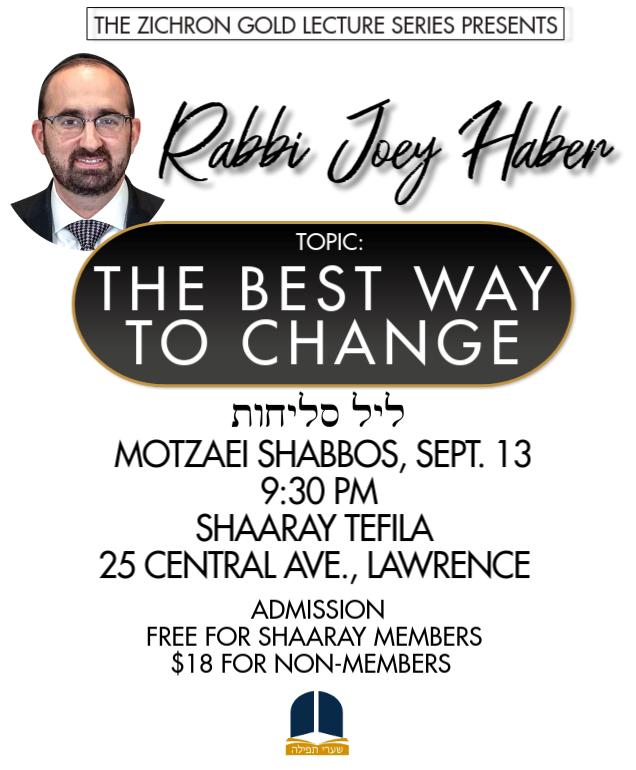



By Eliyahu RosEnBERg
“Igrew up in an apartment building in Brooklyn on Ocean Parkway and Avenue T,” Eli Levin recalls. “It was a one-bedroom apartment. When we lived there, there were eight kids in my family.”
Eli Levin’s childhood wasn’t exactly what you’d consider idyllic. Every night, he and his seven siblings would bunk out in the living room, sharing just
three high-risers and a crib. It wasn’t until he was nine or ten that his family moved to a larger place. But even then, with a big family and parents who were far from wealthy, his upbringing was still on a tight budget.
And yet, Eli Levin couldn’t have asked for a better childhood.
“It didn’t feel strange at all. We didn’t feel it was tight. In fact, back then, if
oftentimes, the challenges that seem like a rock in your way are actually signs, saying, ‘ no, don’t go that route. There’s a better route.’
if you’re dealing with something, or somebody treats you wrong, try to see the bigger picture. Remove yourself from it, and don’t let this one little thing ruin your day, month, year, or life.
Music is everything. There are so many different genres, vibes, and goals with music. But i connect to moving songs – music that touches the heart and soul.
there were only six kids at home, it felt empty. Like, we felt like everybody’s gone,” Eli shares.
Though his home was cramped, the world was his playground. Eli was an energetic, happy-go-lucky little boy, oblivious to his family’s financial hardships.
A mischievous troublemaker during his school days, young Eli adored the spotlight. He craved attention — even the not-so-good kind — and so, he’d routinely make trouble in school and have run-ins with his principals. “My poor, poor parents,” he says, half-joking.
“I’m one of 11 kids, eight boys and three girls. So, it was never a quiet day in the Levin house,” Eli fondly remembers. “I would sing in the halls. I was always into singing and music since I was two years old, probably before. But I know I was two because that’s when I ruined my mother’s Rochel Miller tapes. We had this boombox tape recorder in the closet, and I would just sing over all her tapes.”
What would the toddler sing about?
Belly buttons and all the silly things that fascinated his two-year-old mind — which is ironic, considering Eli Levin, one of the Jewish music industry’s finest musicians, is known today for his heartfelt, serious songs.
“I was a blissful, ignorant little nutcase running around, just making a big scene wherever I was, whenever,” he recalls. “As a kid, I didn’t feel like I was lacking anything. But then again, those times were simpler.”
Nowadays, peer pressure unfortunately drives many young people toward materialism, bringing with it feelings of inadequacy. But at Veretzky, which Eli Levin attended for elementary school, things were different. There, no one cared about luxury clothing brands or extravagant vacations.
“A lot of the kids in my class were probably in the same situation as I was. There were very few wealthy kids in my class, growing up,” he recalls. “There were some wealthy guys in yeshiva, but it wasn’t a focus. It wasn’t normal to expect super expensive clothing or big bar mitzvahs. Everybody just focused on regular everyday life. And I think that’s awesome.”
Eli has many gifts. For one, he’s a superstar vocalist and songwriter, as well as a sought-after performer. But aside from his musical talents, he has another inspiring quality. Eli has the rare and enviable ability to stay positive through the toughest of times. Take his childhood, for instance. Whereas many people with his upbringing would be resentful, Eli defines his childhood by its bright spots. He remembers his childhood home not as a cramped, one-bedroom apartment, but as a place of love, joy, and simplicity. And he’s also applied that same mindset to all the challenges he’s faced in life, including the unbearable ones.
Eli never really banked on becoming a musician, even though music was, for as long as he could remember, always his number one passion. He’d play any instrument he could get his hands on, and sometimes, he would perform at events. But in his mind, music was nothing more than a hobby.
Instead, shortly after getting married and joining a kollel, he set his sights on becoming an accountant. Eli promptly enrolled in accounting school.
“I loved the schooling of it. I loved studying for the CPA,” he shares. “Anyway, I was married for three years. And then, my marriage was not working, and we got divorced right as I was studying for the CPA. It was incredibly hard, but studying for the CPA sort of helped me get through it. I wasn’t really focusing on the tough part of the divorce. Because literally, for a year after my divorce, all I was doing was working during the day and studying for the CPA at night, and it got me through that time.”
At around that time, Eli also started having problems at work. Though his business was doing well, he left it behind after his business partner began mistreating him. The ordeal, at the time, seemed like an obstacle in his path. But reflecting on it now, Eli understands that it wasn’t an obstacle — it was a turning point. After leaving his business, Eli opened an Instagram account for his music, and almost immediately, his music career took off. Had that not happened, he probably would be an accountant today.
“I’m so thankful. It’s been really beautiful. I’ve had so many amazing experiences. And just the fact that every night, I could come to somebody’s party in their happiest times and add to
the joy of the evening — it feels great. I love it. It’s the biggest blessing,” he says.
Eli’s positive mindset is especially impressive when it comes to his divorce and his relationship with his ex-wife, with whom he shares a daughter..
“I’d like to say that shalom bayis is more important in a divorce than in marriage. But the truth is that it’s really important for me to be b’shalom , and it’s also important to my ex to be b’shalom. And Baruch Hashem, my parents and her parents, the Weinbergers, are both incredible people. I’m lucky that it was never a hateful, angry thing. It just wasn’t a good shidduch,” Eli shares. “There’s actually a sweet story: Rabbi Weinberger took his daughter, my ex, to a chassidishe Rebbe after the divorce. She was dealing with it, and he gave her an interesting mashal.”
“Do you like milchigs?” the rebbe asked her.
“Yes,” she responded.
“How about fleishigs?” he asked.
“Yeah.”
“But they don’t go together,” the rebbe said. “You see, sometimes you could have two good things, and they just don’t go together.”
“I like that a lot,” Eli says. “And you know, I’m constantly appreciative. I think she’s an amazing mother. I think she’s a great person. I enjoy raising our daughter together. As a marriage, it didn’t work, but today, I don’t even remember what our problems were. It wasn’t a good marriage, but I feel lucky to be divorced from such a good person.”
Baruch Hashem, just recently, Eli got remarried.

This article is based on a podcast, “Inspiration For the Nation,” hosted by Yaakov Langer. To catch more of this conversation, you can watch it on LivingLchaim.com or YouTube.com/LivingLchaim or listen wherever you listen to podcasts (just search for “Inspiration For The Nation”) or call our free hotline: 605-477-2100.
The darkest chapters of Eli’s life were marked by two tragic deaths — the deaths of Ari and Yisroel Levin, his brothers.
Around eight years ago, his brother Ari suddenly passed away. Then, in 2018, his newly-engaged brother Yisroel was killed in a horrific car crash along with his kallah Elisheva.
During Yisroel’s levaya, Eli’s father, Rabbi Shaya Levin, delivered a heartfelt eulogy, declaring that his deceased son was an Afikomen — that the family had the privilege of keeping Yisroel for 21 years but that the time had come to give him back to his Creator, pure and complete. In return for his son’s neshama, the grieving father, during his speech, asked Hashem for an Afikomen present. He asked Hashem to bring shidduchim to Klal Yisrael. Soon thereafter, a website called 10kbatayyisroel.org — which
aims to make 10,000 shidduchim — was created in Yisroel’s memory.
Eli later wrote a moving song based on the eulogy. He named it “Afikomen.”
“Till today, at almost every event that I do, people come over to me to say they listen to that song and they cry,” Eli shares. “I remember crying when I was writing it. Recording it was one of the hardest things to do. I couldn’t get the words out. But I knew it was going to be touching to everybody.”
Indeed, Eli Levin’s music is soulful and moving. Admittedly, he wishes he could put out more “fun, lively, jumpy music” — songs that are more exciting than soul-stirring. But that doesn’t come naturally to him. Instead, by default, he gravitates toward songs that inspire listeners, touch hearts, and speak to the soul.
And isn’t that what music is all about?

Moderated by Jennifer Mann, LCSW of The Navidaters

Thanks in advance for taking the time to answer my question.
I’m 26 years old and have been dating for four years. I find it hard to find the right niche of what I’m looking for. I was recently introduced to a girl at a wedding, and I wanted to go out with her; she’s already interested. My parents wanted to look into it first. After looking into it, they said no. They reasoned with me that the girl doesn’t “shtim” with our family, as she is from more of a simple background and we are more balabatish. Honestly, I could not care less. Why does everything have to be about good optics?
I sat down with my parents to discuss it, and they said there is just no way. They’re the type of family who will want to budget and find the cheap wedding vendors. What will their friends think if we have a wedding like this? I want to get married, and this girl seems/looks like a great prospect for me, which doesn’t happen often.
What can I do now? Is there any way for me to get around this without my parents disowning me?
Thanks, Dani*

Dear Readers,
We want to offer YOU an opportunity to be part of the discussion! Please email us at MichelleMondShadchan@gmail.com, subject line “reader’s response,” if you would like to participate in the new “A Reader’s Response” columnist spot. We will send you a question and publish your answer in an upcoming Navidaters edition.
If you have a question you would like the Navidaters to answer, please reach out to this email as well.
Looking forward!
Michelle, the “Shadchan”
Rebbetzin Faigie Horowitz, M.S.
You are making this sound like an allor-nothing situation in simple, black and white terms. We don’t know any of the context here. You don’t know whether
you will marry this girl, either.
It’s time to start a more substantial dialogue with your parents about your goals in life, marriage, and the type of community you hope to live in. Part of this vision for your future includes values, level of observance, and hashkafa . Obviously, your future wife will have input as well, but your sense of your future should be clear to you and clearer to your parents

over time. If you can be self-supporting from the get-go, it will help your parents understand that your independence must happen in order for you to establish your own family unit. At the same time, you want to remain part of their unit as well, celebrating yom tov together and joining in simchas. Stress that you want to give them nachas long term as well.
Start the process of dialogue with your parents and get some help if you find you need it.
Michelle Mond
Dear Dani,
I’m so sorry you are dealing with this difficult predicament right now. It is so frustrating to know what is best for yourself, only to have family stand in the way.
You’re caught in the middle between honoring them and honoring yourself.
It is the ultimate pain. Not only are you being kept from pursuing what you feel is right, you are walking around feeling like your family simply does not understand or support your choices. For parents like yours, optics is everything, but what about substance? What about depth? What about their son settling down with an amazing young woman? You have not even gone on one date yet, and they are thinking of the wedding vendors.
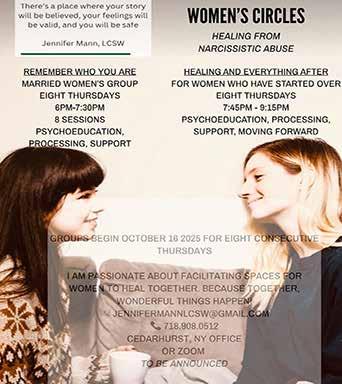
If your intuition is right, and this shidduch gets to the chuppah, your parents can offer to upgrade the vendors to their liking. This is NOT something they could do with a young woman herself (imagine a build-a-bear style shidduch where one can upgrade qualities to make her perfect for you).
You need to have a heart-to-heart with your parents in the way they can actually hear it. Speak to your parents’ rav and explain the situation and have him mediate a meeting with all of you. It is important that you bring in someone they revere as part of this conversation. If the questions in this column have taught our readership anything, I hope it’s this simple piece of advice. Don’t hijack your child’s/friend’s/sibling’s shidduchim!
Dr. Jeffrey Galler
The obvious approach here is to enlist some advocates on your behalf. Perhaps an influential and respected
rabbi, or aunt, or uncle can help convince your parents to allow you to date the girl who makes your heart sing, rather than someone they deem appropriate.
But a key question is your financial independence. If you’re completely dependent (financially and otherwise) on your parents, you may have little choice but to follow their rules. If you are independent—or can become independent—it’s a different story.
For the first time, you’ve found someone you genuinely like. So, what should you do?
First, you need to really, really understand your parents. They come from a perspective where appearances, family expectations, and social norms carry enormous weight.
Second, acknowledge their concerns but explain why this girl is a uniquely suitable match for you. Highlight that when they get to know her, they may see the respect, honor, and happiness she can bring to the family. Enlisting a local, influential rabbi to support your case can help.
Third , propose an experiment. Ask for permission to go on a couple of dates.
The Navidaters
Dating and Relationship Coaches and Therapists
Ican hear how painful and frustrating this situation feels. It’s sad when family values center so much around appearances and “what people will think” rather than who you are, what you want, and how someone makes you feel. At the same time, your parents’ opinions are clearly very strong, and you’re caught in the middle between honoring them and honoring yourself.
One thing I want to say clearly: you have agency here. At the end of the day,
Reality often differs from fantasy—perhaps you won’t really like her; perhaps she won’t really like you. But if you both get along well, you can continue the conversation with your parents.
Finally, many have faced this ageold dilemma: balancing parents’ idea of “proper optics” with your own desire for happiness. It can be a struggle to do what is right for you, while, at the same time, continuing to honor your parents.
Remember, though, when it comes to finding the right life partner, the most important thing is not how the wedding looks but how the marriage feels.
Good luck!
Barak Sonenthal
It’s unfortunate that your parents don’t want you to go out with this girl, but at the end of the day, it’s your decision who you marry. You can’t only go out with girls that your parents approve of – especially not when they’ve shown that their priorities are so misguided.
If your parents have a rav that they
Reality often differs from fantasy.
trust, I would encourage you to reach out to him and see if he can assuage their concerns.
But if not, then how you proceed will depend on what you anticipate from your parents:
If you think they will eventually warm up to this girl, then start dating her now. You don’t need to ask your parents’ permission to date a girl you are interested in. You’re 26. If, however, you suspect that your parents will have a more extreme reaction if you two were to get engaged, such as no longer speaking to you or cutting you off financially, then you have to think deeply about whether you — and this girl — would be able to handle such a challenge. I would suggest in that case that you find a rav or mentor that could help guide you through those decisions. Wishing you all the best.
this is your life and your mar - riage. You are the one who will live with the choices you make – not your parents, not their friends, not their community.
I’d love to ask you some gentle, thought-provoking questions: What does “a good match” mean to you, beyond optics and family expectations?
If you picture your life five or ten years down the line, what qualities in a partner would bring you peace, joy, and stability? How much weight do you want to give to your parents’ approval in the story of your own life?
And if you imagine the part of you that longs to be a loyal son and the part of you that longs to choose freely for yourself, what do those two parts say to each other?
Sometimes, exploring these different parts inside of you can help clarify what feels truest. There’s no judgment here because it makes sense to want your
parents’ blessing and also to feel pulled toward someone who excites you. Holding both is hard.
You don’t need to rush to an answer. But perhaps the deeper question is: if you silence your own voice to keep the peace now, what does that mean for the rest of your life? And if you honor your voice, how might you carry yourself in a way that still holds love and respect for your parents, even if they don’t agree?
I hope you reach an answer that feels right for you and honors all your parts.
Sincerely, Jennifer

By Mordechai Schmutter
As a high school language arts teacher, the worst part of my job is marking essays.
And yes, I know other teachers have to do it, too. But if a history teacher notices that words in the essay are spelled wrong, he can just ignore it because it’s not his problem. A history teacher can say, “Does the essay make sense? I don’t know. But it has a lot of the words that I want to see, so we’re good.”
But as a language arts teacher, that is my problem. I can’t say, “We’ll learn how to spell those words eventually.”
There are millions of words. And if any of those are spelled wrong or used incorrectly, that is my problem. I don’t know why language arts teachers teach vocabulary, because that just increases the number of words that the students can spell wrong.
So perhaps you’re thinking, “What if my classroom got computers? That would make it easier to mark things, right?”
That’s what I figured. I got laptops in the classroom a few years ago, and as far as the issues I was having marking essays, I cannot overstate what a difference the computers make, in that I have different issues now.
For example, for years, I was throwing out my back marking essays, hunched over, reading tiny scrawled words and then having to write even tinier scrawled words between those words, only to have the students say, “I can’t read what you wrote!”
You can’t read what I wrote? I at least spelled it right.
See, if something isn’t legible, you can often tell what it says by making out a couple of letters and getting the rest from context. But if the context doesn’t make sense either and there are some letters that shouldn’t be there…
“I can make out an I. What word did you mean to write?”
“Women.”
But yeah, not all my comments were clear. My students would say, “Mr.

Schmutter, what did you mean when you wrote that this sentence is ‘awkward to read’?”
“I meant that those were all the words I could fit in that space.”
But now that we have computers, I can write a whole long footnote explaining what’s wrong with it, with carefully-worded suggestions of how to make it better. And then those students can say, “I’m not reading a whole footnote. Are you kidding me? Mr. Schmutter, what does this say, in your own words?”
“Those were my own words.”
The thing is that footnotes are easily countable, so the kids get overwhelmed.
“How come that kid didn’t get as many footnotes? I think you like him better because he behaves and pays attention and puts in more work the first time around.”
But at least I don’t have to read handwriting anymore, right?
Well, there are still worksheets.
Also, they spend a lot of their computer time trying to choose the perfect font for their essay – often one that looks like handwriting. This is the most exciting thing for them about comput-
ers: that they get to choose a font. Even though when they were handwriting the essays, they could technically write it in any font in the universe, and they all chose messy and small. I have a student who once chose all the fonts. 300-word essay, 300 fonts. Impossible to read. The first thing I did before reading it was hit CTRL-A and turn it all into Times New Roman. He got the essay back and said, “You ruined all my hard work!”
This is all your hard work?
I knew it was not an amazing essay. And I say this because now that I can read all the words they’re writing, I have come to the realization that I was maybe happier when I couldn’t.
I don’t know if students’ essays have gotten worse over the years, or if they were always this bad and I can just read it now. Or if they’re putting in less work because of the computers. They think, “Eh, spellcheck will catch everything. I can sit back and play with the fonts, and the rest will write itself.”
I don’t know where to begin. I have to write comments like: 1. These three words in your sen -
tence are still spelled wrong, somehow.
2. Also it’s missing punctuation. No period, at least?
3. Also I’m not sure what’s going on in the sentence.
4. And it doesn’t seem to have anything to do with the paragraph that it’s in.
5. And I think the paragraph is in the wrong place in the essay.
6. And also there’s nothing in the essay that tells me that you were interested in your topic.
And the student reads the comments and says, “So you want want me to correct the spelling, add punctuation, then delete the sentence, replace it with a new sentence somewhere else, move the paragraph somewhere else but not in the same place as the sentence, and then come up with new ideas for the topic and start over?”
“Pretty much.”
“If I have to rewrite the sentence, why did you tell me that the words I used were spelled wrong?”
“Welcome to my life! It’s in case you ever use them again.”
So what a typical student does at that point is fix the spelling, add a period, move the sentence and the paragraph to even worse places, and say, “There – I made 2/3 of the corrections. That’s at least a 67!”
I had one student last year who wrote an essay called, “What If Oranges Could Talk?” The oranges did not say one word the entire essay. They did move around, though. Like the orange was hanging on a tree, and he saw a person coming at him with a knife, so the orange, quote, “ducked to avoid it.” So one of my questions was, “How does an orange duck?” Picture an orange. Now picture it ducking. What is the difference between the two pictures?
“I don’t know. That is all the thought I’m putting in here.”
And this harvesting scene happened when the orange was a few years old, by the way. Years. After a sentence about
how, growing up, the orange used to play in the orchard with his friends, which I think leads the reader to assume that the orange was no longer attached to the tree.
But the essay didn’t have to make sense, because, “Eh, the spellcheck is going to catch it.”
But at least the essays get done faster, right? For the kids that know how to type.
Not really. Every day, the students have to get their computers from the safe upstairs in the principal’s office and wait for them to boot up and/or perform an update. And every single day someone deletes their entire essay by accident. Usually by saving a blank document over it at the beginning of class.
And it’s not like they show up with computers right when class starts. They’ll walk in without a computer and say, “What are we doing today?”
“We’re in middle of writing an essay that we’ve been writing for the past six days.”
Do you think a kid who forgets that he’s in middle of an essay is going to then remember what he’s written so far?
No. Yesterday the orange was off the tree, and today it’s back on. That kid who wrote about “What If Oranges Could Duck?” toward the end of his story, there was an orange from a different orchard with the same name as one of the oranges at the beginning of the story.
“Eh, spellcheck is going to catch it.”
change his given name for the sake of the story so your reader is less confused?
(Yes, I think it’s possible that the student I’m writing about is reading this article. But I can always claim that this is a different student who wrote about what if oranges can talk but don’t.)
I know this isn’t their first year us -
Now that I can read all the words they’re writing, I have come to the realization that I was maybe happier when I couldn’t.
So I asked him about it. I said, “Clearly, you forgot what you’d written, but why didn’t you at least reread the story?” And he tried to pretend he did it on purpose. He said, “What? Two oranges could have the same name.”
This isn’t real life. Why don’t you
ing computers. When most of these kids were in elementary school, they had to type their essays, too. I know this because my kids were in the same school. And I had to type the essays. I think what throws them is that now it’s mesivta, and they don’t go home ev-
ery night, so no one’s parents are typing it. Even a good parent who’s letting his kid come up with the words is at least prompting the writing choices and putting in punctuation the kid didn’t ask for. And the teacher isn’t really nitpicking on that. I’d rather read essays by the parents, who are going to pay attention to my corrections and are the ones paying for this education anyway. Also, if you correct a kid, he graduates from your class, and the next year you have another kid who doesn’t know the thing you already taught the first kid. Whereas with parents, if you have your student’s younger brother the next year, the parents are back with the knowledge you gave them before. It’s a much better system.
So I think we should assign the essays directly to the parents. They at least have their own computers.
Mordechai Schmutter is a freelance writer and a humor columnist for Hamodia and other magazines. He has also published eight books and does stand-up comedy. He can be contacted at mschmutter@gmail.com.

By Sara Rayvych, MSEd
My father-in-law shared with us the loneliness that often accompanies being elderly. It was difficult hearing him describe the intense emotions that come with age. I had to agree when he suggested this might be an appropriate topic for an article.
The loneliness of the elderly isn’t really a topic for a parenting article. It’s an important discussion but not one for this column. But teaching children sensitivity to others is definitely an important par -
enting topic. I also felt we could expand the discussion to include ensuring children themselves aren’t lonely. Even when surrounded by dozens – even hundreds – of other children, there are many who will still feel alone.
Human beings are naturally social beings. We live in families and as part of a greater community. A big part of being frum is living in a community surrounded by others. Minyan, kiddushim and other simchas are all communal and


require others. We were never meant to live alone.
Children are very sensitive to how their peers treat them. It’s these vulnerable youngsters that certainly need others in their life. They need their loving adults, but they also require friends.
It’s extremely painful to feel alone. For those going through difficult times, just having support is a major part of their healing. As Klal Yisroel, we are more than just social beings; we are meant to be a united nation. We are supposed to be there for each other and provide the support and comfort that can only come from other people. Often, it’s having that awareness and taking a small step towards another person that can make a tremendous change in their life.
There are two main categories of loneliness. The first category is the one we may think of first, and this is the one my father-in-law was referencing. In this situation, a person does not have others around them. Perhaps they live alone, are sick or are homebound, chas v’shalom. Maybe a child lives far from their friends and can’t have Shabbos playdates. They may feel forgotten being so far away from others. In these situations, they are lonely because they are literally alone.
The second category is trickier to notice. These are individuals that are fully surrounded by others yet are still alone. Maybe others notice them, maybe they don’t. A child can be in a playground surrounded by hundreds of children, yet they
may still be lonely by themselves. This is painful in a different way. They may have all the noise and chatter of others, yet they are virtually invisible to them. There are many reasons a child may be alone, even when surrounded by others. Some kids are naturally quieter, more introverted or shyer. Their personalities make it harder for them to interact or join larger groups. Even if they have close friends, they may find it difficult to be in a crowd or with many other children. Similarly, some children are naturally more popular than others. This, by definition, means that some children will be less popular than their peers. It’s important to remember that what defines popularity can be a rather subjective criteria.
Children are newer to the world and lack the maturity to recognize the natural variability that Hashem put into this world. There are children that appear different to their peers. It may be a physical difference, social behavior or anything that children perceive as “different.” It’s important to note that being “different” isn’t necessarily a bad thing. Also, a child doesn’t have to actually be “different” for children to view them that way. There are many different family and other life situations that exist, and it’s unfortunate how people can judge others by these often uncontrollable circumstances. Children should not be punished by being ostracized or avoided. There are times when a particular child’s home may not be an appropriate place for your child. In these unfortunate situations, we certainly can’t risk our own
children, but the child can still be invited over or included in group activities.
There are times when the child themselves is a risk to other children. In these challenging circumstances, it’s important to reach out for expert advice to guide us in protecting our children while being appropriately sensitive to others.
There are so many ways to include others, and I’ll suggest just a few options. The circumstances will often dictate the appropriate solution. We should also teach our children how this is another way of performing the mitzvah of chessed.
Children should be encouraged –but not forced – to include others. The amount of encouragement depends on the reasons a child is hesitant. For example, a child who is naturally shy may become very stressed and pained having to reach out to someone else. We certain-
Many children feel unwelcomed to join a group – whether for recess or any other activity – until they’re invited. Simply saying to a child, “Come join us” is a major step towards encouraging a hesitant child to join.
Mishloach manos, birthday parties, “sukkah hops” and other yom tov affiliated events are all opportunities to reach out to others in a way that is less awkward for the children. For example, giving a mishloach manos takes minutes, doesn’t require more than a quick “Purim sameach,” but will give such simcha to the thought-of child.
Birthday parties, bar/bas mitzvahs and other group events should never include only part of the class. Either limit the invitations to a close friend or two, or invite the entire class. Schools will often have guidelines for this potentially tricky situation.
It can be uncomfortable for children when they are first asked to speak with a new child. Many children will benefit
Even when surrounded by dozens –even hundreds – of other children, there are many who will still feel alone.
ly don’t want to hurt our own sensitive child. This is in contrast to a child who is inherently very social but thinks the other child “isn’t cool.” These children could benefit from learning to see others for who they are and not judge based on superficial criteria.
Our generation is fortunate to have many remote options to keep in touch with those outside our immediate physical daled amos. Grandparents and elderly relatives, in particular, may enjoy a pre-Shabbos or weekly call. Phone calls, video chats, voice notes and text messages are all ways to keep in touch when you can’t visit personally. This can be especially helpful when one of the people is out of the country or immuno-compromised. It can also be a more comfortable option for children who are shy in-person.
Elderly people, in particular, benefit from visits. Nursing homes, hospitals and shut-ins may all appreciate the joy sweet children bring. Please confirm with the facility before visiting, and don’t bring sick children.
from role-play or being provided with sample texts of what to say. It’s better to keep it simple and uncomplicated. “Smile and say, ‘Happy Purim,” when you hand her the mishloach manos.” This is less frightening than feeling the need to have an entire conversation. “As you hand her the invitation, smile and tell her you want to invite her to your birthday party.” “Why don’t you leave a voicenote wishing Grandma a refuah shelaima?”
As we begin Elul, we can come into the yomim noraim showing Hashem that His children are united and caring for each other. Our actions can demonstrate how we are one nation that shares one heart. May we always have peace within our homes and among our nation.
Sara Rayvych, MSEd, has her master’s in general and special education. She has been homeschooling for over 10 years in Far Rockaway. She can be contacted at RayvychHomeschool@gmail.com.

It’s 10:37 p.m. The night before school starts. You’re still peeling stickers off brand-new notebooks, hunting down a missing pair of navy socks, and trying to figure out how your third grader’s supply list adds up to six different folders in colors you don’t own. The kids are bouncing off the walls, too excited— or too nervous—to sleep. Your phone is buzzing with too many updates from the class chat. You’re already exhausted for tomorrow.
This is the real back-to-school season. Not the shiny ads with crisp uniforms and smiling kids. The real season is moms— being pulled in every possible direction at once. You’re making sure each child’s needs are seen: the one who melts down over homework, the one who’s terrified of a new teacher, the one who suddenly outgrew every pair of pants overnight.
You’re working—full-time, part-time, or in the stolen hours between pickups. You’re managing bosses, clients, or endless emails while mentally keeping track of which kid has gym today.
You’re also living your own life stage. Maybe you’re trying to conceive. Maybe you’re postpartum and running on two hours of sleep. Maybe you’re sandwiched between caring for your kids and checking in on aging parents. And layered over it all are finances, family dynamics, and the never-ending effort to remember your own physical and emotional needs. Whatever it is—you’re expected to keep moving.
And on top of that? The house has to run like a mini-supermarket. Milk in the fridge. Supper on the table. Snacks in the cabinet. Always ready for whoever walks in hungry.
On top of that, there’s the invisible pressure: showing up for simchas, managing playdates, keeping the kids looking somewhat “put together.” Because heaven forbid anyone sees the missing button or the ketchup-stained skirt. Add to that

By Bassy Schwartz, LMFT

the pressure you quietly carry about the things you “should” be doing but can’t get to: keeping up with exercise, making healthier meals, staying on top of house projects, keeping up with all of the WhatsApps, keeping a social life, or maybe even learning something just for yourself. Those lists of “someday” and “maybe later” keep piling higher until you almost
while neither of you is at fault—you’re both just trying to stay afloat—the distance can start to sting. You want to be more present, more playful, more connected. But by the end of the day, there’s nothing left in the tank.
It’s no wonder so many mothers feel worn down. This isn’t just “being busy”— it’s a nonstop rhythm that rarely lets up.
This isn’t just “being busy”—it’s a nonstop rhythm that rarely lets up.
forget what you actually enjoy outside of running your family.
And in the middle of it all—your marriage. The relationship that gets pushed to the bottom of the list when you’re already running on empty. You love your spouse, but some days, the two of you feel more like business partners managing a household than like a couple who once stayed up late talking for hours. Date nights get canceled, conversations get cut short, and connection slips through the cracks. And
By the time your head hits the pillow, your body aches, your mind is still spinning, and you’re left wondering quietly: Am I supposed to be able to keep this pace? Is everyone else handling it better than me?
Here’s the truth: you’re not failing. You’re carrying more than anyone should. And you deserve better. You deserve mornings that don’t feel like combat. Evenings that don’t end in guilt. Days that leave room for you to breathe, laugh, and feel like yourself again. That doesn’t mean
life becomes picture-perfect. It won’t. Kids will still forget homework. Suppers will still burn. Carpools will still make you crazy. But there’s a world of difference between constant survival mode and a life where you feel supported, grounded, and not so alone.
If you’re reading this and thinking, That sounds great, but I don’t even know where to start, you’re not alone. That’s why we created our Overwhelmed Moms Group at Core Relationships, with a new cohort forming this September. This isn’t just a place to vent (though there will be plenty of room for that). It’s a process-focused group, where we slow down together and really look at the patterns underneath the overwhelm. We explore how you show up in relationships, how you care for everyone else while neglecting yourself, and how you can start shifting those dynamics in real, lasting ways. Yes, you’ll get support. But you’ll also gain insight, awareness, and tools to change the way you live and mother. Because the truth is, your kids don’t need a mother who does every single thing. They don’t need perfectly packed lunches or spotless uniforms. What they need isn’t a perfect mom—it’s a mom who breathes, cares for herself, and then has the space to connect, laugh, and hug them on the way out the door.
Bassy Schwartz, LMFT, a licensed Marriage and Family Therapist, trained in Emotionally Focused Therapy, brings a compassionate and unique approach to her practice – focusing on couples and individuals dealing with conflict and disconnection due to childhood emotional neglect and complex family dynamics. Bassy empowers clients to harness their inner strength and authentic selves to achieve meaningful relationships beyond what they could have ever imagined. Reach her directly at bassy@corerelationships. com or WhatsApp (347) 309-5362.

By Sorah Coriat, LMHC
If my backpack could talk, it might sigh under the weight of binders, whisper about which teachers to expect, or worry about whether I’d be in the same class as my friends. Mostly, though, it would have plenty to say about the kids who carry it — their hopes, their jitters, and the everyday ups and downs of school life.
And while backpacks don’t actually talk (unless you’ve been up too late labeling folders), parents can still tune in. With a few strategies, we can make the back-to-school season smoother and little less overwhelming — for our kids and parents. Here are some backpack-approved tips
1. Lighten the Load
Sit with your child before school starts and go through their backpack and supplies together. Check off what’s ready and what still needs to be bought.
Supplies labeled? Check. Pencils sharpened? Check. Leftover granola bar from last June? Toss it.
Labeling and organizing as a team fosters responsibility and helps calm common worries like, “Do I have everything?” When kids feel prepared, they walk into school a little taller.
2. Ease into Bedtimes and Wake-up
The shift from summer nights to early mornings can be brutal. Start adjusting gradually the week before school — earlier bedtimes, earlier wake-ups — so that first Monday doesn’t hit like a shock.
3. Build Morning Routines That Work
Let’s be real: mornings can feel like Olympic events. Instead of a daily sprint, set up a routine and checklist (kids love checking boxes; bigger kids appreciate it, too!).
Predictability lowers stress and helps kids step into school calmly instead of frazzled.
Pro Tip: Prep at night. Clothes out,

snacks packed, shoes located before the morning scavenger hunt. It may feel like extra work at bedtime, but it saves you from shouting, “WHERE’S YOUR OTHER SOCK?” at 7:59 a.m.
4. Balance Screen Time
For older kids, back-to-school often means back to homework. Setting expectations early — homework before gaming, phones charging outside the bedroom — prevents battles later and creates healthier rhythms from the start.
Pro Tip: Kids are more likely to follow routines when its collaborative. Include
nerves are as normal as missing socks on a Monday morning!
Remind them that lots of kids (and adults!) feel the same way about new teachers, classmates, or routines. Share your own “first-day jitters” stories to show them worries are temporary.
Don’t rush to cheerlead or dismiss the nerves — brushing fears aside often makes it bigger. Instead, give them a phrase to carry with them, like:
• “It’s not hard; it’s just new.”
• “A little nervous means you care.”
• “It’s okay to feel nervous — it will pass.”
Share your own “first-day jitters” stories to show them worries are temporary.
your older child in the digital planning
5. Fuel More Than Lunchboxes
A healthy breakfast matters — but so does emotional fuel. Think: a goofy joke, a yummy hug, or a sticky note in the lunchbox. This gives kids the confidence boost they need to face the day.
6. Normalize the Nerves
If your child is anxious, don’t panic —
Sometimes, the best help isn’t fixing the worry but simply listening.
7. Create a Home-School Bridge “Good.” That’s often the end of the “How was your day?” conversation. After school, resist the urge to dive straight into homework talk. Give kids a little time to decompress. Then try open-ended questions:
• “What emoji would you use to de -
scribe today?”
• “Did anything weird or surprising happen?
• “Who did you sit with at lunch?”
• “How did you feel about your new class?”
Remember, some kids hop off the bus ready to deliver a TED Talk, while others need time to just… be. Neither is wrong.
Note to self: If your child isn’t talkative right away, it doesn’t mean they don’t care. It can mean they’re still processing their day.
8. Partner With Teachers, Not Against Them
Your child’s teacher has their own backpack stuffed with lesson plans, names to memorize, and 24 kids asking for bathroom breaks at once. Approach them like teammates.
A quick check-in email or kind word can set the tone for the whole year. If you’ve got something important to share about your child – a strength, a challenge, or a unique learning style — share it early in a collaborative spirit. When parents and teachers work as partners, kids thrive.
Parents carry invisible backpacks, too — work deadlines, dinner plans, worries, and, of course, the never-ending laundry. Give yourself permission to breathe, pause and connect with other parents for support (yes, laughing at pickup counts). When you care for your own “backpack,” your kids learn that self-care belongs in the lesson plan.
Final Note: If my backpack could talk, it might say, “Relax — you don’t need to carry it all at once. Just what’s needed for today.”
Sorah Oppen-Coriat, LMHC, is a psychotherapist in Hewlett, NY. She helps teens, adults, and couples navigate life’s ups and downs — with tools that work and humor that helps. She can be reached at 516-284-9347 or at sorah.coriat@gmail.com.

By Etti Siegel

Q:Dear Etti,
It is a cliche because it is true: I dread back to school. I dread the hectic rush in the morning, the tears, the last-minute “I forgots,” no matter how hard I try to plan ahead. Give me a magic wand, and if you can’t give me that, at least give me some strategies to make mornings this year better and smoother.
- Last Minute Mom
A:Dear Last Minute Mom, Oh, how I wish I could hand you that magic wand. If it existed, it would likely be glittery, coffee-powered, and capable of finding lost shoes and matching socks at 6:45 AM. But even without magic, there are very real and very doable strategies to help you transform chaotic mornings into relatively calmer, more manageable ones.
Here are some strategies that worked for me and work for young moms I reached out to:
Set the Stage the Night Before: The real secret to calmer mornings? They begin the night before. Here’s what can happen in the evening to set up a smoother morning:
• Lay out clothes (including socks, shoes, and accessories) to eliminate wardrobe indecision.
• Pack backpacks completely with homework, notes, library books, and signed forms.
• Prep lunches/snacks or delegate this to older children.
• Create a visual checklist your child can follow independently in the morning (e.g., get dressed, brush teeth, pack snack, put on shoes). For younger kids or those with executive function challenges, post visuals or photos near the task areas (a picture of teeth brushing taped near the sink, etc.).
• Run a “bedroom sweep” to gather what tends to disappear, like hoodies, permission slips, and earbuds.
Bonus tip: Let your child help create a laminated checklist they can mark with a dry-erase marker each morning.
Ease the Transition with Clear Routines: Transitions are tough for many kids, especially first thing in the morning under time pressure. But routines can help reduce resistance and provide a sense of safety.
• Use a consistent wake-up time, even on weekends, during the first few weeks of school to reset your child’s internal clock.
• Limit any and all screen time in the morning. Yes,

that includes your phone. While screens may keep kids quiet, they also prevent focus, delay transitions, and can lead to explosive moments when it’s time to turn them off.
The
to calmer mornings? They begin the night before.
• Build in “buffer time.” Leave a small window (5-10 minutes) of calm before the door opens, maybe time for some cuddling, a quick conversation, or a calming breakfast playlist.
Start With Essentials, Then Add the Extras: Especially in the early weeks of school, focus on the must-dos, not the picture-perfect mornings we sometimes expect. According to Dr. David Anderson of the Child Mind Institute, the real win is when your child is fully dressed, has eaten something nutritious, and has brushed their teeth
If those basics are in place, you’re winning. Once those become habit, you can layer in the extras that are important to you: making the bed, organizing materials, and remembering backpacks, lunch and snacks, and permission slips without being asked.
Use Incentives and Celebrate Progress: Motivators can be powerful tools, especially for younger children or those who are not morning people (no judgment—we’ve all been there).
• Offer simple, time-based rewards: “If we’re all ready by 7:30, we’ll have time to play Go Fish for 5 minutes before the carpool.”
• For older kids, consider point systems where they earn small privileges (dessert choice, a later bedtime one night) for completing morning tasks independently and on time.
• Celebrate small wins. “You remembered your backpack and your shoes today—that’s amazing!”
Positive reinforcement builds confidence and helps kids feel competent, not constantly nagged.
Create a Calm Emotional Climate: It’s easy to slip into yelling or snapping when everyone is rushed and tensions are high. But a calm tone helps everyone regulate better—especially children with anxiety or ADHD, who can escalate quickly under pressure.
• Keep your tone calm and direct.
• Offer choices when possible: “Do you want to brush teeth first or get dressed first?”
• Avoid rushing at the last second. If your child is dawdling, narrate the process gently: “I see it’s 7:25. We want to be out by 7:35. What do you still need to finish?”
Watch for Red Flags and Advocate: If your child is having daily meltdowns, anxiety, or physical complaints in the morning that persist beyond the first few weeks, don’t wait to seek help. Talk to their teacher, school counselor, or a therapist. Morning battles can sometimes mask deeper school-related stress, sensory issues, or even mental health challenges.
Let Go of Perfection: Not every morning will run like clockwork. Some days the breakfast will spill, the socks won’t match, and someone will cry (it might even be you)…but those moments don’t define your parenting or your child’s success. What matters is the pattern, not the outlier.
Keep showing up. Keep adjusting. Keep laughing when you can.
Back-to-school doesn’t require magic wands, just structure, empathy, and a little preparation. And even without a magic wand, I have a feeling you’re going to surprise yourself this year.
You’ve got this.
- Etti

By Yael Stern

There is an ancient practice in Japanese culture called “Kintsugi,” in which the broken shards of a piece of pottery are reconnected by filling in the cracks with a unique golden powder. The practice is based on the idea that a piece of pottery, which has been broken, once mended, is far more beautiful than the original, unbroken piece of pottery. In this process of recreating the shattered object, the cracks are not only not hidden but are instead deliberately highlighted to show that it is specifically these flaws that make that repaired piece of pottery so beautiful. The formation of an imperfect whole through the reunification of its parts is lauded and celebrated.
When two families are united by the marriage of the parents, the result is referred to as a “Blended Family.” This family structure is unique in that it is comprised of adults and children, some of whom are biologically related and others who are not. When you are a member of a Blended Family, your family unit is unique, rather than typical.
Be it through the loss of a spouse/parent or the divorce of a parental unit, both families within the Blended Family are no longer what would usually be referred to as
“whole.” In some way, they are each “broken.” Even when the families join together, there are obvious and undeniable “cracks.”
The goal is to mend those cracks through genuine acceptance and understanding.
Just like in Kintsugi, the blended family is a beautiful, imperfect structure (resulting from divorce, loss, etc.) that through its efforts to come together has the potential to become a magnificent structure. In the process of unifying the Blended Family, acknowledging, and embracing its inherent imperfections is essential in the healing of each family member as they work together to create their new version of “wholeness,” on both an individual and collective level. Success in reconnecting the various parts of a blended family is far more likely when the differences, the cracks, are positively highlighted and celebrated. The cracks, be they loss, painful wounds, aching hearts, etc., provide the space where the gold can be poured and genuine healing and connection of the once fragmented parts can occur.
In other words, the imperfections that are intrinsic to the blended family are considered part of the process of it becoming a unique “whole.” By not whitewashing the realities inherent to their situation, the
blended family is given an opportunity to live a more honest and authentic existence.
There is so much to learn from this parable of Japanese practice, most notably in the difference between the typical family and the blended family.
In a typical biological family structure, even one that has issues, there is the ability to act as if there are no cracks or to cover up any such cracks with the hope that no one will notice them. But it is simply impossible to entertain the notion of a blended family being perfect because the factors that have led to its members’ participation are predicated on something that has become broken, either within them or within their world. Therefore, it is futile to deny its obvious imperfections.
In a society that often lauds perfection and conforming to the masses, being part of a Blended Family gives each person the golden opportunity to portray something that is far more realistic than the notion of perfection: the journey of a growth process rooted in honesty, authenticity and at times, very raw emotion. It is not the final product, the picturesque family unit, which they aim to depict, but rather the transformative process that they endure to create and strengthen deeper connections within
themselves and with one another.
True greatness is not found in the limelight and certainly not amongst the facade of perfection, but rather, in the cracks of the heart that have chosen to heal from its wounds and the foregoing of anything that inhibits the process of becoming whole again.
Relationships within a Blended Family, unlike in a biological family, are not formed naturally and automatically. Blended families are unique in that they are created because of a superficial coming together due to unnatural life events (like divorce and loss) and can come with a highly dissimilar set of rules and differing interpersonal dynamics. Unlike biological families, they are not bound by DNA, lifelong memories, back-and-forth negotiations, and naturally occurring common ground.
It takes a great deal of humility, self-awareness, and forgiveness to advance along the journey that the Blended Family will traverse.
In a healthy Blended Family, each person feels increasingly “Safe, Seen, Soothed and Secure” and the focus remains on the notion of healing for everyone involved. As the two separate family systems learn to coexist emotionally, and often physically,
members of both families are encouraged to be vulnerable and feel comfortable to take chances and show up as their true selves. They are empowered to voice their feelings, ask for their needs, make mistakes, and adjust at their pace.
A nurturing environment such as this one promotes compassion, respect, and acceptance for the often-obvious differences between the two families (i.e., cultural, and religious views, upbringing, etc.) and facilitates the formation of truly authentic relationships between them.
Members of a blended family carry with them pain that may never fully heal, however, with patience, dedication, and effort, it is precisely that pain which can spur the creation of highly reparative family dynamics.
In this way, those who are courageous and fully immerse themselves in this wholesome and reparative process can reshape their perspective.
The following reminders can be helpful and provide clarity for those who find
not the one who cracked it.
7. Be curious and have compassion for the way others are coping. Highlight the cracks – fill them, which is your opportunity for yourself and/or them to heal, and bring the pieces/people back together. Acknowledge their wounds. Validate their experience of the situation. It cannot be fixed, but you can create something new.
8. Blending a family is a process of constant healing wherein the pain is real but does not define a person/ family and does not represent its entirety.
9. It is normal for anyone in the blended family to ask these kinds of questions and others like them:
“What are my fragmented parts?”
“Where am I feeling fragmented inside?”
“Why am I feeling fragmented inside?”
“Where is my place?”
“Where does my piece fit within the blended family unit?”
“What is my role in the blended family?”
The goal is to mend those cracks through genuine acceptance and understanding.
themselves in the process of blending a family:
1. The couple must have a good relationship with one another so that they can offer the family the required stability. The couple must be ever cognizant, understanding, and patient, recognizing the challenges the kids are dealing with.
2. Each parent must find a way to communicate with one another as well as with their biological and stepchildren and work to blend the family.
3. Both parents and children must be on board with the family situation and take responsibility for their own actions, expectations, and mental and emotional health and wellbeing.
4. There are many different versions of success within the reality of Blended Families.
5. Do not pretend that the vessel never broke and do not try to repair it to exactly what it was before the cracks occurred. The cracks are there, and they are a reality. You cannot undo the cracks, but you can connect the fragmented pieces. Healing is in the coming back together of an individual or family’s fragmented parts.
6. Do not blame yourself or others (i.e., spouses, children) for the cracks. You are
“Does my opinion matter?
“Do I matter?”
(Note: You and/or the other family members may need a professional to help you to examine and understand the details of each piece and to answer the above questions and others like them.)
10. There are so many ways that creating a Blended Family can be a successful endeavor.
Embrace it!
Celebrate it!
Be proud of it!
Most importantly, remember that we are all in G-d’s hands. It is Hashem who brings these families together. When Hashem puts us in a situation, He gives us the tools and ability to overcome the challenges inherent in that situation. With His help and the shared commitment to working together, a fragmented family can become a glistening, gold masterpiece.
Yael Stern is a mother, stepmother, and life coach specializing in blending families –helping parents and partners navigate dating, marriage, parenting, and step-parenting with confidence and connection. She can be reached at yaelsternblendingcoach@gmail.com.

Dairy / Yields 8 servings

By Naomi Nachman
Where did the summer go? It feels like just yesterday we were enjoying the warm weather. Now, it’s time to bid farewell to summer and welcome the start of school. This year, my youngest daughter, Leora, is graduating, and we’ve been making this recipe as a tradition since my oldest started school. My girls absolutely love this dish, so I always double the recipe and freeze one to keep it handy for the busy weeks leading up to the holidays.
I love the creaminess that the mushroom soup gives the pasta, and the cheese gets all oozy. The crunchy topping also gives it great texture.

Ingredients
◦ 1 (12-ounce) package egg noodles
◦ 1 Tablespoon dried minced onion
◦ 2 cups shredded cheddar cheese, divided
◦ 2 (6-ounce) cans tuna, drained
◦ 2 (10.75-ounce) cans condensed cream of mushroom soup
◦ 1 cup panko crumbs or packaged crunchy fried onions, crushed
1. Bring a large pot of lightly salted water to a boil. Cook pasta in boiling water for 8 to 10 minutes, or until al dente; drain.
2. Preheat oven to 400°F.
3. In a large bowl, thoroughly mix together noodles, onion, 1 cup cheese, tuna, and soup. Transfer to a 9x13-inch baking dish. Top with panko crumbs and remaining 1 cup cheese.
4. Bake for 15-20 minutes, or until cheese is bubbly.
Recipe from Perfect Flavors by Naomi Nachman published by Artscroll/Mesorah.
In last week’s recipe, Watermelon Gazpacho, 3 cups of watermelon were omitted from the ingredient list. We apologize for the error.
Naomi Nachman, the owner of The Aussie Gourmet, caters weekly and Shabbat/ Yom Tov meals for families and individuals within The Five Towns and neighboring communities, with a specialty in Pesach catering. Naomi is a contributing editor to this paper and also produces and hosts her own weekly radio show on the Nachum Segal Network stream called “A Table for Two with Naomi Nachman.” Naomi gives cooking presentations for organizations and private groups throughout the New York/New Jersey Metropolitan area. In addition, Naomi has been a guest host on the QVC TV network and has been featured in cookbooks, magazines as well as other media covering topics related to cuisine preparation and personal chefs. To obtain additional recipes, join The Aussie Gourmet on Facebook or visit Naomi’s blog. Naomi can be reached through her website, www.theaussiegourmet.com or at (516) 295-9669.




Good morning, DNC members, friends, and relatives. Let’s talk about the land for a second. The DNC acknowledges and honors the Dakota Oyate, the Dakota people, who are the original stewards of the lands and waters of Minneapolis. The Dakota cared for the lands, lakes, and the Wakpa Tanka, the Great River, the Mississippi River for thousands of years before colonization.
- How the first speaker at the Democratic National Convention summer meeting in Minneapolis began the conference
This land was not claimed or traded, it’s a part of a history of broken treaties and promises, and in many ways we still live in a system built to suppress indigenous people’s cultural and spiritual history. - ibid.
I think it will take many years, including therapy, for him to move past what he’s suffered.
-The attorney for illegal immigrant Kilmar Abrego Garcia—who is a wife-beater and human trafficker— talking about the damage that the U.S. did to Arbrego Garcia by jailing him for being an illegal immigrant accused of serious crimes






The flag — it’s never coming down. I worked my [head] off trying to figure out how to make a living. That flag is my appreciation, my gratefulness to this country for allowing me to do that.
- The CEO of Camping World, Marcus Lemonis, on Fox News talking about his battle with various cities that fine him because the U.S. flags at his locations are too big
This isn’t about politics – it’s about reality. California’s system makes it nearly impossible for businesses to succeed, and I won’t put our company, our employees, or our customers in that position.
- ibid., who is also the Executive Chairman of Bed Bath and Beyond, explaining why Bed Bath & Beyond is closing all of its California stores
I don’t know what poll you’re talking about, maybe the same polls that said Kamala Harris would win the popular vote by 10 points.
- Vice President JD Vance when asked by a reporter why the National Guard is patrolling in Washington, D.C. even though a poll shows that most residents disagree with this crime crackdown
- The name a Colombian family gave their newborn daughter in “tribute” to the era of artificial intelligence
I hope there is no late fee for it because Grandma won’t be able to pay for it anymore.
-A note found in a book returned to the San Antonio Public Library almost 82 years after it was taken out
In the past, they always told me, “Don’t go near politics” because of the heavy price it entails. Today, to a large extent, there’s no choice. If you want real change, I need to be Prime Minister.
- former Mossad director Yossi Cohen in an interview with Salon Shel Yasmin this week
It is racist. It is immoral. It is unholy. And it is not the way to drive violence down.
-Chicago Mayor Johnson denouncing the incarceration of criminals
Think of how easy it would be to be a [expletive] Republican. Oh, what should I wear today? This stupid freaking red hat. What should I say today? I don’t know. Just make sure it’s cruel. Who do we listen to? That guy. Oh, the felon in the White House?
- Failed 2024 Vice Presidential candidate Governor Tim Walz (D-MN) addressing the Democratic National Convention summer meeting in Minneapolis


We, the jury, find the defendant guilty.
- Judge Henry M. Newkirk of Atlanta reading a jury verdict in a murder case
Didn’t I say “not”?
- ibid., upon jurors reacting in shock to the judge’s reading of their verdict
We, the jury, find the defendant not guilty.
- ibid.
I apologize for my mispronunciation.
- ibid.
Crime has always been part of our history.
- Rep. Jamie Raskin (D-MD) on CNN, criticizing President Trump’s efforts to rein in crime in Washington, D.C.
Unless you got your law degree from Costco, most attorneys surmised that New York would lose this on appeal.
- Sen. John Kennedy (R-LA) talking about the New York appeals court overturning the civil fraud verdict in the case brought against him two years ago by NY Attorney General Latisha James



If Vladimir Putin left his Alaska meeting with Donald Trump feeling like he had the upper hand, that impression must have quickly dissipated as the president hosted the leaders of Ukraine, France, Britain, Italy, Germany, Finland, the European Union and NATO at an extraordinary White House summit.
Sitting next to Ukrainian President Volodymyr Zelensky in the Oval Office last Monday, Trump made clear that he was committed to the long-term security of a sovereign and independent Ukraine. “We’re not talking about a twoyear peace and then we end up in this mess again,” Trump said. “We’re going to have a lasting peace.”
Trump has seen that Putin doesn’t invade Ukraine when he’s in office. So, to ensure Russia does not launch a third invasion after his final term ends, Trump is offering Ukraine a robust set of security guarantees. While the details are still being hammered out, Trump says the United States will support an international force to police an eventual demilitarized zone between Ukraine and Russia – with European boots on the ground as the “first line of defense,” likely backed by U.S. air power.
European nations have also agreed to finance Ukraine’s purchase of $90 billion in American weapons – a massive arms deal that would both strengthen the U.S. defense industrial base and ensure Ukraine has the military power to deter Russia from restarting the war. Zelensky also offered, in exchange, to sell the United States the advanced drones that have allowed Kyiv to strike deep inside Russia and destroy much of its fleet of strategic bombers.
Most important, Trump is report-
By Marc A. Thiessen

edly ready to give Ukraine an “Article V-like” security guarantee – such as those contained in our mutual defense treaties with Japan and South Korea – promising that if Ukraine is ever attacked again, the United States will help to defend it, as would other European nations that offered the same guarantee.
for Ukraine. So, before Zelensky arrived in Washington, Trump announced on Truth Social that there would be “NO GOING INTO NATO BY UKRAINE.”
But he then offered Ukraine NATO-like security guarantees. So, he’s giving Pu-
If he refuses, he will bear the blame for the failure of Trump’s peace process –with Trump all but certain to bring down the economic hammer on Russia.
In making this proposal, Trump is pursuing something extremely clever. Putin’s red line is no NATO membership
tin what he says he wants – no NATO membership for Ukraine – while offering Ukraine the benefits of NATO without being in NATO. This is the key to achieving Trump’s stated goal of forg-
ing a permanent peace. Putin has never invaded a country with an Article V guarantee.
The Trump-led show of support for Ukraine at the White House summit, combined with concrete security measures, give Zelensky the running room he needs to negotiate with Putin. And it has put Putin in a bind. If Putin objects to these commonsense security guarantees, it will be clear that he is not interested in the “lasting peace” Trump has proposed – and has not given up on his goal of conquering all of Ukraine. After all, the only way an “Article V” commitment from the United States and Europe gets invoked is if he invades again.
This helps to explain why Putin is hesitating about moving to the “next phase” of the peace process – a bilateral meeting with Zelensky – neither accepting nor refusing Trump’s offer to broker such a meeting. If he refuses, he will bear the blame for the failure of Trump’s peace process – with Trump all but certain to bring down the economic hammer on Russia.
“We’re going to find out about President Putin in the next couple of weeks. … It’s possible that he doesn’t want to make a deal,” Trump told Fox News on Tuesday. “I hope President Putin is going to be good, and if he’s not, that’s going to be a rough situation.”
Putin clearly relished his return to the world stage in Alaska. But it came at a price – because Trump’s Washington summit has put the onus for peace back on Russia.
By Rafael Medoff
Summer is drawing to a close, and many American children will be left with warm memories of summer camps where they enjoyed nature hikes, arts and crafts, and singing around the campfire.
Many Palestinian Arab children attend summer camps, too. But their experiences are rather different.
Fatah, the ruling faction of the Palestinian Authority, has just wrapped up its “Fatah Army Summer Camp.” On the Facebook page of the Fatah Nablus Branch, Secretary-General Muhammad Hamdan explained that the 200 boys and girls were trained “to continue the path of the Martyrs and prisoners [i.e. terrorists] towards freedom and independence.”
Photos on the page show the campers dressed in military fatigues, marching alongside members of the PA Security Forces (PASF) who are holding Kalashnikov assault rifles.
Meanwhile, children attending the Lajee Center summer camp in Palestinian Authority-governed Bethlehem were greeted each morning by a huge mural at the camp entrance. At an American summer camp, such a mural would feature farm animals, flowers, and sunshine.
Not at the Lajee camp. Its mural showed a skeleton wielding a bloody knife in one hand and a bomb with a lit fuse in the other and wearing a bandana in the colors of the PLO flag.
The walls surrounding the Lajee camp’s soccer field were decorated with a gigantic skull in a keffiyeh and a larger-than-life photo of masked Arabs throwing rocks at Jews with the slogan, “Resistance until liberation and return.”
Another wall featured a painting of a large key, the longtime PLO symbol for the “right” of millions of Palestinian Arabs to “return” to Israel. The key was flanked by the year “1948,” a reminder that their demand is to flood into pre-1967 Israel, not the PA-controlled territories.

In photos on the Lajee Center’s Facebook page, campers are shown running through military-style obstacle courses, filling water balloons with the words “Return 1948” on them and painting maps with all of Israel labeled “Palestine.”
Unfortunately, camps such as the Fatah Army camp and the Lajee Center camp are the rule, not the exception.
There are 650 such summer camps run by the Palestinian Authority each year, which more than 65,000 Arab youngsters attend.
There are historical precedents for the way Palestinian Arab children are being trained.
Historians have noted that members and alumni of the Hitler Youth movement were among the most fanatical participants in Holocaust atrocities, from forcing Jews to scrub the streets of Vienna with toothbrushes in 1938 to the mass shooting of Jews swimming from sinking boats in the German harbor of Lubeck in 1945.
Menachem Weinryb, an Auschwitz survivor who was forced to take part in a death march from Poland to Germany, recalled how when the prison -
ers reached the Belsen area on April 13, 1945, the German guards went to a nearby town “and returned with a lot of young people from the Hitler Youth [and local policemen]…They chased us all into a large barn…we were five to six thousand people…[They] poured out petrol and set the barn on fire. Several thousand people were burned alive.”
The young Germans who carried out such atrocities had spent their entire childhoods in schools where they were inculcated with antisemitism, glorification of violence, and dreams of German expansion.
In off-the-record remarks to reporters in 1934, President Franklin D. Roosevelt noted that the Hitler regime was preparing young people for war with Germany’s neighbors. He related a story he heard from an American tourist in Germany, about an eight-year-old German boy who, in his bedtime prayers each night, would say, “Dear G-d, please permit it that I shall die with a French bullet in my heart.”
During World War II, Disney created a series of short cartoon films to support the American war effort and expose the
nature of Nazism. One nine-minute film was called “Education for Death: The Making of the Nazi.” It showed German schoolchildren being taught that Germans are “an unconquerable super race” who will “destroy all weak and cowardly nations.”
The phrase “Education for Death” accurately summarizes what is taught in PA schools, too. Then-U.S. Senator Hillary Clinton warned in 2007 that “[the PA’s] textbooks do not give Palestinian children an education; they give them an indoctrination.” They are “encouraged to see martyrdom and armed struggle and the murder of innocent people as ideals to strive for,” she said. The PA “profoundly poisons the minds of these children…. [It is] a clear example of child abuse.”
Evoking the themes in her book It Takes a Village concerning the communal influences that shape children’s lives, Sen. Clinton warned that Palestinian Arab hate education would have “dire consequences for prospects of peace for generations to come.” She was right. Children raised on those teachings carried out the October 7 atrocities.
The perpetrators of the Holocaust were not born Nazis. The perpetrators of October 7 were not born killers. They had to be educated for those roles. And the perpetrators of the next October 7 are being trained right now, in the schools and summer camps of the Palestinian Authority.
This essay is based Dr. Medoff ’s remarks at the recent summer institute, in Oxford, of the Institute for the Study of Global Antisemitism and Policy. Dr. Medoff’s new book, The Road to October 7: Hamas, the Holocaust, and the Eternal War Against the Jews, is now available wherever books are sold.

You can see it in online exchanges and hear it in casual conversations. The accumulated weight of nearly two years of media stories claiming that Israel is committing war crimes in Gaza, murdering journalists to cover up those misdeeds, deliberately starving its residents and thus responsible for “genocide” has had an impact on public opinion across the globe, as well as in the United States.
This has created a growing consensus about the war that ensued after the Hamas-led Palestinian Arab attacks on Israeli communities that took place on Oct. 7, 2023. It doesn’t matter how often the specifics of this narrative of Israeli awfulness are debunked or Hamas propaganda exposed. The notion that what seems like the whole world can’t be wrong while the few embattled defenders of the Jewish state are right is not something a lot of people, including many liberal Jews, can accept.
After all, if you’ve grown up believing that what you’ve read in The New York Times, watched on CNN or heard while listening to NPR is true, then why question the assumptions about what’s been happening in the conflict that are treated as accepted facts in those outlets and others like them? And even if you are willing to question individual stories that are largely the product of Hamas propaganda and spread by socalled journalists working in territory controlled by those Islamist terrorists, the sheer volume of reporting that bolsters these claims has established a baseline concerning assumptions about the war. Those who consider themselves fair-minded and not prejudiced in their
By Jonathan S. Tobin

opinions about Israel have long since accepted the idea that where there is so much smoke about Israeli misconduct, there must be fire.
In this way, the belief that the primary, if not sole, cause of suffering in Gaza is an unjustified and heartless war policy pursued by Israeli Prime Minister Benjamin Netanyahu becomes not merely a pro-Hamas talking point but conventional wisdom accepted by those on the political left and even in the center, where legacy liberal media outlets still have considerable influence.
The consensus that Israel is completely in the wrong, if not behaving in a criminal fashion, is further fueling an unprecedented surge in worldwide antisemitism.
Acts of blatant Jew-hatred, whether on college campuses or in the streets of cities, in which calls for Jewish genocide (“From the river to the sea”) or for terrorism against Jews wherever they live (“Globalize the intifada”) are rationalized or justified in leading publications or even by Democratic politicians . The
correlation between the shocking rise in hate crimes committed against Jews and the adoption by corporate media of these anti-Israel narratives is patently obvious. But while it is easy to decry antisemitism in general, it’s much harder to confront the sources of this hate, especially when it is rooted in something that most of the chattering classes now think is factual rather than false.
Indeed, we shouldn’t be surprised at the difficulty individual Jews and friends of Israel are having pushing back against the “genocide” blood libel when that same consensus is working to try to silence those journalists who point out these lies.
That was evident by the reaction to the recent story published in The Free Press detailing the deceptions behind 12 iconic images of alleged starvation in Gaza. Published in mainstream outlets like The New York Times , The Guardian , the AP and Reuters, or
broadcast on CNN and NPR, and even used in a widely circulated advertisement for donations to UNICEF, the U.N. children’s charity, they all depicted horrific pictures of children who look like classic examples of starvation victims.
Such images, along with highly questionable statistics about starvation and Palestinian civilian casualties whose original source is Hamas, have helped convince a growing number of people that there is a famine in Gaza. They further buttress the false narrative about who is causing this alleged famine. The same stories accuse Israel, which has been sending aid into Hamas-controlled areas of Gaza throughout the war they’ve been fighting against the Oct. 7 criminals, of being responsible for whatever food shortage there is in the Strip. They downplay or deny the fact that it is the terrorists and their U.N. accomplices who steal the food, hoard it and sell some back at exorbitant prices to their own people, which creates the problem in the first place.
But as the Free Press noted, and facts that have been reported elsewhere in the course of the last months, these pictures are essentially fraudulent. The children depicted in the images are suffering from other ailments, including cystic fibrosis and other severe ailments that have nothing to do with the current war.
For this, the publication was subjected, as it noted in a follow-up story, to a campaign of defamation. By actually reporting the truth about these images, The Free Press was accused, as others who have similarly questioned the Hamas narrative that has been mainstreamed by legacy media, of unethical behavior. They have been labeled as the moral equivalent of Holocaust deniers.
What’s worse is that this effort to
delegitimize anyone who calls out the lies of those who fall for Hamas propaganda isn’t solely or even primarily being driven by the usual online trolls who attack journalists on virtually any issue. Instead, it is coming from people like former MSNBC host and current “Breaking Points” podcaster Krystal Ball and columnist Glenn Greenwald. What they are doing is, as The Free Press rightly put it, illustrating a new generation of journalists who are effectively against journalism if it doesn’t back up their effort to delegitimize and demonize Israel.
The same thing can be said for a number of recent articles in The Times, such as Nicholas Kristof’s disingenuous effort to defend his articles that sought to rationalize Hamas’s crimes and to unfairly attack Israel, which effectively denies its right to defend itself against a genocidal foe that no one would employ against any country but Israel. The same is true for the paper to publish a gob-smacking paean to Al Jazeera’s Anas al-Sharif, a Hamas operative whose “reporting” from Gaza helped promote the genocide and starvation blood libels. Similar criticism can be launched against Thomas Friedman’s latest column in The New York Times , which doubled down on the lies about Israel’s campaign in Gaza, saying that the “pariah” status it is getting is justified. In this case, however, he is more interested in pursuing his decades-long vendetta against Netanyahu.
But the point about all these examples of dishonest journalism in places still viewed as credible by many people, coupled with efforts to ignore or silence those who are calling them out for their shoddy work, is having a cumulative impact. Even those who are not indoctrinated to believe the toxic myths about Israel promoted by progressives and their Islamist allies—who falsely claim that Jews are “white” oppressors always in the wrong and that the Palestinians are “people of color” always in the right—are willing to believe the falsehoods or at least consider them arguably correct.
We’ve been here before, observing other examples of when journalistic groupthink in the mainstream media creates false narratives.
In September 2000, at the start of the Second Intifada—the Palestinian Arab terrorist war of attrition that answered Israeli and American offers of
statehood—another atrocity story became emblematic of how false reporting can influence world opinion. The television channel France 2 broadcast edited footage claiming to show that a 12-year-old boy, Mohammed al-Durrah, was shot dead by Israeli forces while
The current campaign of disinformation is just as dishonest. But when you consider that its impact is to empower antisemites on both the left and the far right, and to create an atmosphere in which Jews are increasingly at risk, the consequences are not merely an unfair -
It may take more courage than many individuals possess to correctly identify the corporate media’s conventional wisdom about Israel as blood libels that have led to the mainstreaming of antisemitism.
clinging to his father. The claim set off a global tsunami of anti-Israel and antisemitic demonstrations, as well as providing an alleged justification for more acts of murderous Palestinian terrorism.
Yet, as subsequent investigations showed and documented in Richard Landes’ 2022 book, Can The Whole World Be Wrong?, the incident was staged by the Palestinians in a classic “Pallywood” information operation that made it clear the allegation was a hoax. Nevertheless, the mainstream media acted as stenographers for Israel’s foes in much the same way they now do for Hamas’s claims about civilian casualty statistics, starvation and other supposed Israeli misconduct.
Nor is this mentality limited to anti-Israel media bias. Journalistic groupthink, motivated by partisanship or ideology, can have the same impact on other issues.
It happened when some of these same outlets that now defame Israel about Gaza were insisting in 2017 and 2018 that there was credible evidence that President Donald Trump colluded with Russia to win the 2016 election, though the American public now knows that the charge was a lie debunked by the FBI even before the smear was made public. No one at the Times or The Washington Post has subsequently given back the Pulitzer Prizes they got for those misleading, if not downright erroneous, stories. But in the first years of Trump’s first term, even those who were inclined to support him figured there had to be some truth to the claims if so many journalists all agreed they were true.
ly hobbled administration but a wave of violent Jew-hatred.
Battling untruths is difficult for those who are engaged in the business of public discourse and journalism. How much more challenging is it for ordinary people and college students to stand up against the tide of invective and to de -
fend the justice of a war to eradicate the terrorists for the sake of both Israelis and Palestinians?
It may take more courage than many individuals possess to correctly identify the corporate media’s conventional wisdom about Israel as blood libels that have led to the mainstreaming of antisemitism. Nevertheless, we must remind ourselves and others that just because what seems like the whole world is ready to buy into a lie, that doesn’t make falsehoods true. And just because questioning conventional wisdom that emanates from Hamas propaganda is being labeled as no different from “Holocaust denial” by journalists who pose as truth-tellers, that shouldn’t deter us from pointing out that their narratives are at odds with facts about the war in Gaza.
Though you wouldn’t know it if all you read is the Times and similar outlets, the world is lying about Israel—and those who defend it are not.
Jonathan S. Tobin is editor-in-chief of JNS (Jewish News Syndicate).

By Li Yuan

No matter what Americans think of their politics, the United States still operates in the open. When the most powerful politician and the richest businessman fell out, the public got the full spectacle: barbed posts on social media and sniping in speeches.
China is the opposite. The country still doesn’t know why former President Hu Jintao was abruptly escorted out of the 2022 Communist Party congress, or what really happened when former Premier Li Keqiang died at 68 in 2023. And decades later, the full story of Lin Biao, Mao Zedong’s chosen successor, who fled China and died in a plane crash in 1971, is still unknown.
The secrecy has spawned a niche industry of “bedside eavesdroppers” — Chinese online commentators who parse rumors and fleeting clues for signs of political shifts. Their YouTube videos dissect the gait, complexion or media appearanc-
es of China’s leader, Xi Jinping, and can draw millions of views from outside the country’s internet firewall.
The bedside eavesdroppers have had a busy summer. Xi has purged a number of military and political leaders this year, all of whom he had appointed. The eavesdroppers have contrived a timeline of Xi’s exit, a combative meeting between Xi’s bloc and that of the party elders and even the military’s secret plan to topple his rule. The chatter was joined by American voices: a former U.S. national security adviser, a former diplomat and Washington think tanks that suggested there was a fracture in his power structure. Political risk consultancies and investment funds rushed to brief clients: Why is Xi doing this? Does it signal strength or weakness?
Chinese politics remains a black box, and few credible observers are willing to be seen as indulging in rumor. Yet the questions themselves are legitimate. And
they have deep historical echoes.
Xi’s purges follow in the tradition of Josef Stalin and Mao, and they serve as tools to discipline the elite and cement the absolute authority of one man. The campaign by Xi, who rose to the top over 12 years ago, underscores the difficulty of managing a vast system, even for a leader with seemingly unchallenged power. The feverish rumor mill may be a symptom of growing tension between Xi and the Communist Party elite.
In the 1930s, Stalin’s Great Purge eliminated 70% of the Soviet Communist Party’s Central Committee and more than half of the 1,966 delegates to its 1934 congress. Vast swaths of the Soviet military leadership were executed.
“This is one of the most amazing things of communism — that it kills its own loyalists,” said Stephen Kotkin, a senior fellow at the Hoover Institution and author of two volumes of a planned
three-book Stalin biography. “People who don’t waver in their loyalty are nonetheless targeted by the regime in its paranoia and its paroxysms.”
Nearly a century later, Xi’s campaign is neither bloody nor as sweeping, but it’s the most far-reaching since the Cultural Revolution, when Mao sidelined or destroyed most of his top lieutenants, including Deng Xiaoping and Xi’s own father, Xi Zhongxun.
In 2024, the Communist Party disciplined 889,000 members, including 73 at or above the provincial or ministerial level, according to official statistics. Since late 2022, about 10% of the party’s Central Committee, its top decision-making body, has been purged, sidelined or conspicuously absent from key meetings, Stanford political scientist Wu Guoguang estimates.
The military has been hit the hardest. At least 45 officials in the People’s Libera-
tion Army and China’s military-industrial complex have been removed since 2023, according to the Jamestown Foundation. Two defense ministers were charged, on the same day in 2024, with corruption and with deeds that amounted to a betrayal of Xi Jinping.
All of this came after Xi secured a third term in 2022 and filled the leadership ranks with his allies. Why can’t he stop?
Paranoia is a main driver. In authoritarian regimes, control over military and security forces is existential, said Kotkin at Hoover, but even loyalists develop their own interests and networks, posing risks for the leader. Xi, like other strongmen, faces the immense challenge of controlling a vast system that far exceeds the reach of his personal network, Kotkin said. Xi has had to reshuffle and purge and pit officials against one another and manipulate rivalries.
“My point is not that Xi Jinping is in trouble,” Kotkin said. Rather, it’s about the difficulties anyone would have managing such a big system.
Wu of Stanford sees a recurring cycle in Stalin, Mao and now Xi: Political purges follow governance failures and further centralize power. Stalin’s Great
Purge followed a horrifying famine that his policies helped cause. Mao’s Cultural Revolution came after China’s own Great Famine, which was a result of his disastrous decisions. Xi’s current campaign follows the “zero COVID” debacles, regressive economic measures and contentious foreign policy moves.
“There is a spiraling, mutually reinforcing relationship between highly
ing his country and upholding communism. The same can be said about Mao, but probably not Xi.
No one is predicting the demise of Xi’s rule. But the speculation about his grip on power may be a sign of deepening tensions between him and the Communist Party elite.
“This is one of the most amazing things of communism — that it kills its own loyalists.”
centralized power and governance disasters,” Wu said. “The key link between governance failures and a dictator’s further consolidation of power is the purge.”
In other words, the worse the governance, the greater the purge; and the greater the purge, the tighter the grip. Wu calls that cycle the “Stalin logic.”
One distinction between Stalin’s rule and Xi’s is that the vast majority of Russians under Stalin, out of both fear and conviction, believed that he was protect-

The elites tolerated Xi as he consolidated power through anti-corruption campaigns, revised the constitution to eliminate term limits and cracked down on the private sector, said Cai Xia, a retired professor at the Central Party School who has become a party critic. They stayed silent because he didn’t touch their privileges, she said.
But now his purges and China’s economic problems are hitting closer to home. “If this continues, it could lead the party elites to believe that it won’t be Xi who falls, but the party itself,” Cai said.
Xi could rule for another decade or two, if his health permits, but only if he maintains the loyalty of the party’s leaders. “One of the great vulnerabilities of the regime is when the elite begins to have doubts,” Kotkin said.
The CIA sees potential cracks it is trying to exploit. In May, it released two Mandarin recruitment videos aimed at Chinese officials.
“As I climbed the ranks within the party, I watched my higher-ups fall suddenly into disgrace,” one fictional party official narrates. “Now I realized my destiny is just as precarious as theirs.”
Recruitment is not really the point. The U.S. government is trying to convey a message that it believes there is disaffection in elite ranks.
It’s not clear how effective Xi’s purges will be, though there is no end in sight.
“Xi Jinping’s new model of totalitarianism clashes with the crony-capitalist model favored by CCP elites under his two predecessors, Jiang Zemin and Hu Jintao,” Wu of Stanford said.
He added, “This is not a conflict that Xi can resolve simply by replacing 1,000, 2,000 or even 10,000 cadres.”
© The New York Times

By Thomas Gibbons-Neff and Dzvinka Pinchuk

TROSTYANETS, Ukraine — Do you tell your mom what it’s like to be tortured?
Serhiy Hrebinyk, 25, decided to keep it to himself. For now.
After more than three years in four different Russian prisons as a Ukrainian prisoner of war, there were some things he could tell her. About the time he got to play in a chess tournament arranged by his guards. Or when he got to read the novel “The Three Musketeers” by Alexandre Dumas.
Or how when he came home to the northeastern town of Trostyanets last month, it looked much different from when he left in the summer of 2021.
That was before the Russians launched their full-scale invasion of Ukraine, briefly occupying his hometown while he was hundreds of miles away and under siege in the southern city of Mariupol. He was captured in April 2022, and he was freed in a prisoner exchange of Russian and Ukrainian troops in June.
“To be honest, he doesn’t share much with me now,” said his mother, Svitlana. “Maybe it’s even better not to ask and not to know.”
Hrebinyk represents the vanguard of a generation of Ukrainian men shaped by the bloodiest war in Europe since World War II. His trauma and his recovery are intertwined with Ukraine’s fate. Even as diplomatic machinations go on, those who survive will determine Ukraine’s future.
But first he had to come home.
Sitting on the floor of his parents’ living room this month, his two sisters and mother next to him, Hrebinyk stared at the floor. He looked apprehensive, his face tight and blue eyes elsewhere.
His family glowed because a year ago, they had sat in the same room, not knowing if they would ever see him again.
But the Serhiy sitting on the floor was not the Serhiy of four years ago.
His boyish face, aside from his dimples, was gone, replaced by sharp, sad features carved in some of the world’s
darker places.
“Sometimes I go for a walk, and I realize that it’s all over,” Hrebinyk said.
“And I am so happy.”
Hrebinyk joined the military after a year of compulsory service in 2019. The choice to serve seemed unlikely to his family; he was an average student and spoke rarely of joining the ranks.
By the time of the Russian invasion in 2022, he was in Mariupol, working as a low-ranking tank mechanic with the 36th Marine Brigade.
What happened next is enshrined in the annals of Ukrainian history. The Ukrainian military fought block by block as the Russians encircled it under relentless artillery and airstrikes. Kyiv’s forces tried to break out, to no avail.
His brigade surrendered April 12, 2022. That day, the city had gone quiet, he said, as if someone had suddenly pressed pause on the bloody siege.
“It was as if there was no war, as if you were not surrounded,” he recalled. “It was April, and the sun was beautiful.”
But he was beginning his path through the Russian prison system as a prisoner of war.
Over the next three years, Hrebinyk, by his account, would endure the types of abuses and international law violations documented by human rights organizations and monitoring groups that have defined Russia’s treatment of Ukrainian prisoners over the course of the war.
He was tortured, beaten almost daily and starved, he said. His right ear is deformed from when a guard punched his head, he said, and the wound was infected. Others fared far worse, he said, noting that several Ukrainian soldiers he knew died in captivity.
“I was trying to keep hope, thinking, ‘OK, this month I’ll be released,’” he said. “If that didn’t happen, I would transfer my hopes to the next month.”
And so it went, month after month. Moments of reprieve came in the form of books (he read more than 200) and even chess and soccer tournaments
organized by the guards. The winners would get extra rations.
But the standout events were when new prisoners arrived.
“The information from them was like a live television for us: ‘Tell us, what’s going on back in Ukraine? What’s the news?’” he said.
All Hrebinyk wanted to hear about was home. One Ukrainian soldier, captured in 2024, had recently been in Trostyanets.
“He had passed through there, and everything was fine,” Hrebinyk said, adding that he “was most worried about my father — that he wouldn’t join the army to avenge me.”
His mother has worked at the Trostyanets train station for more than two decades. His father, Ihor, is a postal worker, whose job often takes him close to the border with Russia and the front line.
By June 12, the day he was released, Hrebinyk had spent 1,157 days in captivity.
During that time, the family dog ran away. Anna Sosedka, his older sister, had a son. His best friend was killed in combat. President Donald Trump was elected. Ukraine pushed into Russia’s Kursk region and was pushed out again. The burned apartment buildings from Russia’s occupation of Trostyanets were repainted. The train station was being repaired with a new traffic circle. More and more Russian drones were in the night sky. Some had even exploded in Trostyanets.
On the day of his release, Hrebinyk felt nothing. He was in disbelief when he got off the bus, he said. His family had been notified only that day, so they had not met him in Chernihiv, the city near the Russian border where the release took place. But as he walked in the sunlight, he encountered groups of other families staring at him, looking for their loved ones and holding up photographs, asking if he had seen any of them in prison.
“They were all looking at me with hope,” he said. The moment still weighs on him. Why was he released and not them?
From there, he was debriefed by the intelligence services and rehabilitated at a sanitarium in Kyiv, Ukraine’s capital, where the psychologists, he said, asked questions about captivity and delivered boilerplate sentiments: Don’t panic; don’t be alarmed if your emotions change.
“At first, I didn’t notice anything wrong with me, but later I began to realize I was having some problems with my memory,” he said. “Still, I hope it
will get better.”
In July, Hrebinyk, who is still on active duty, took the bus home to Trostyanets for 30 days of leave before returning to rehab.
“We had this image of us all sitting around the kitchen table drinking tea and talking for hours after he came back,” Anna said. “But things are different now.”
“He used to be so cheerful, always smiling, outgoing,” she said. “He’s still sociable, but now often drifts into his thoughts, sometimes sad. You look at him and say, ‘Serhiy, why so sad?’ and he says, ‘Just thinking.’”
In those moments, her brother is elsewhere, far from home in his mind — or as Anna calls it, “not with us.”
No longer confined to the routine of prison, Hrebinyk said he was free to scan the memories stored after enduring years of trauma.
The sound of slamming doors reminds him of his guards announcing their presence, pushing into the cells, and triggers his nervous system almost instantly. He has dreams about the fighting in Mariupol, but none yet of his time in captivity, at least not that he recalls.
The failure to break the siege in Mariupol carries its own guilt. “I blame myself and our army for letting this breakthrough happen,” Hrebinyk said.
And the future is daunting. Maybe he will rejoin the military or go abroad, he said, an option given to former Ukrainian prisoners of war.
For now, he goes fishing with what friends remain in Trostyanets and wakes up early to exercise at his old school. He is spending time at home and playing with his nephew. His mother still works at the train station, and his father does his mail routes, now wearing an armored vest since the war has gotten closer.
As Hrebinyk sifts through his three years of captivity, scanning over memories, there are some things he’s open to talking about, including at least one memory reserved for his mother: a memory of home.
“He was telling me how he used to look at the river from his cell,” Svitlana said. “He said, ‘I would look at the night sky there, and there were almost no stars. I thought how beautiful Trostyanets is, with its night sky filled with stars.’”

Following the unconditional surrender of Germany on May 8, 1945, the focus of Allied military planners shifted towards the Pacific and Japanese-held areas. By mid-1945, the Japanese had been on the defensive for over two years, including the recent American victories on Iwo Jima and Okinawa. American submarine and air and naval assets had devastated Japanese shipping. Japanese warships were few and far between at this stage and, with very little fuel, remained mostly in coastal waters. However, the American top commanders knew that if they had to invade the Japanese home islands, the casualties would be massive. The dropping of the atomic bombs in August 1945 changed the timeline in the Pacific, and then events moved at a very fast pace. Less than a month later, a historic surrender ceremony took place in Tokyo Bay.
On July 17, 1945, leaders from the Soviet Union, Great Britain and the United States met in Potsdam, Germany, to discuss and address issues such as managing post-war Germany. The Big Three, as the leaders were called, demanded that Japan surrender unconditionally, and if they didn’t, then Japan would face “prompt and utter destruction.”
The conference ended on August 2, and six days later, the Soviet Union
By Avi Heiligman

declared war on Japan. The Americans dropped an atomic bomb on Hiroshima on August 6 and a second bomb on Nagasaki three days later. Between the atomic bombs and Russia entering the war, Japanese leaders went into discussions to decide if they should surrender or continue fighting. Minister of War Korechika Anami said that a captured American pilot claimed that the U.S. had a stockpile of 100 atomic bombs and would use them in the coming days. P-51 Mustang pilot Marcus McDilda knew nothing of
remain in place in post-war Japan. At first, the Americans weren’t too keen on the emperor’s desire to remain in power. However, they realized that if Hirohito would remain in charge, it would make for a smoother transition into peacetime and would help minimize any resistance that could potentially arise. The Americans accepted the terms, and the emperor prepared a speech for the Japanese public that was to be broadcast on August 15.
There were still many military personnel and government officials opposed
The night before the surrender, some of the Imperial Guard tried to execute a military coup d’état and spark a rebellion.
the American nuclear capabilities but concocted the story to stay alive after being tortured by interrogators (he survived the war).
The Japanese leaders were deadlocked until Emperor Hirohito chose to accept the terms of surrender from the Potsdam Conference. The one condition was that the emperor’s authority would
to the thought of surrendering. The night before the surrender, some of the Imperial Guard tried to execute a military coup d’état and spark a rebellion. In the end, they were unsuccessful as they were unable to find the copy of the emperor’s prerecorded speech, and the leaders of the rebellion committed suicide. The surrender went on as planned the next day, and
the speech was broadcast to the Japanese public. This was the first time that most Japanese civilians heard the emperor’s voice. American war planners breathed a sigh of relief after the surrender, because they wouldn’t have to carry out the plan to invade Japan that would have cost an estimated one million casualties.
It took a few weeks for the fighting to completely cease as it took time for the news of surrender to reach remote outposts. The last of the isolated garrisons laid down their arms in October. Even then, some soldiers held out for months, and in extreme cases years, as they were in denial that their government would actually surrender.
After the surrender, the last of the Allied prisoners of war were released, and U.S. forces began the occupation of Japan.
A formal surrender ceremony took place on September 2 in Tokyo Bay. Japanese civilian and military leaders boarded the 53,000-ton battleship, the USS Missouri. She was the flagship of the Third Fleet under Admiral “Bull” Halsey and was flying the same flag that an American ship, USS Powhatan, had flown in 1853 when it entered Japanese territory.
American Supreme Commander of the Southwest Pacific General Douglas MacArthur was already on board ready to meet the Japanese delegation. Due to




major disagreements within the Japanese government, two representatives signed the surrender document: one for the government and one for the army. Admiral Chester Nimitz signed for the American forces, while General MacArthur signed for all Allied forces in the Pacific. Representatives from China, United Kingdom, Russia, Australia, Canada, France, the Netherlands and New Zealand also signed the document. General MacArthur gave a short speech during the twenty minute ceremony followed by
a large formation of American planes in a flyby over the battleship. Eight hundred planes in total took part in the flyover and included carrier-based aircraft and hundreds of B-29 Suoerfortresses.
Following the September 2 surrender ceremony, the historic documents were sent to Washington, D.C. and were presented to President Truman in another formal ceremony. The documents were put on display at the National Archives, where they are currently housed, commemorating the end of the bloodiest war

in history. The American public held major celebrations, including a ticker-tape parade at Times Square.
Victory over Japan Day, or V-J Day, is celebrated in the U.S. on September 2. While many historical accounts focus on the European theater of World War II, the Pacific theater lasted longer for the Americans. The Japanese attack on Pearl Harbor on American battleships propelled the U.S. to declare their entry into the war, and after more than three and half years of fighting, the tide had
completely turned. The surrender ceremony took place not in Japan but on an American battleship in their home harbor. Eighty years later, this ceremony is remembered for the peace that it brought to the region.
Avi Heiligman is a weekly contributor to The Jewish Home. He welcomes your comments and suggestions for future columns and can be reached at aviheiligman@gmail.com.

DU N DURT
Power & Soft Washing
We clean siding, stucco, decks, driveways, concrete, pool patios, pavers & sidewalks. Say goodbye to grime, mold & allergens!
Call/WhatsApp: 718-688-2964
Email: dundurtny01@gmail.com
VACUUM SALES AND REPAIR
All areas call Max Flam 718-444-4904
THE LEATHER SHOPPE
The spot for all your custom leather Judaica. Tallis/tefillin bags, lulav and esrog bags, havdallah sets, challah covers, shtenders, pesach sets, matzah/afikomen bags. WhatsApp: (732) 523-0007 or email: theleathershoppe732@gmail.com for a full catalog. We ship.
PEACEFUL PRESENCE STUDIO
Men’s private yoga, Licensed Massage & Holistic Health Guidance 436 Central Ave, Cedarhurst Info. & free video training www.peacefulpresence.com 516-371-3715
GERBER MOVING
Full Service Moving Packing Moving Supplies
Local Long Distance. Licensed Insured 1000’S Of Happy Customers Call Shalom 347-276-7422
HANDYMAN AVAILABLE
For big or small jobs, Sheetrock, carpentry, painting, electrical, plumbing, install & repair appliances Call Ephraim at 347-593-4691
MANAGEMENT STAFF WILL ASSIST
you with: * Obtaining Medicaid and Pooled Income Trust
* In-home Assessments, Individual and Family Counseling
* Securing reliable home care assistance
* Case and Care Management services
Dr. S. Sasson, DSW, LCSW (718) 544- 0870 or (646) 284-6242
HAIR COURSE:
Learn how to wash & style hair & wigs. Hair and wig cutting, wedding styling
Private lessons or in a group
Call Chaya 718-715-9009
ZEVIZZ WOODTURNING JUDAICA
Challah knifes, batei mezuzah, besamim holder, kiddish cups, havdalah candle holders, yad for sefer torah, pens, stenders, bowls and more 952-356-2228
MY MOTTO IS DON’T WAIT TO buy real estate
Buy real estate and wait
Your realtor for life
516-784-0856 Alexandra at Realty Connect USA
GRAND BRICK
Center hall colonial
5 bedrooms, 3 full bathrooms, modern eat in kitchen, finished basement, detached garage
Large yard
Renovated, Central air, walk to all Woodmere Call for inquiries 516-220-2310
REAL ESTATE MANAGEMENT
Services – Do Not Manage Your Properties Alone! Contact Aliyah Suites for all your real estate management needs and affordable office space near you! (516) 366-1049 Management@aliyahsuites.com Marc Jeret (MJ) Team Leader & Licensed Real Estate Agent
CAN’T AFFORD YOUR PROPERTY TAXES? MORTGAGE? Must sell for any reason? Call for FREE Consultation. Call now 212-470-3856 Cash buyers available!












Prime Restaurant Location For Lease.
For more information:
Call/Text/WhatsApp Owner:
(516) 206-1100
Don’t Get Stuck With a Two Story House Ya Know, It’s One Story Before You Buy It But a Second Story After You Own It!
Call Dov Herman For An Accurate Unbiased Home Inspection InfraredTermite Inspection
Full Report All Included NYC 718-INSPECT
Long Island 516-INSPECT www.nyinspect.com


*FAR ROCKAWAY*
Special Care seeks male to transport high functioning, down syndrome teenage boy back and forth to Sunday program Sunday afternoons. Can do activities with him afterwards. Call: 718 -252-3365 ext:102 renay@specialcarefor.com
DELIVERY PERSON NEEDED
to deliver this Newspaper every Thursday morning to locations in Brooklyn. Must have Mini van or SUVand availability to work Consistently every week. Good pay - Please email gabe@fivetownsjewishhome.com or call (917) 299-8082
Tutoring regents in Algebra and Geometry A Darchei Torah instructor.
YESHIVAT KOL YAAKOV
In Great Neck, NY, is seeking general studies teachers for both the elementary and middle schools, for the upcoming academic year. Mon-Thur afternoons. Competitive salary, warm and supportive environment. Send resume to m.kalati@kolyaakov.org












5 Towns area Nursing Home management office seeking a Regional/Corporate level MDS Nurse to work in our office. Must be an RN. Regional experience preferred. 2-3 years MDS experience with good computer skills required. Position is Full Time but Part Time can be considered. Great Shomer Shabbos environment with some remote options as well. Email: officejob2019@gmail.com
A multi-tasker needed for general office work. The ideal candidate is someone who is detail-oriented, responsible, and can take ownership. Looking for someone who is eager to learn, and expand his/her skill set while possessing the ability to work independently and as part of a team. Experience with Excel required. Five Towns location. In-office position only, not remote. Please send resume to 5tpart.timecareer@gmail.com
SEEKING ELEMENTARY TEACHERS and assistants for General Studies for the ‘25-’26 year. Assistants should have skills to take over for teachers if needed. Far Rockaway area boys’ school, M-Th, PM hours, strong support. Excellent salary. Send resume to teachersearch11@gmail.com.
A Five Towns Real Estate Company is seeking a full-time Bookkeeper. The right candidate must be proficient with QuickBooks and Excel. They must also be self-motivated, organized, detail oriented, reliable, and able to work independently or as a team player. Warm, frum office environment with excellent salary & benefits. Please email resume to HR@capsprop.com

Yeshiva Kol Torah is hiring for the coming school year: Health & Fitness instructor Monday & Wednesday: 5:10-5:50pm Tuesday & Thursday: 5:50-6:30pm Great pay
Interested candidates should email jobs@yeshivakoltorah.org
Share your stories anonymouslystories of miscarriage, RPL, Infertility, SIF, stillbirth, etc... Stories of struggles, stories of triumph. To help raise sensitivity and awareness and support women going through this. We are compiling a book of personal stories (you remain anonymous) and proceeds will go to tzedaka.
Email: jewish.infertility.miscarriage@ gmail.com
HASHAVAS AVEIDA Apple airpods found on Wednesday morning on the way to the Woodmere dock. To claim, 516-351-8105.
CASH IN YOUR CHASE Points For Top Dollar! Special Rates For Accounts Over 500,000 Points. Call/WhatsApp 718-813-4444 Email Cash@ThePointsTree.com. The Points Tree Plant Your Points, Grow Your Cash!
SHMIRAS HALASHON
Text 516-303-3868 with a time slot of your choice to be careful on lashon hara. Be a part of the 1,000 people for klal yisroel!
BEIS HAMEDRASH CONG. Chasdei Uvois Oshpitzin Talmidei chachomim are willing to learn mishnayos, say kaddish and be the shliach tzibbur to daven for the umid on the yartzeit yom hashanah of your parents or close relatives or loved ones To arrange please call Rabbi Miller 917-445-6220



